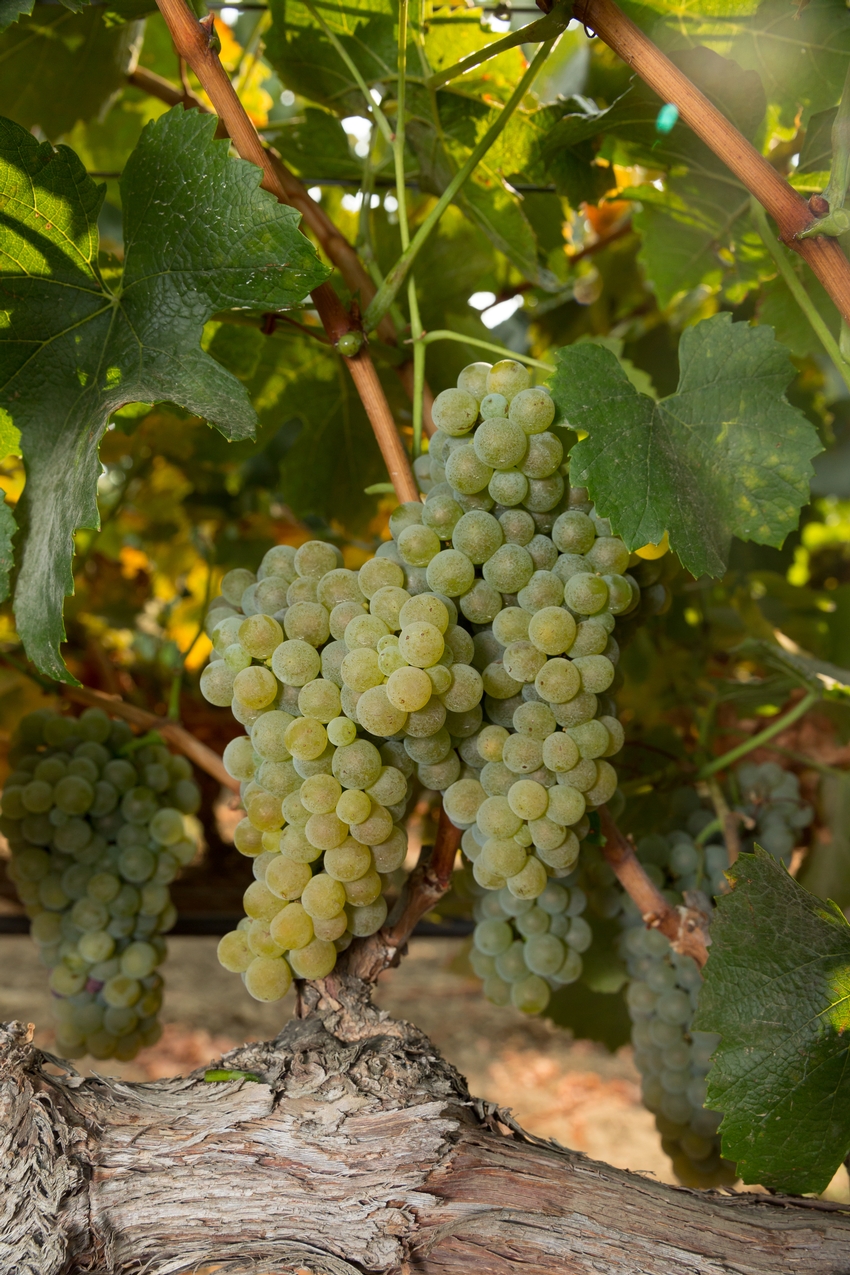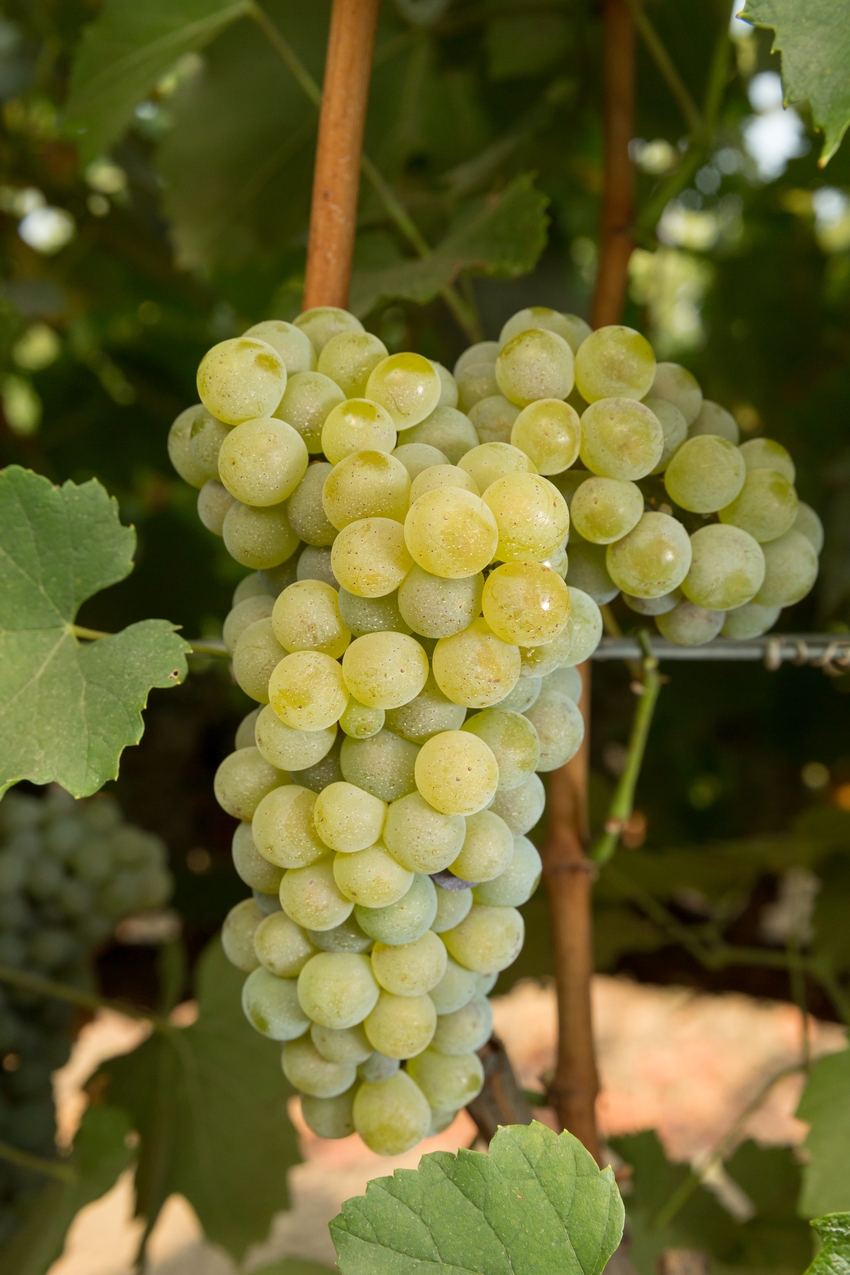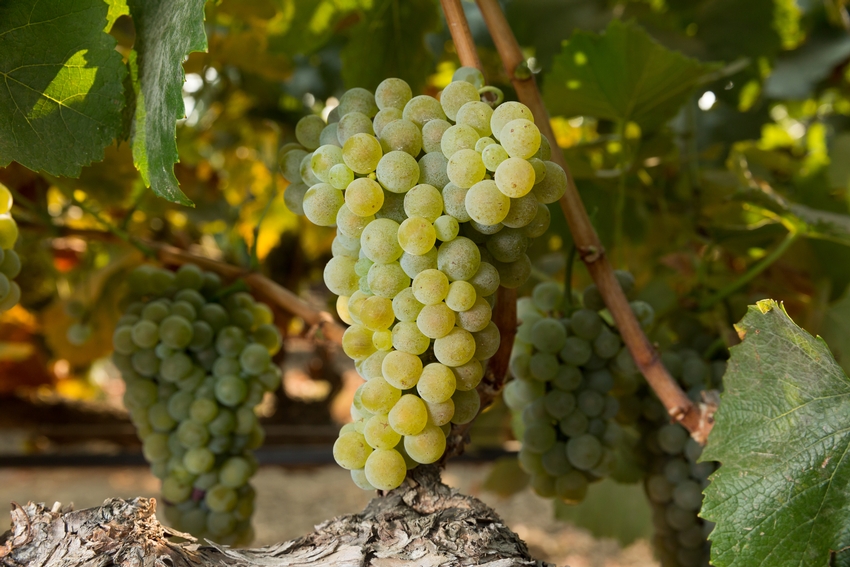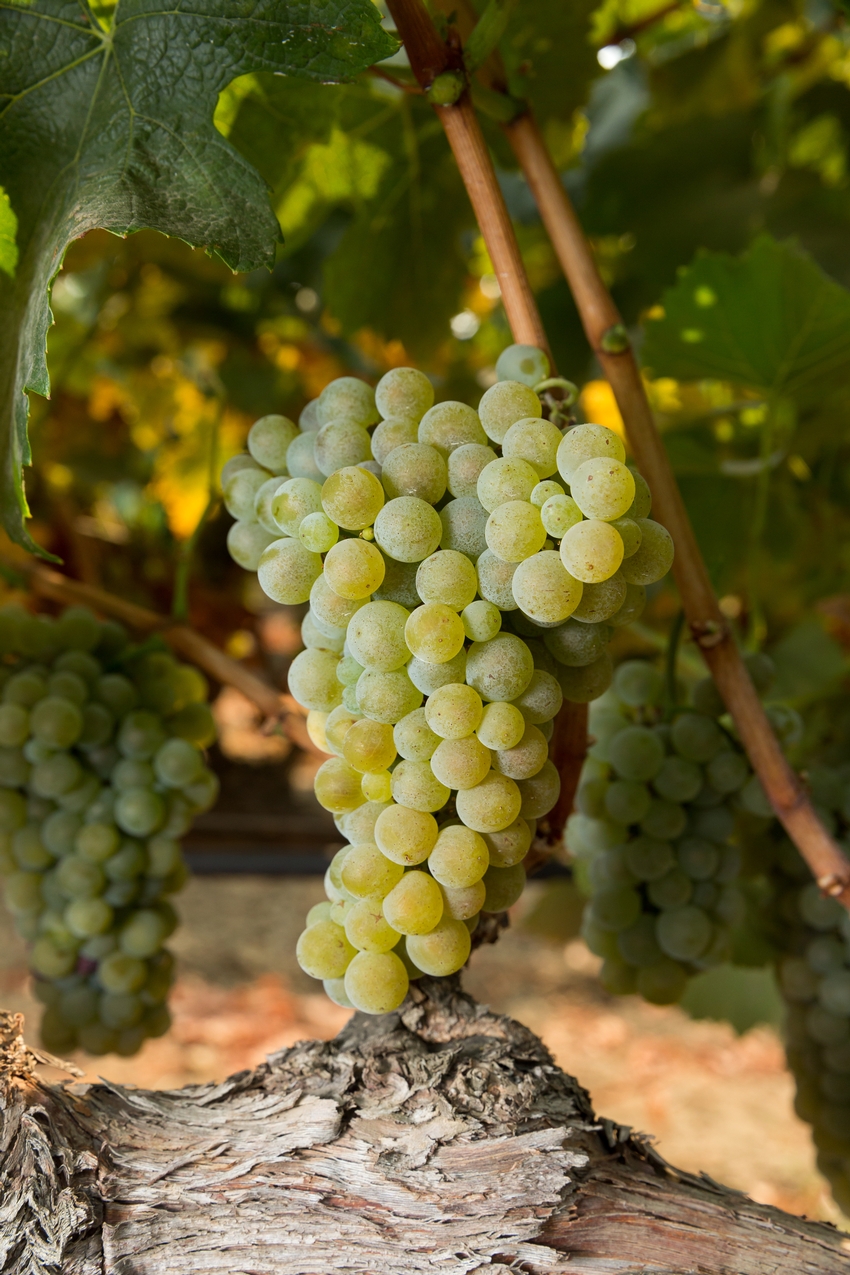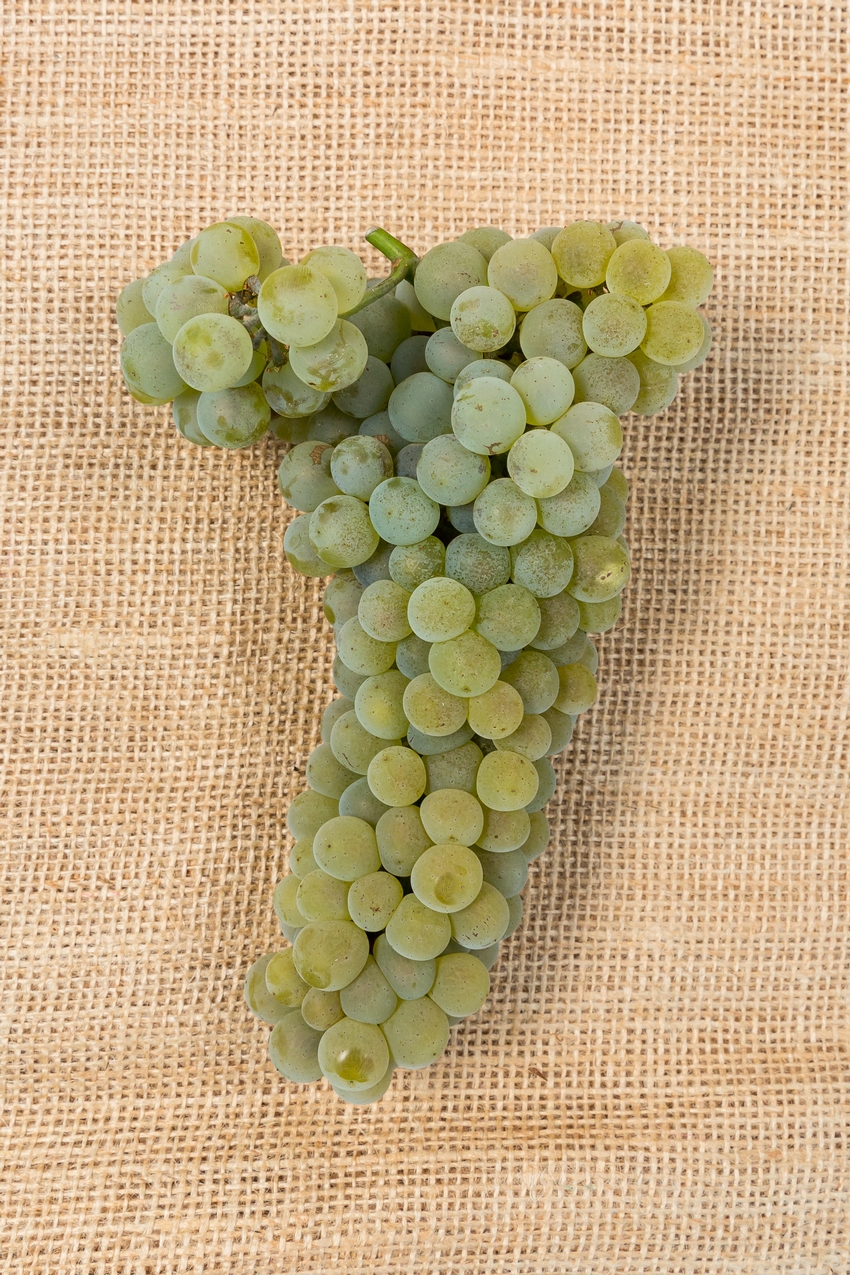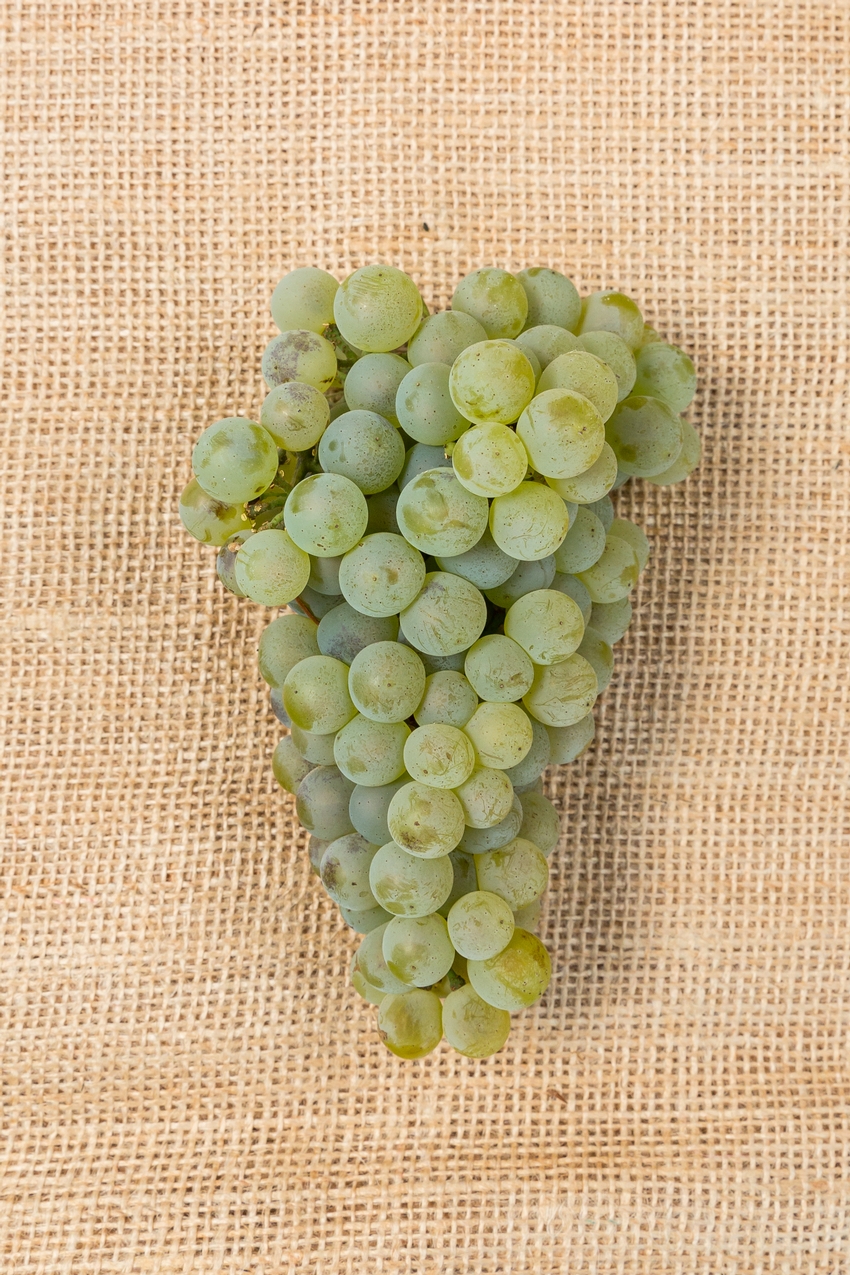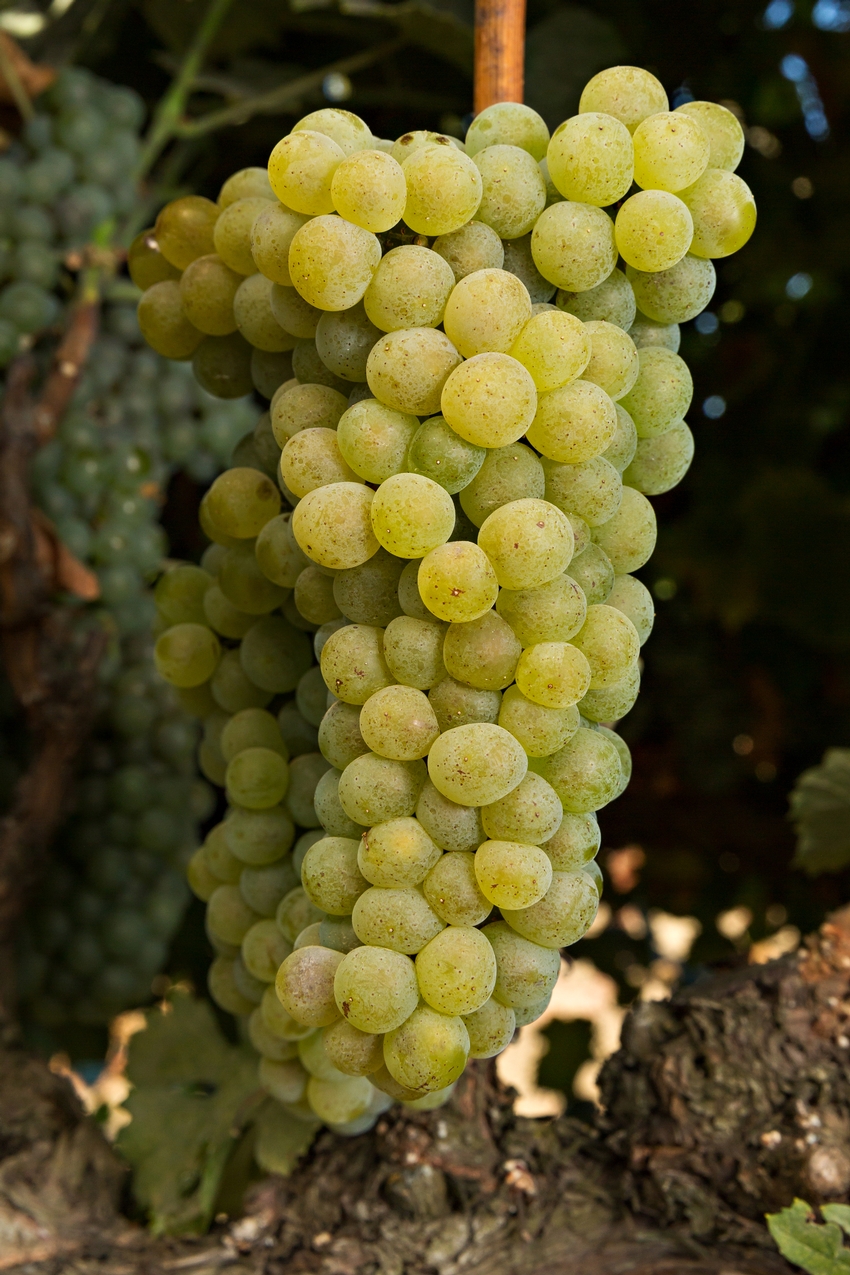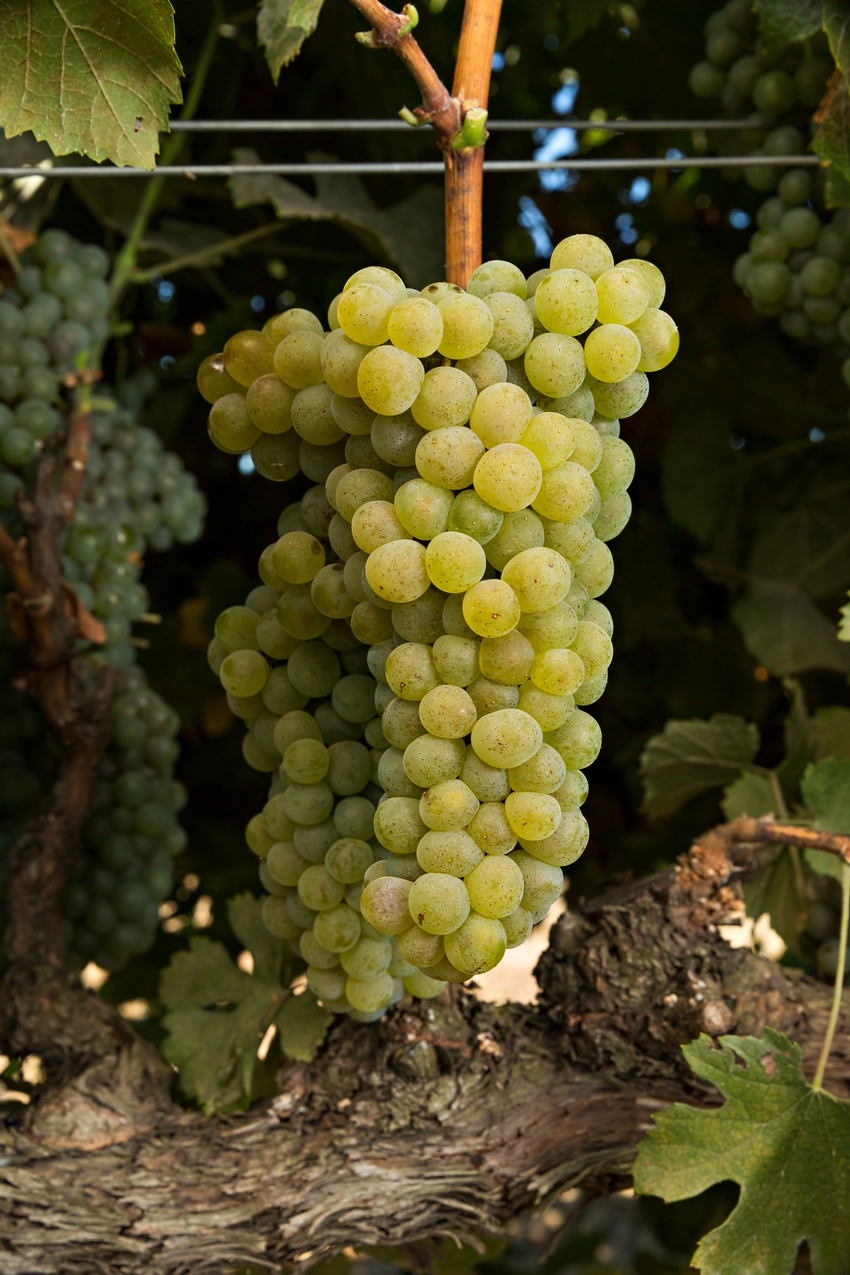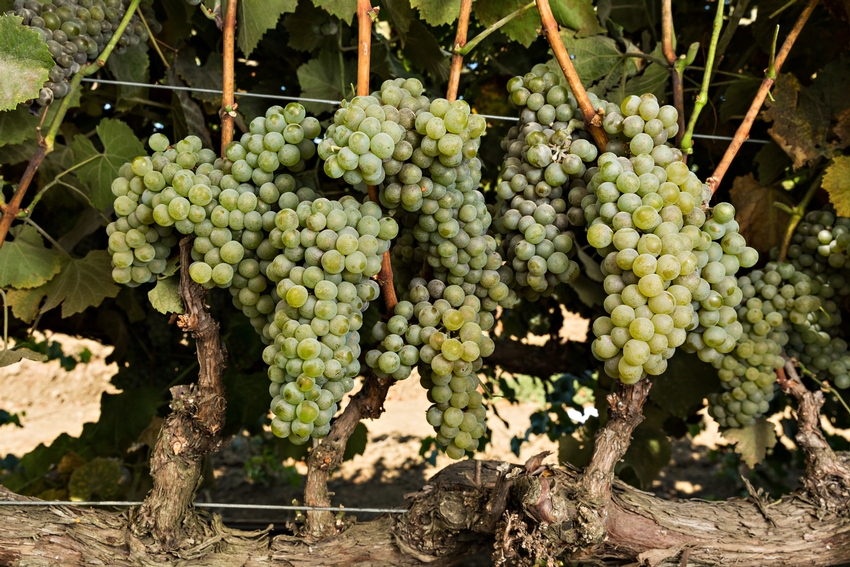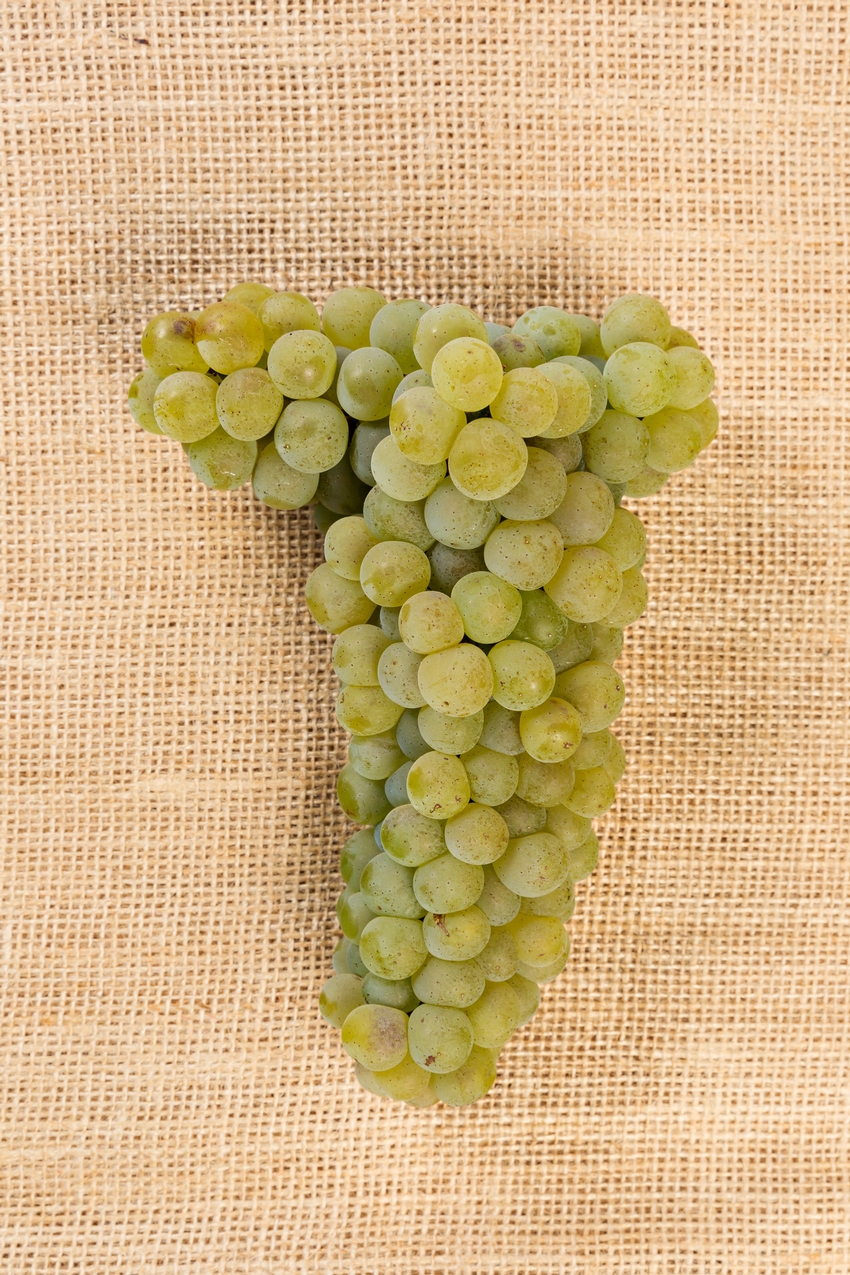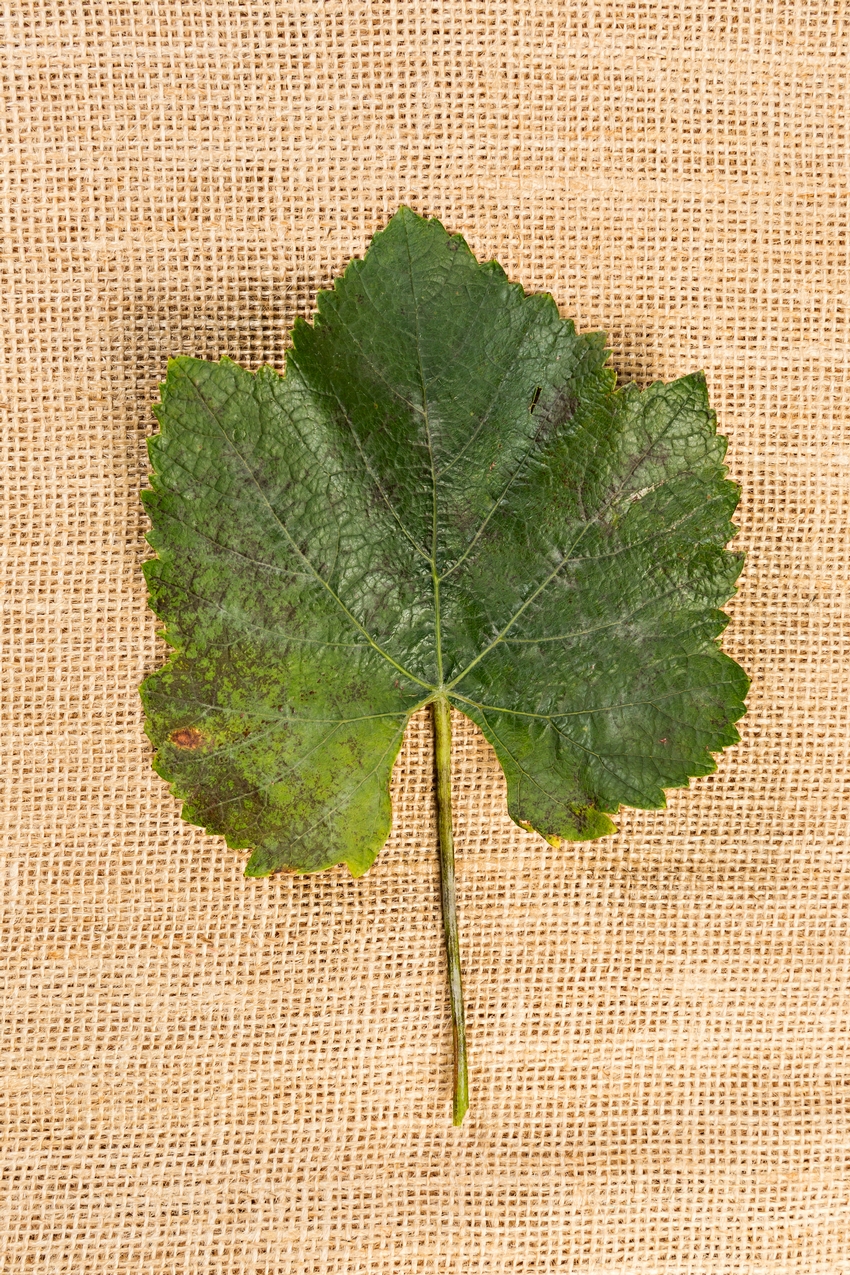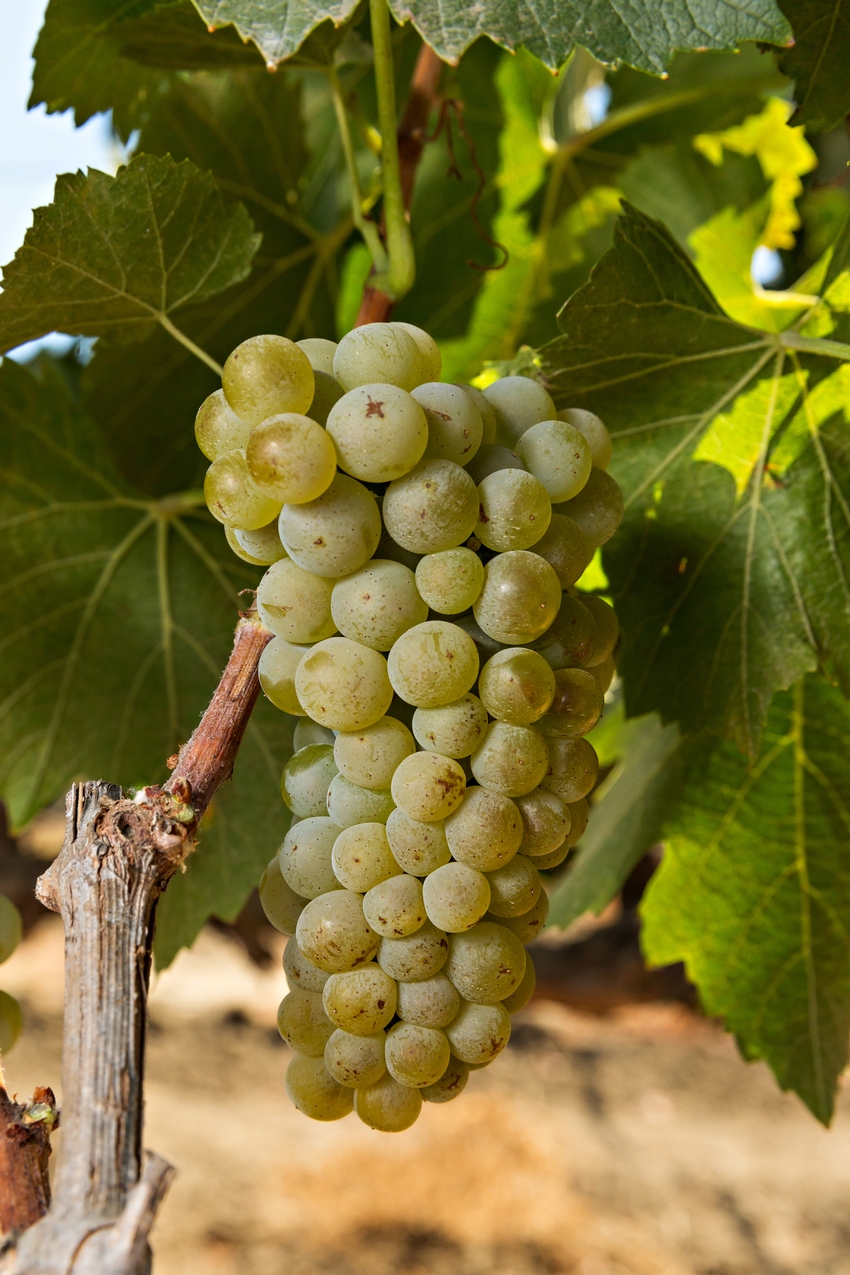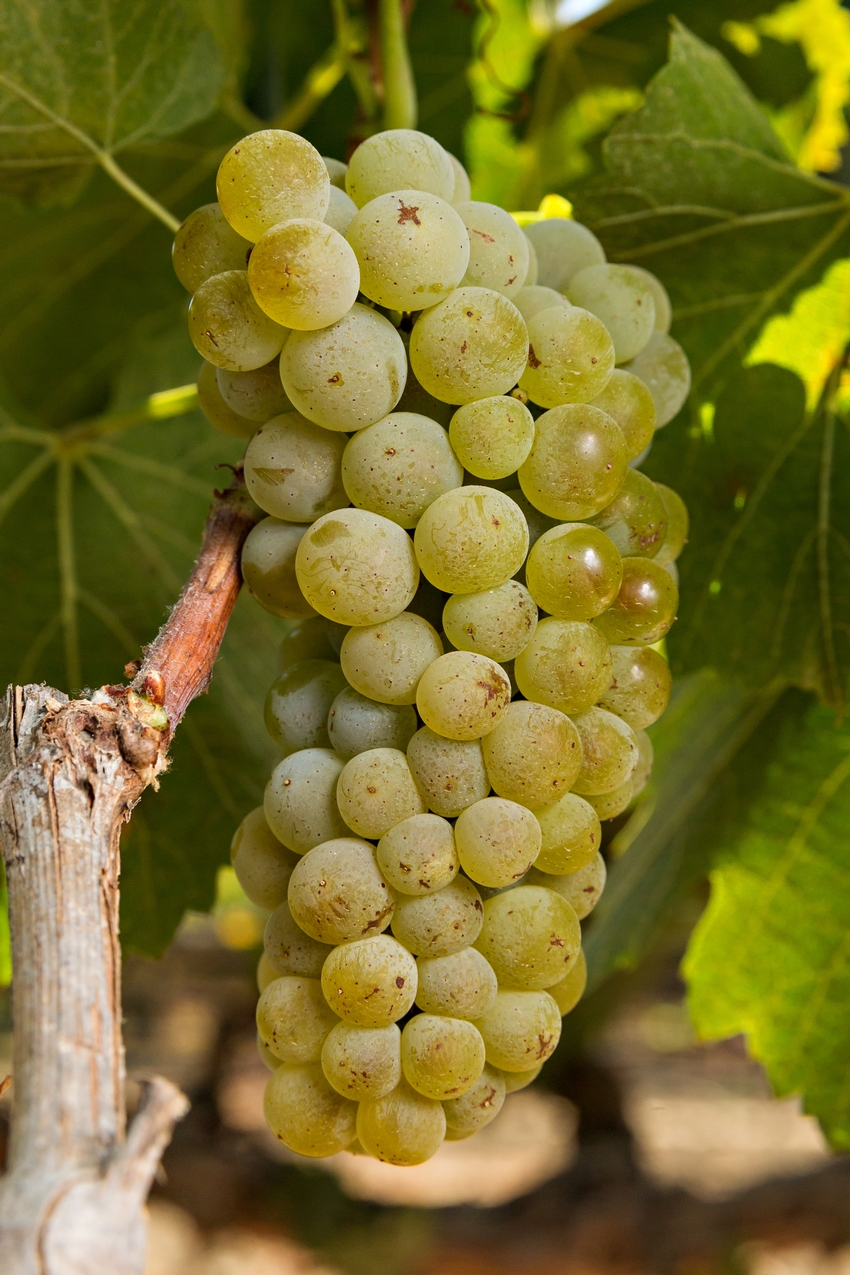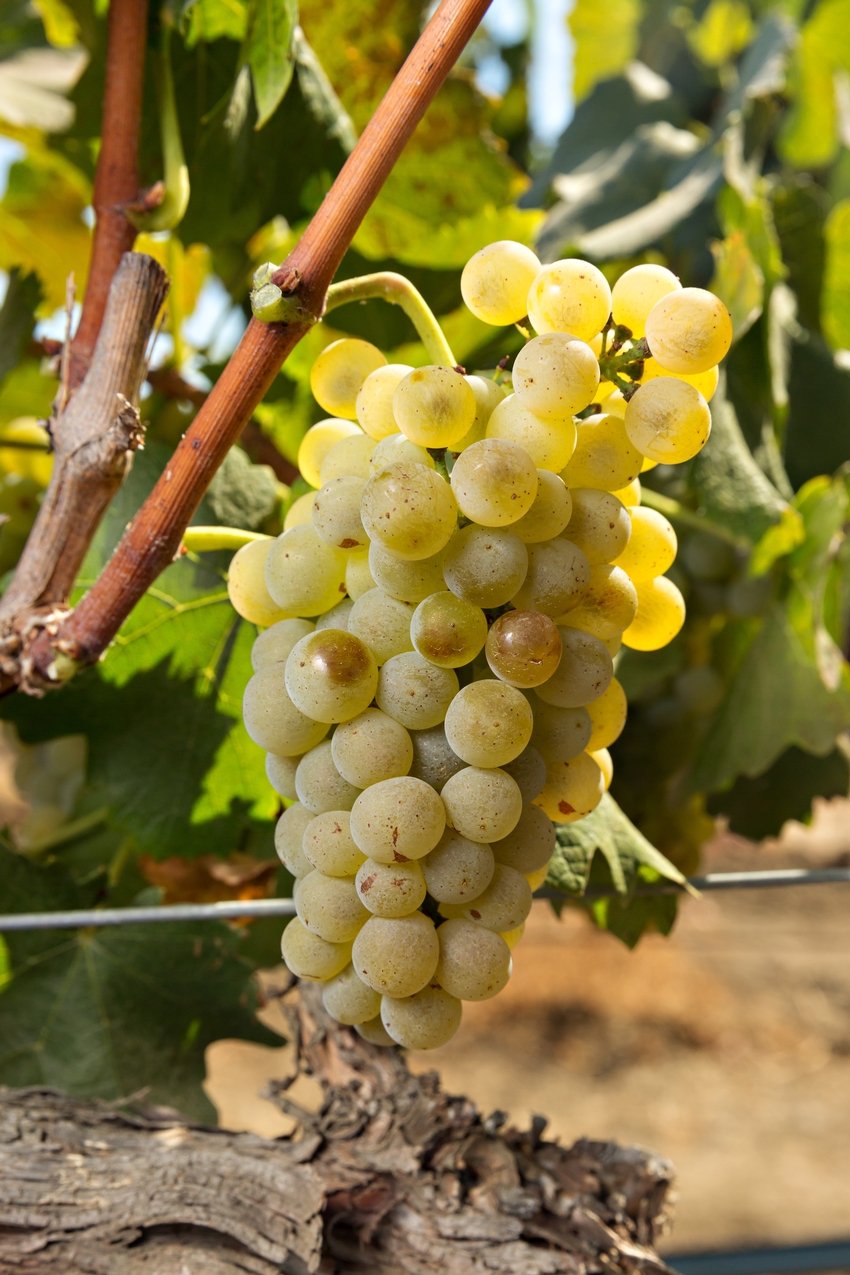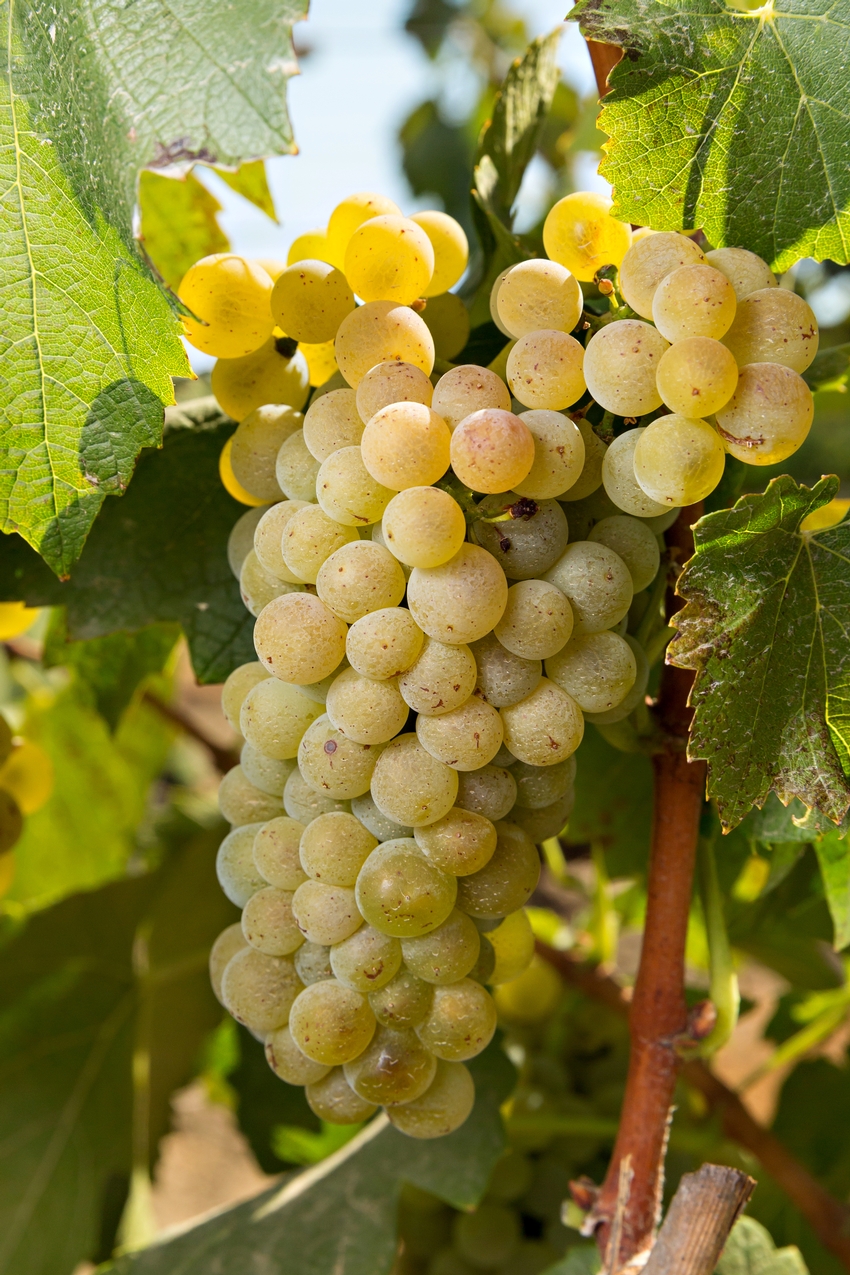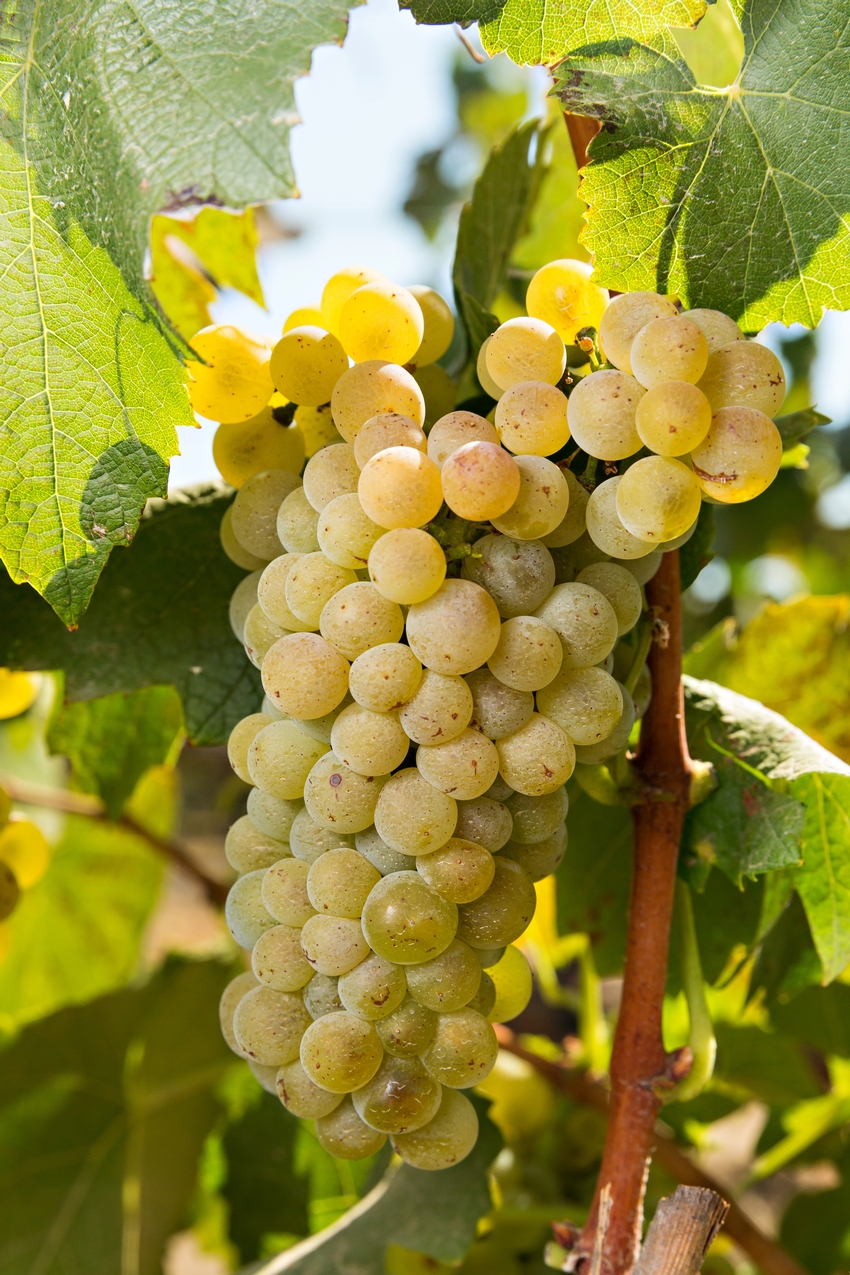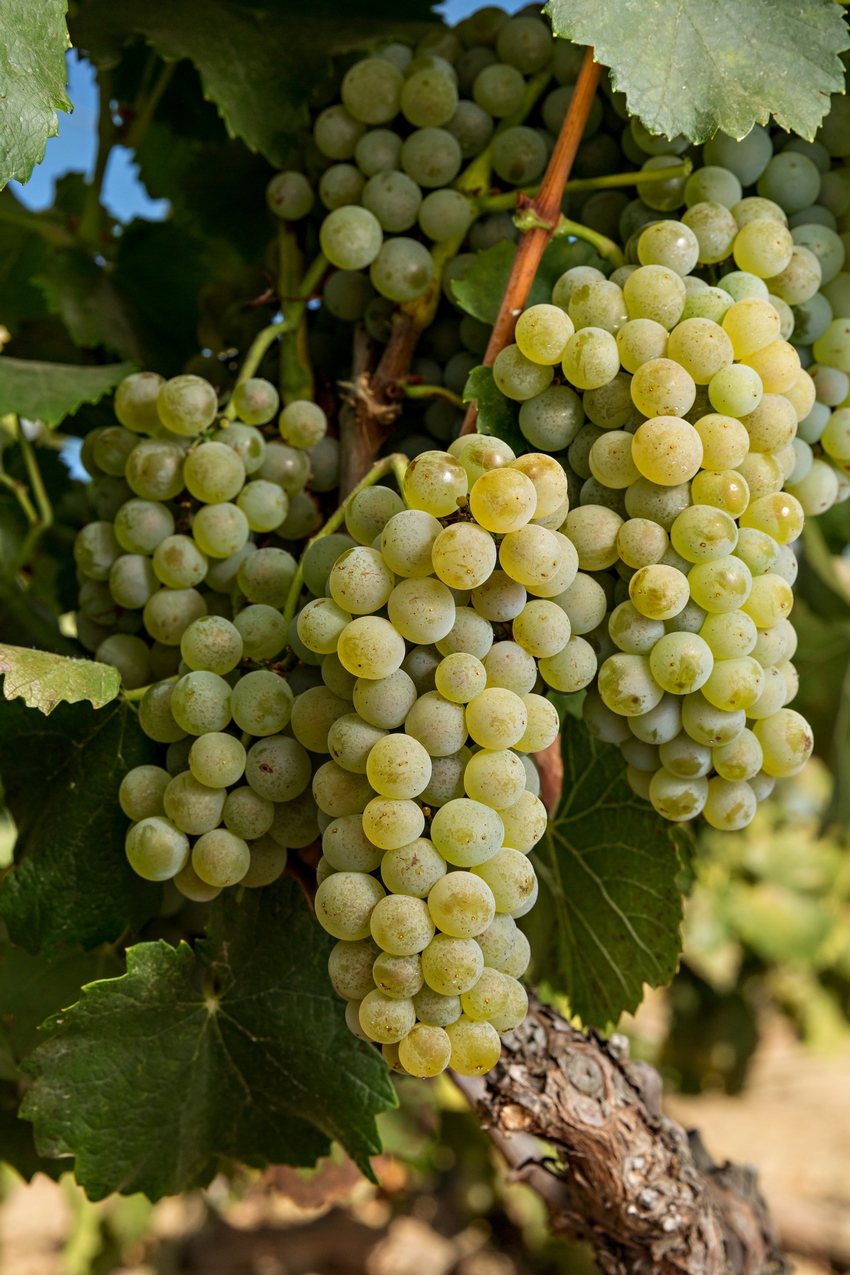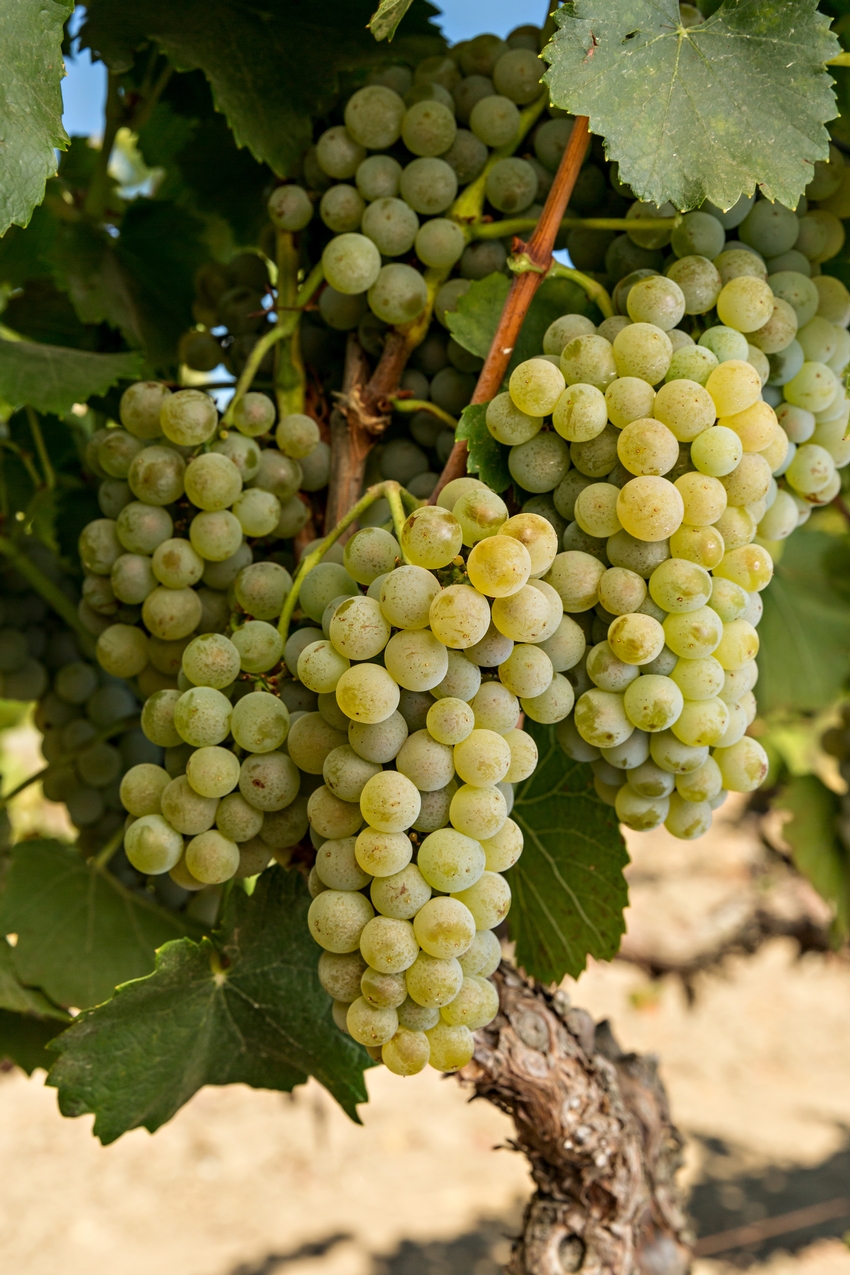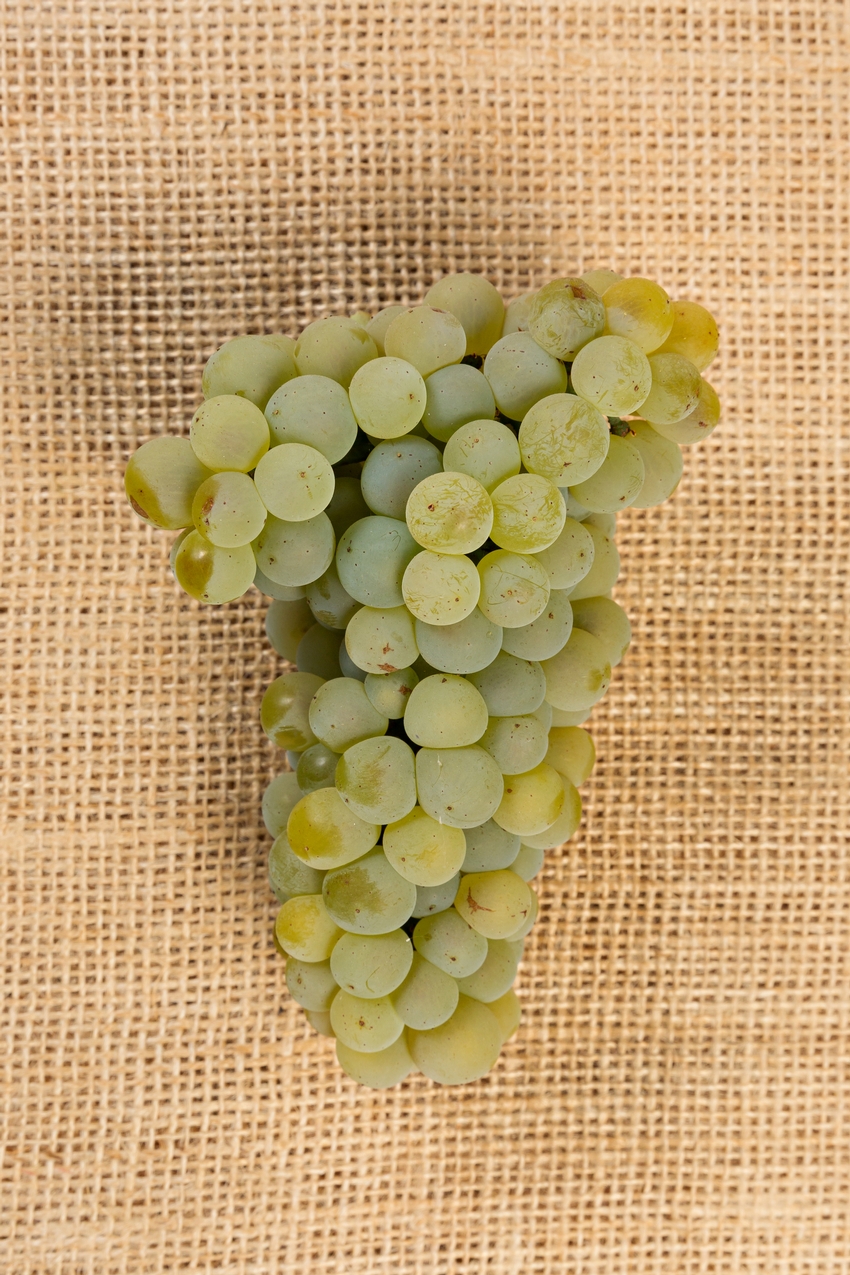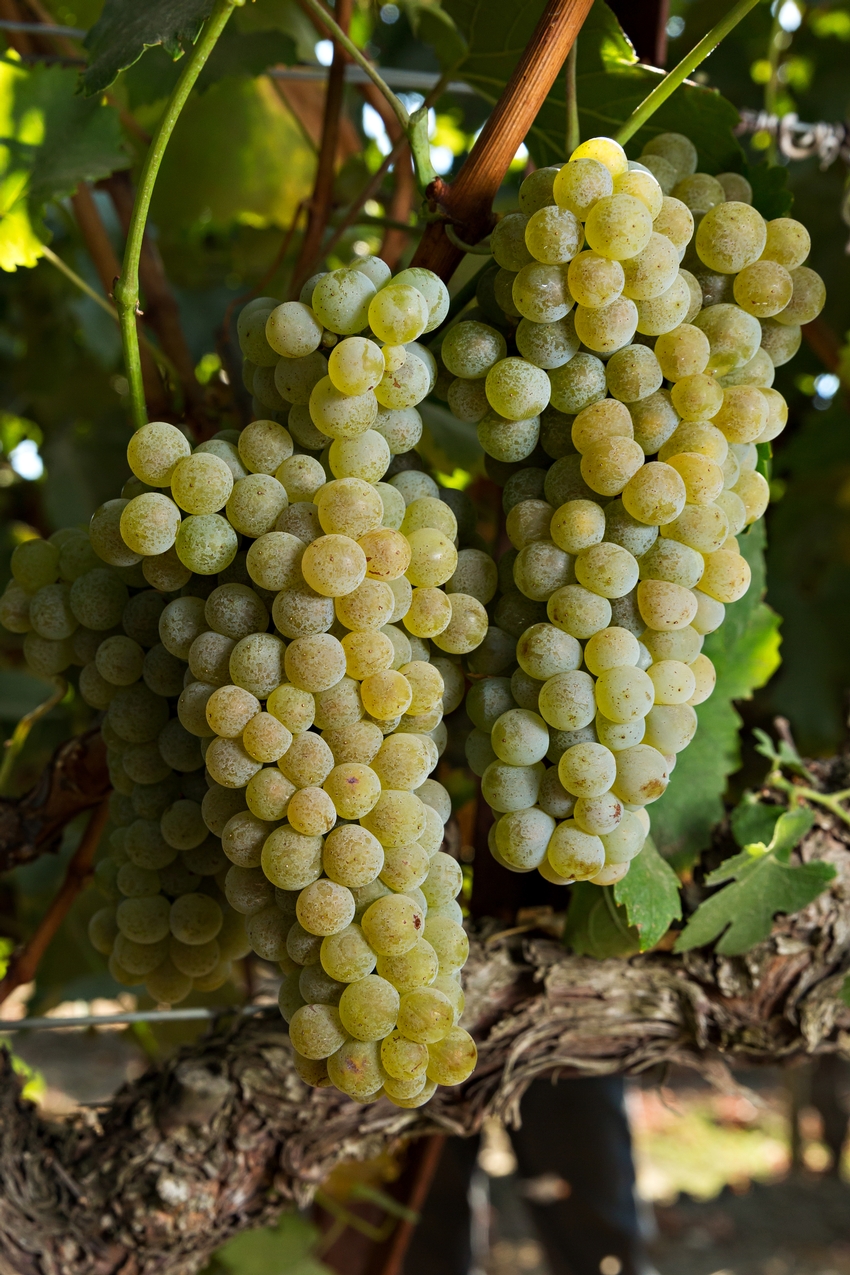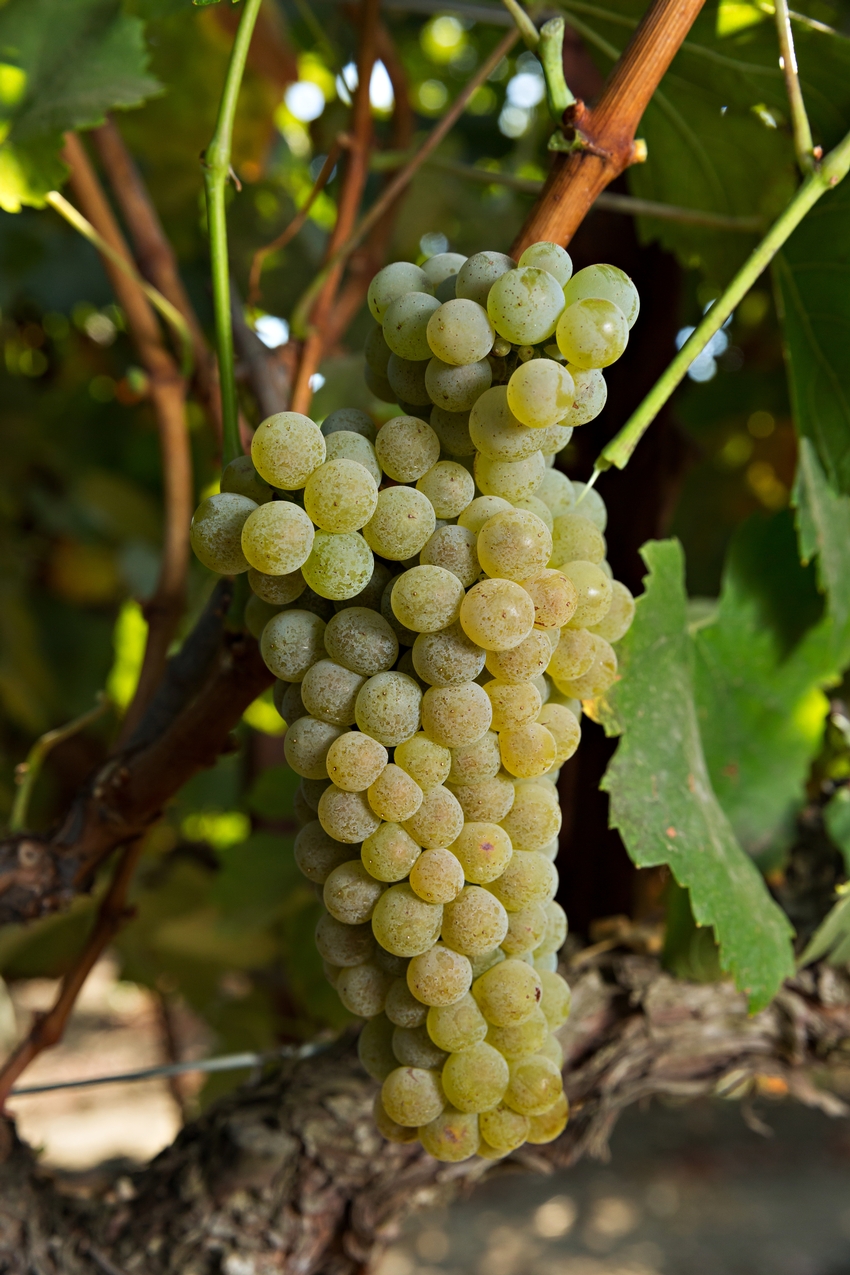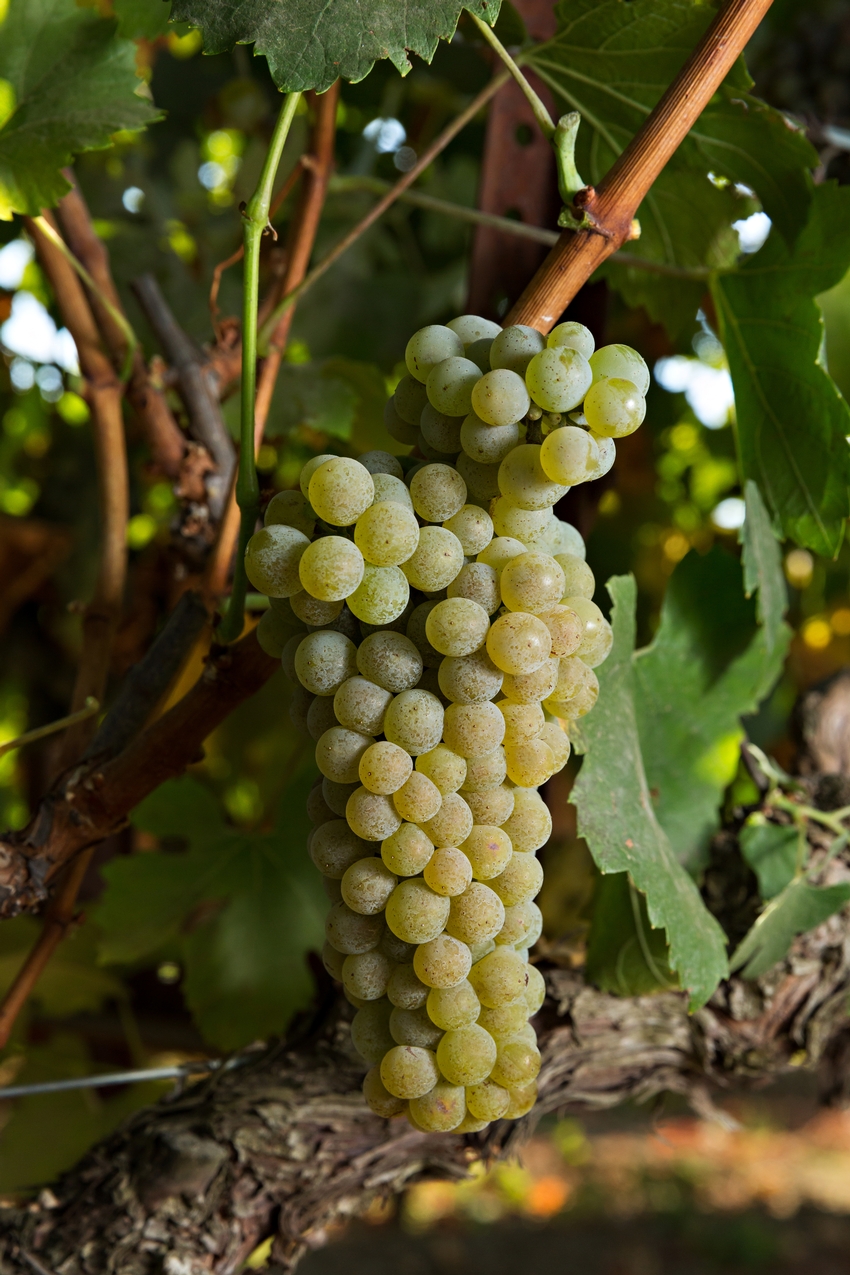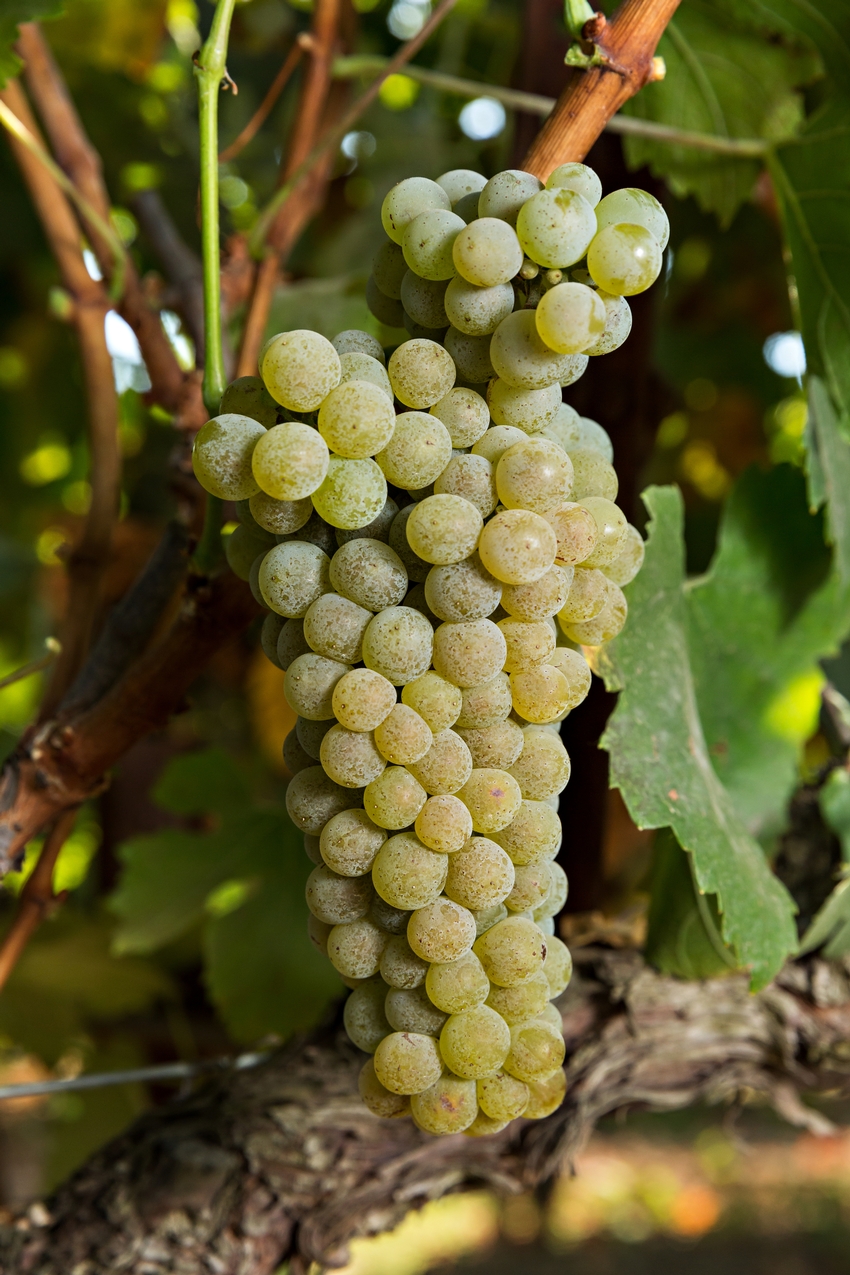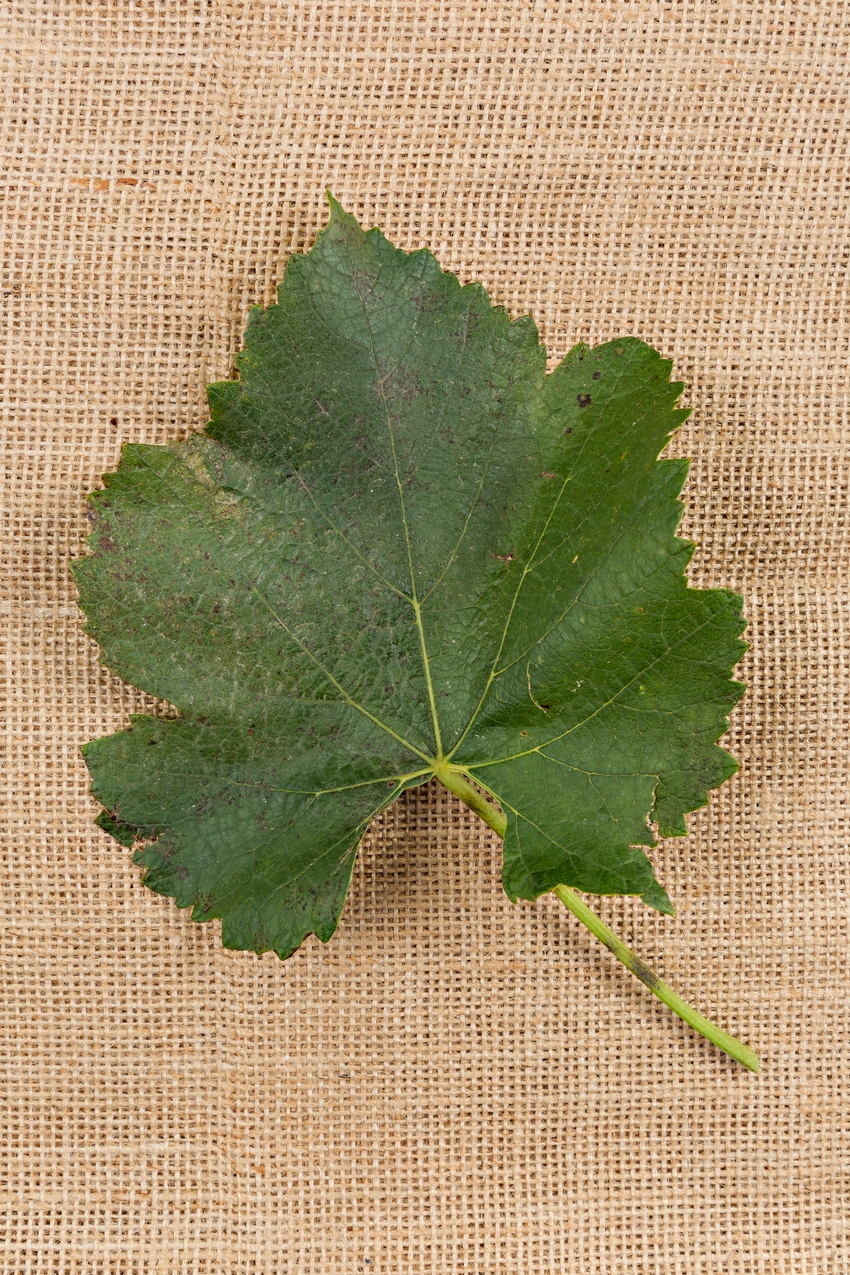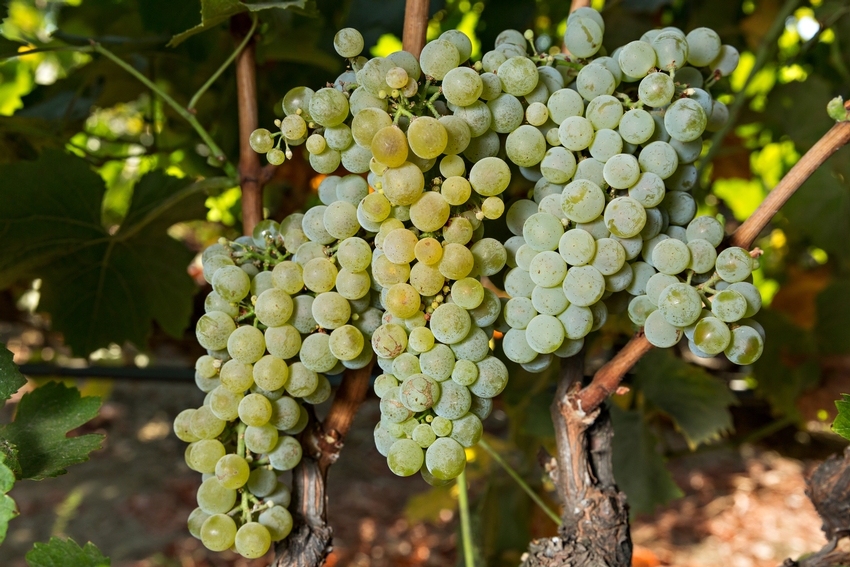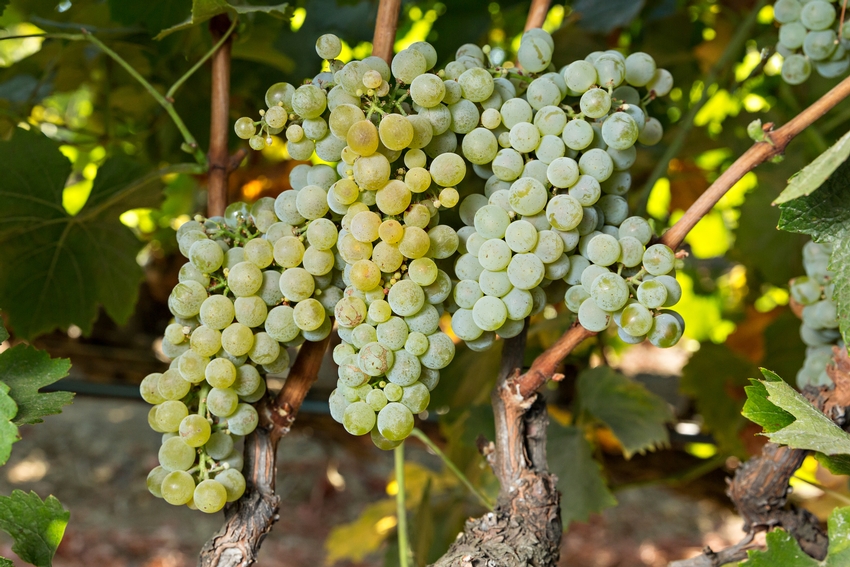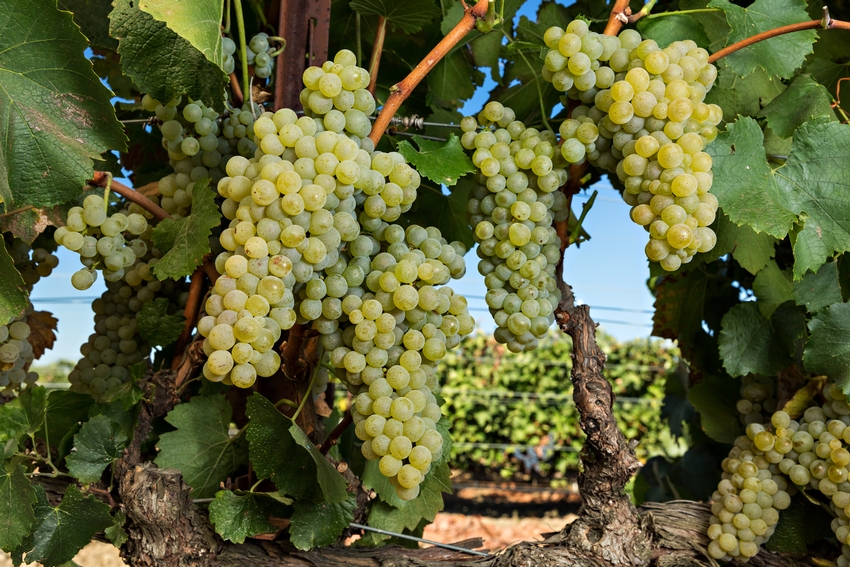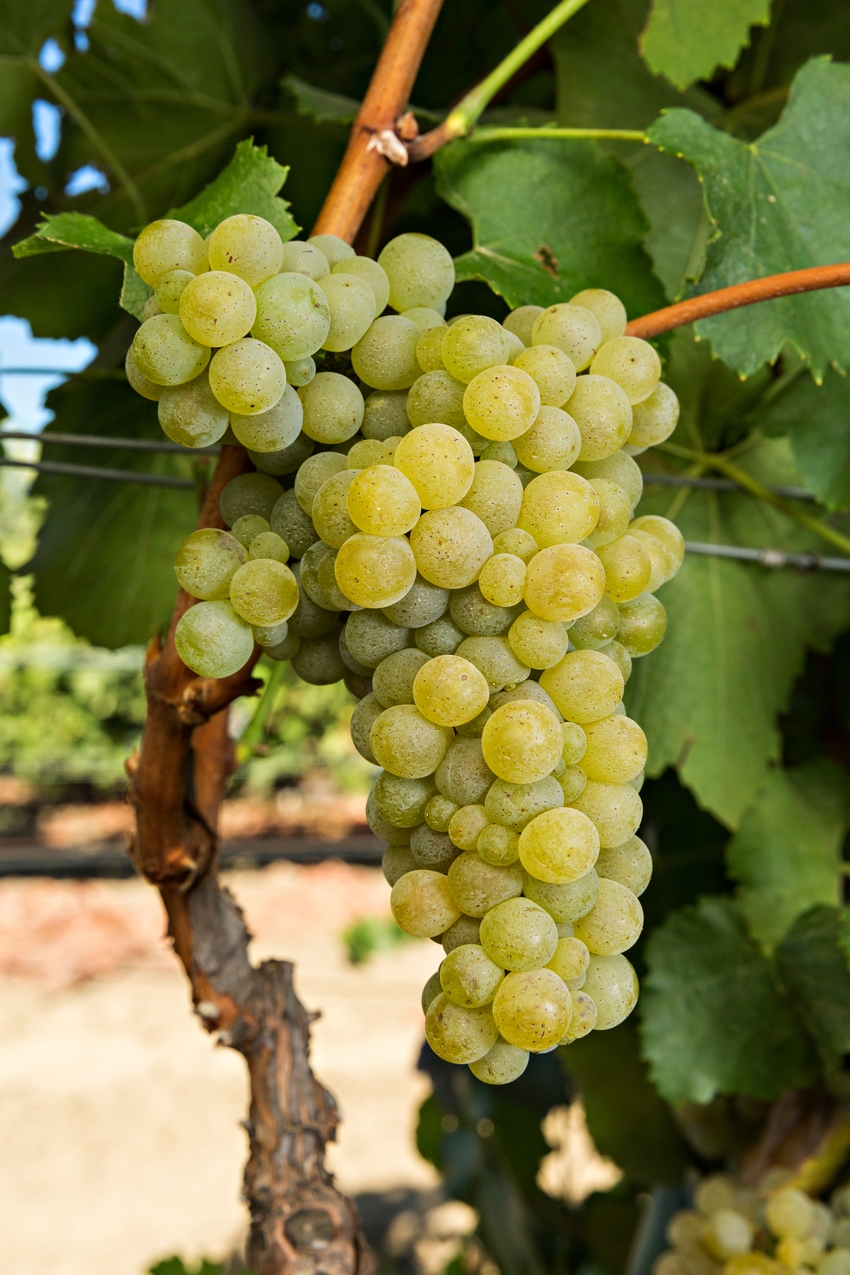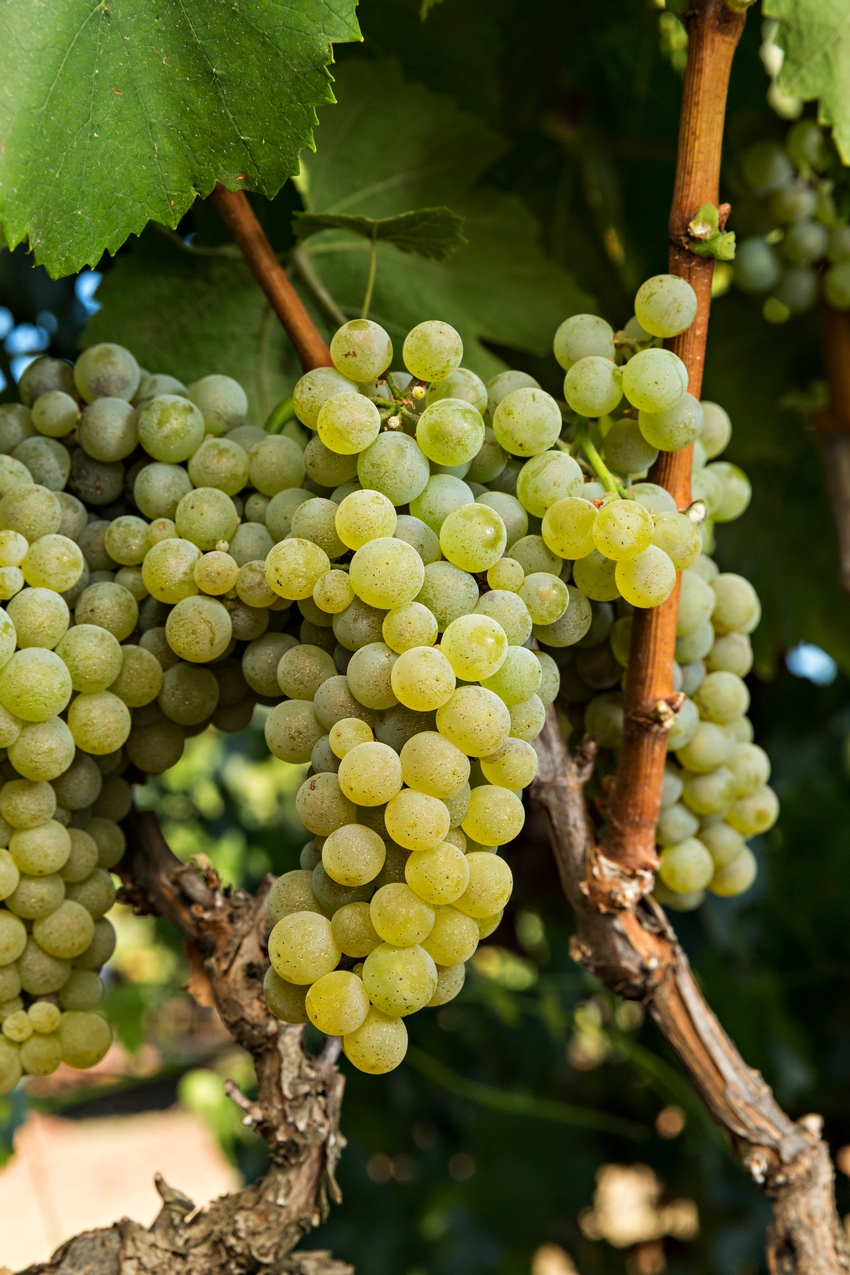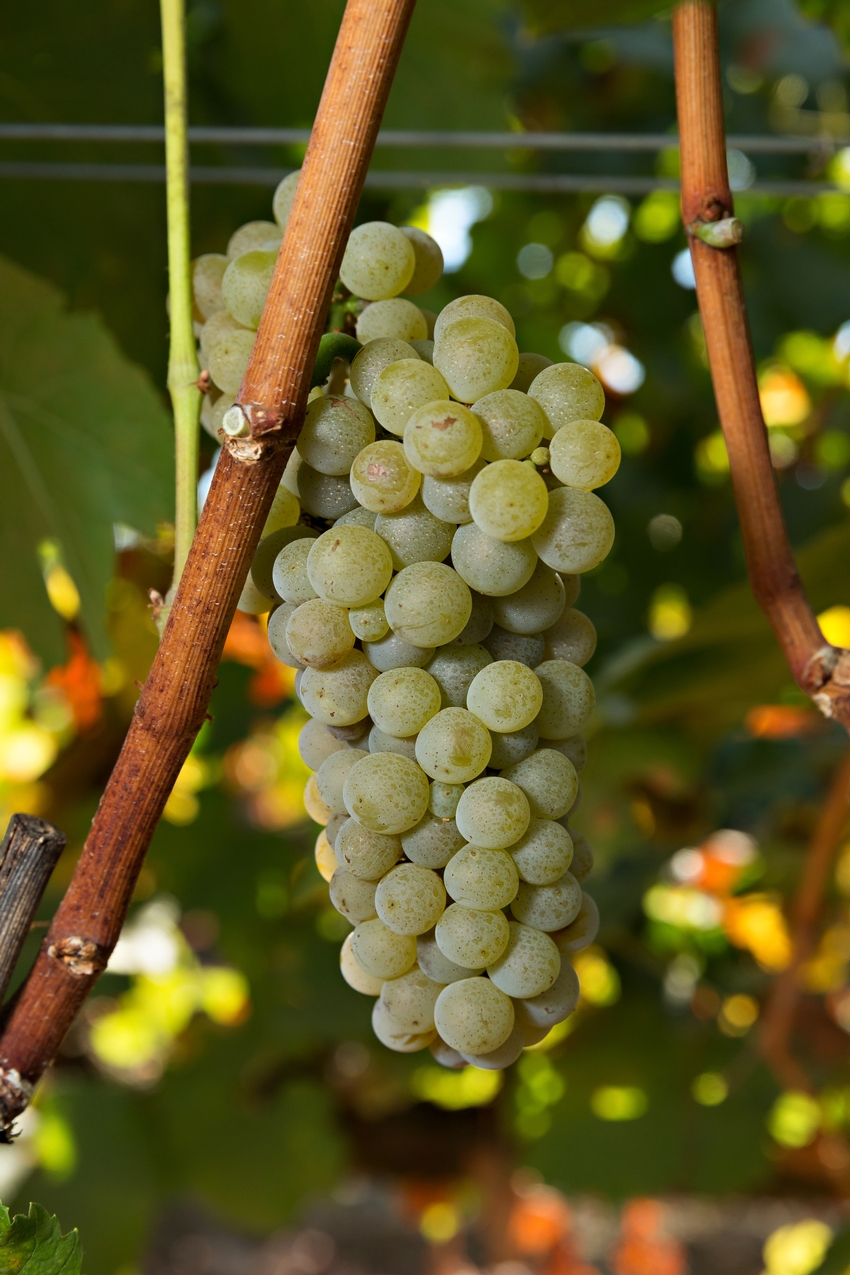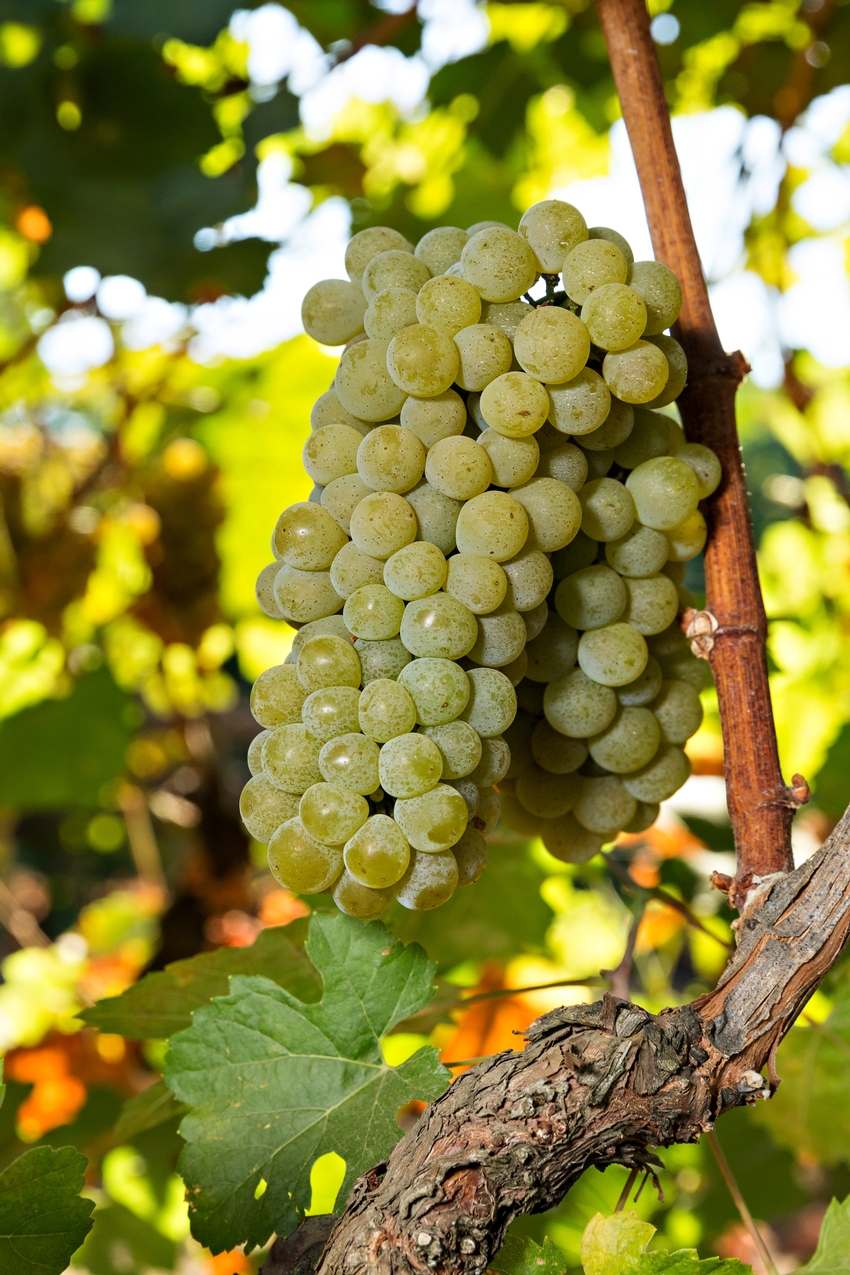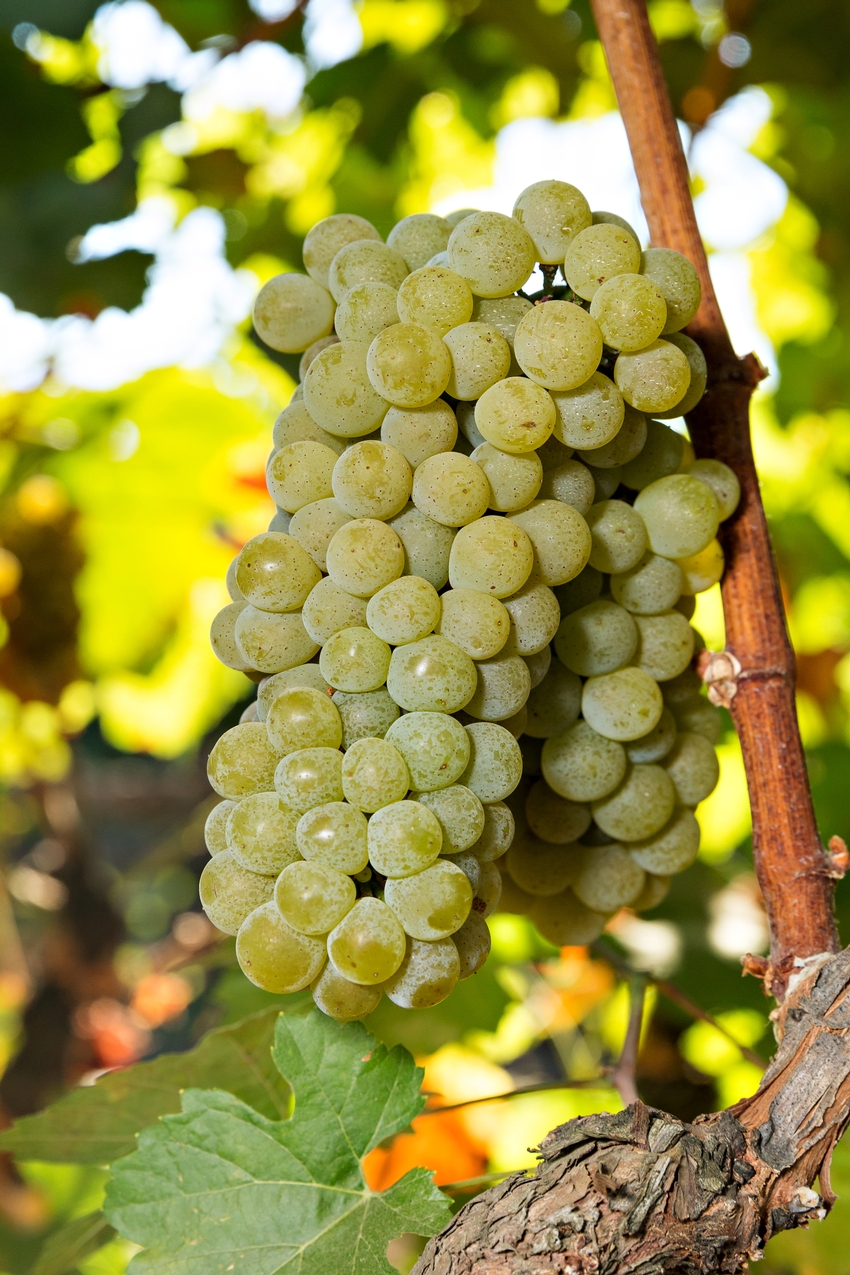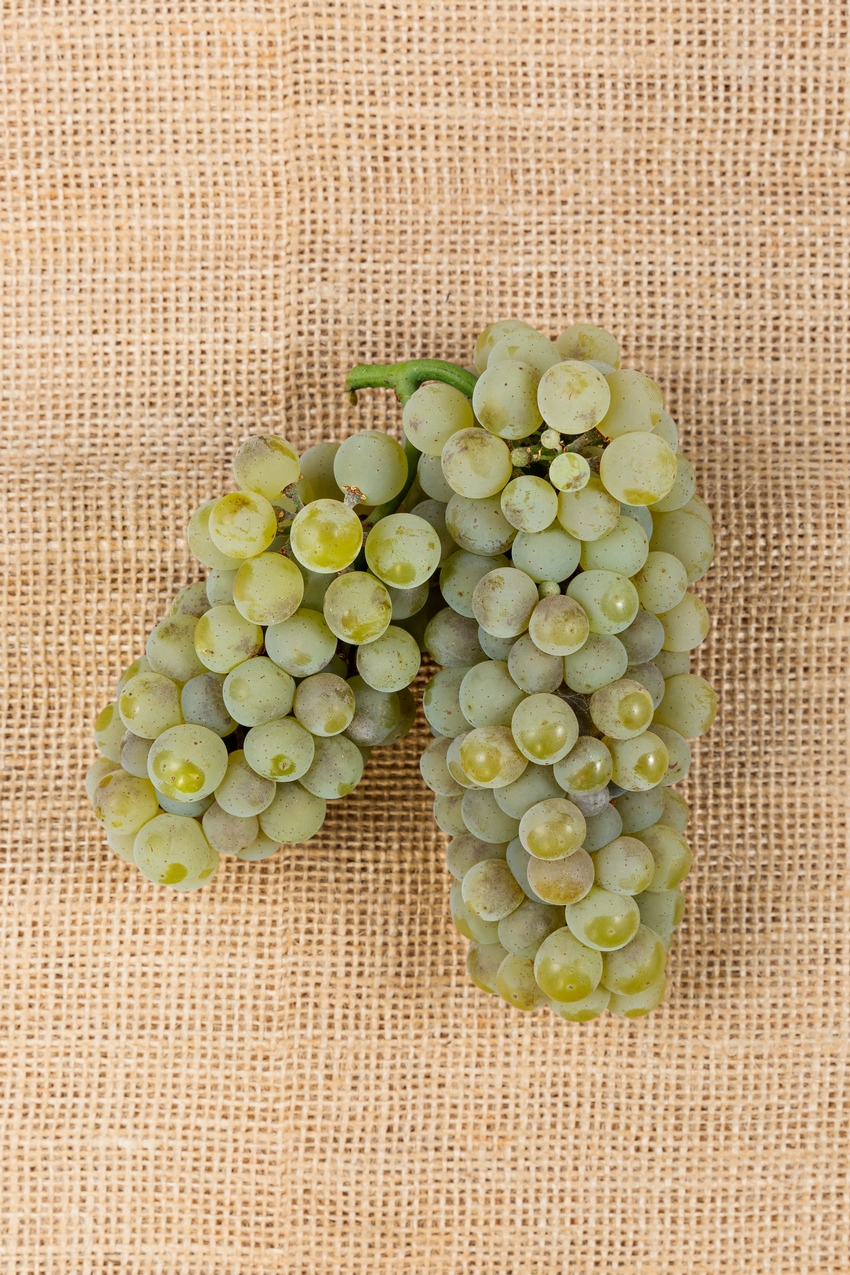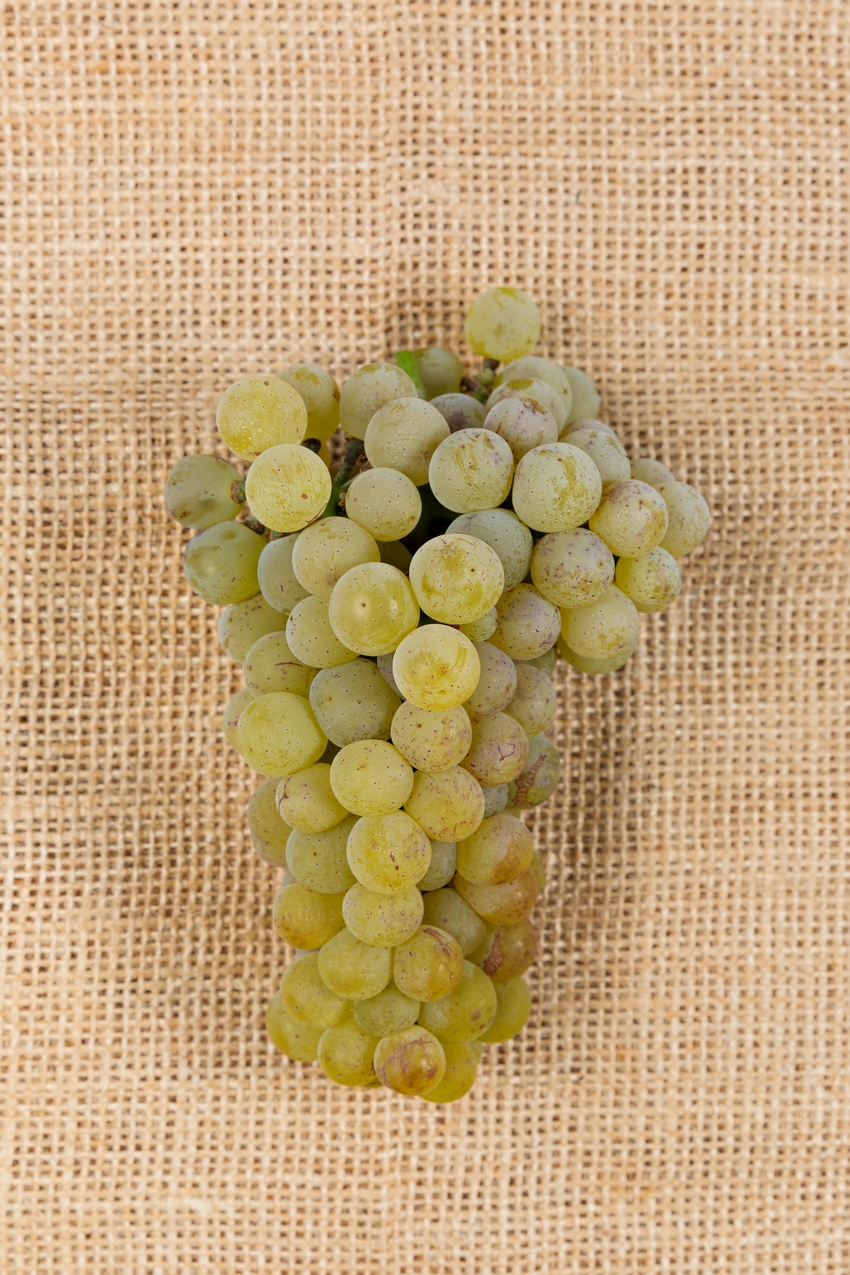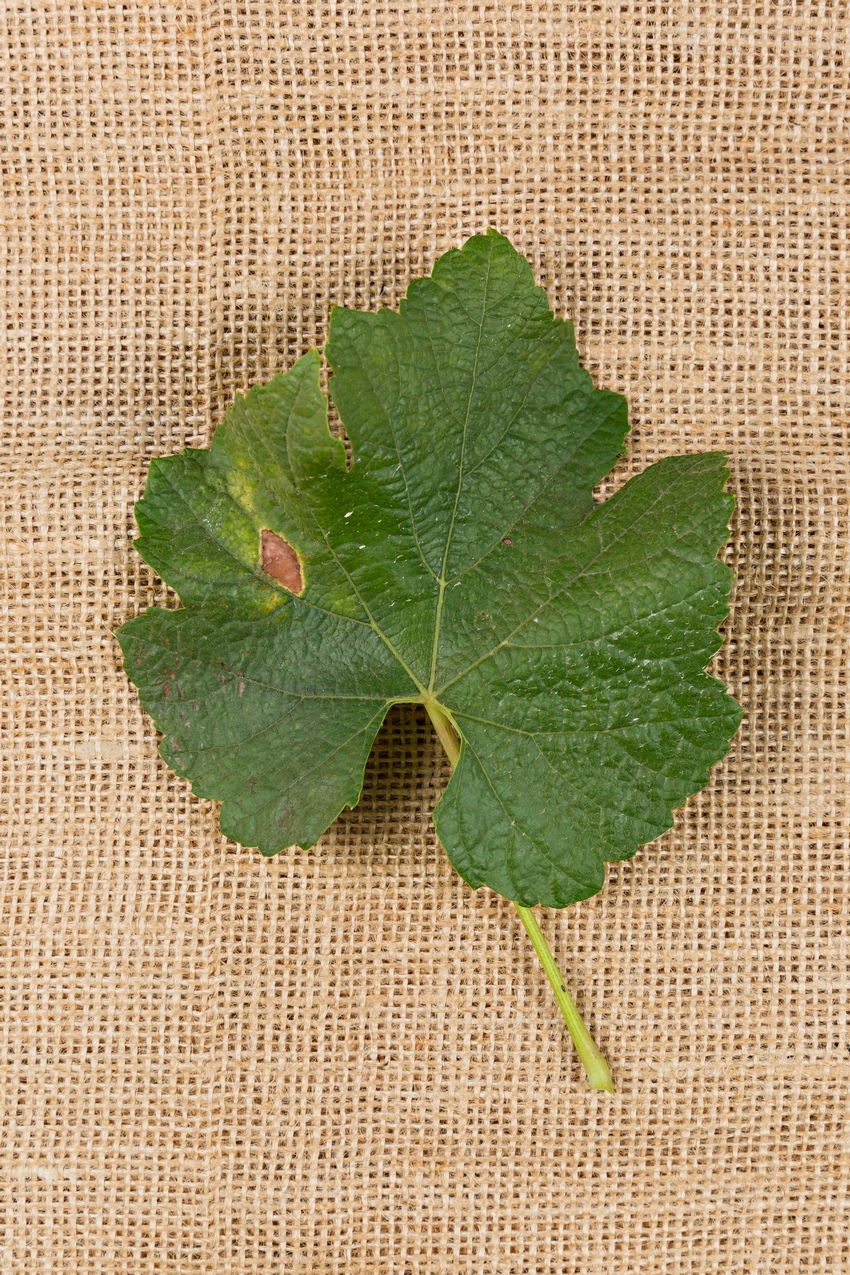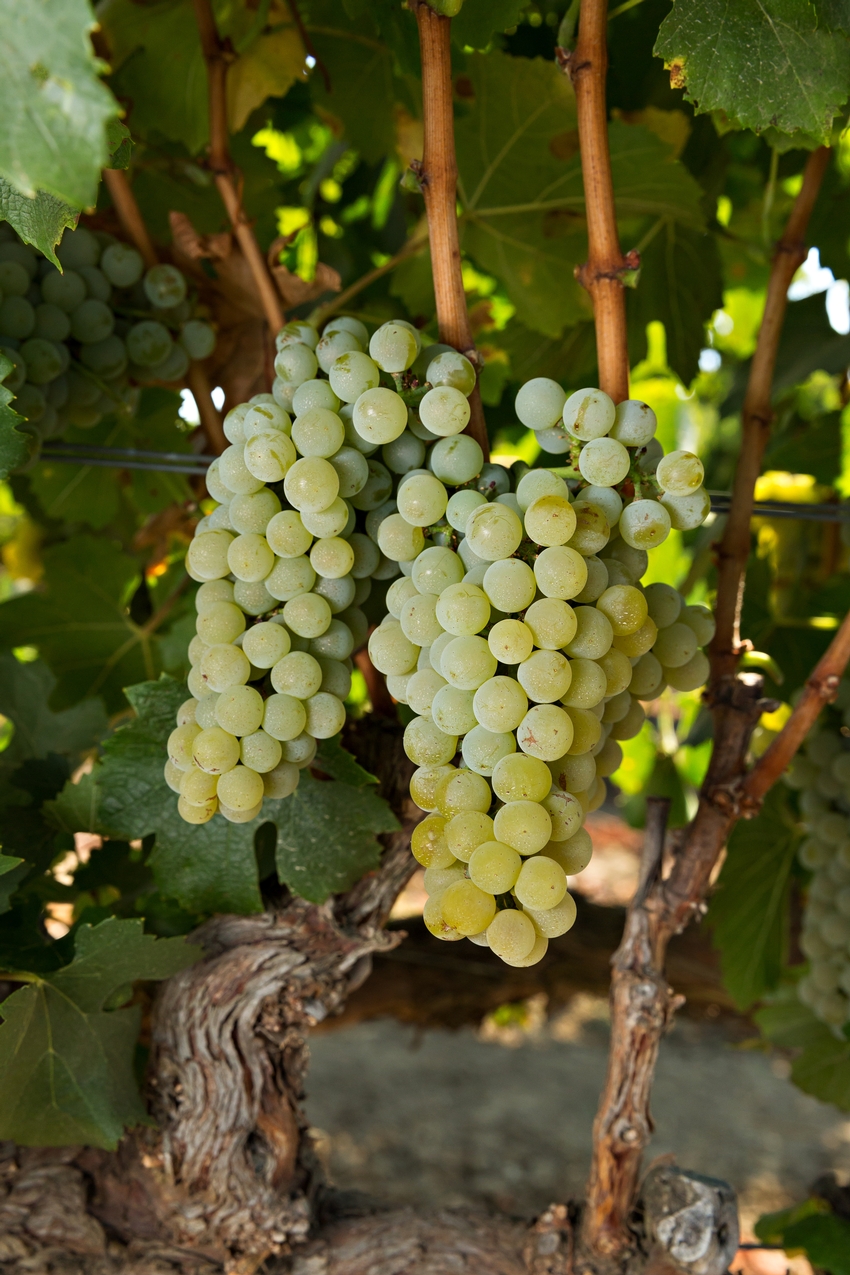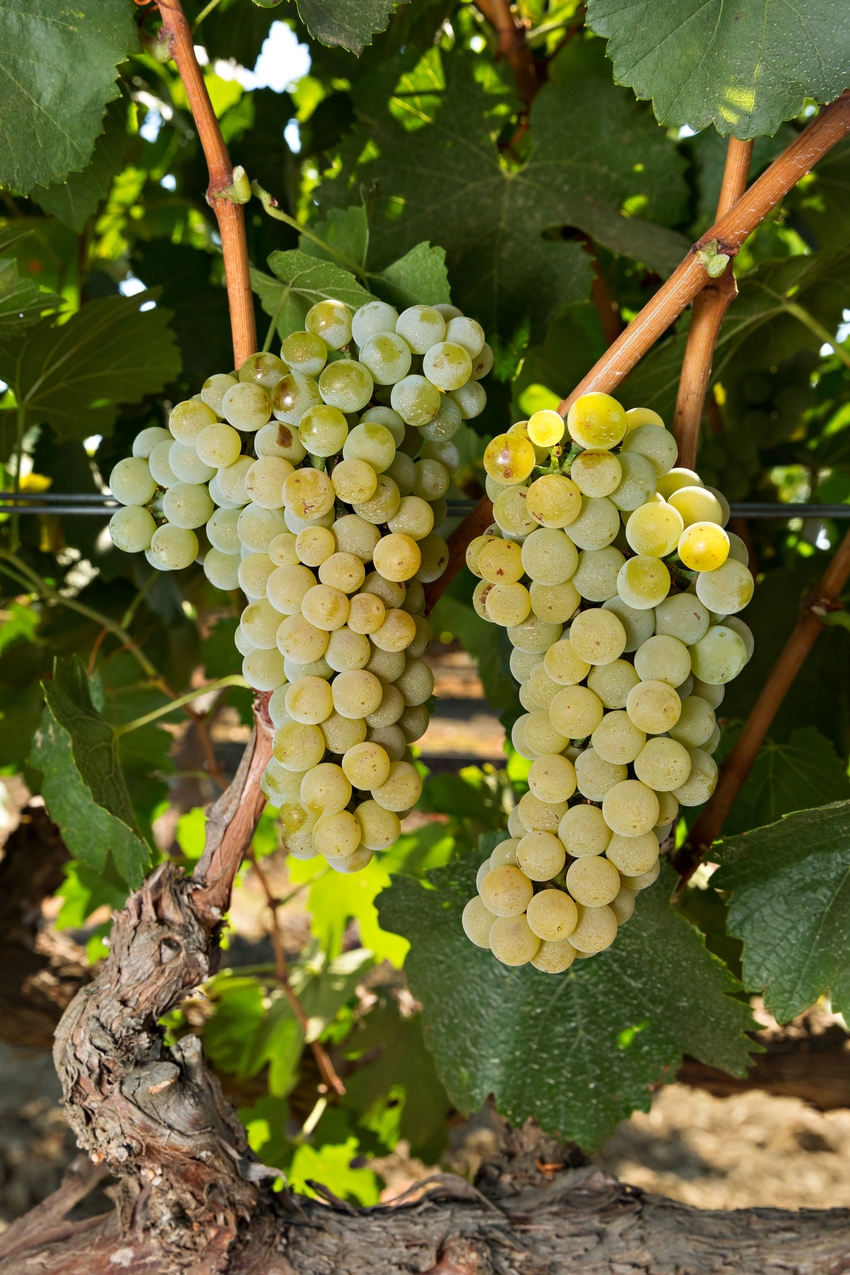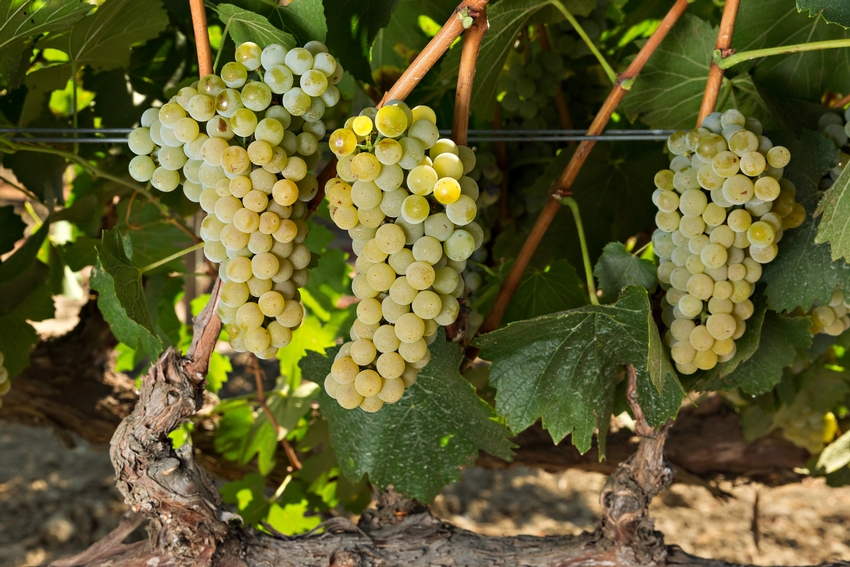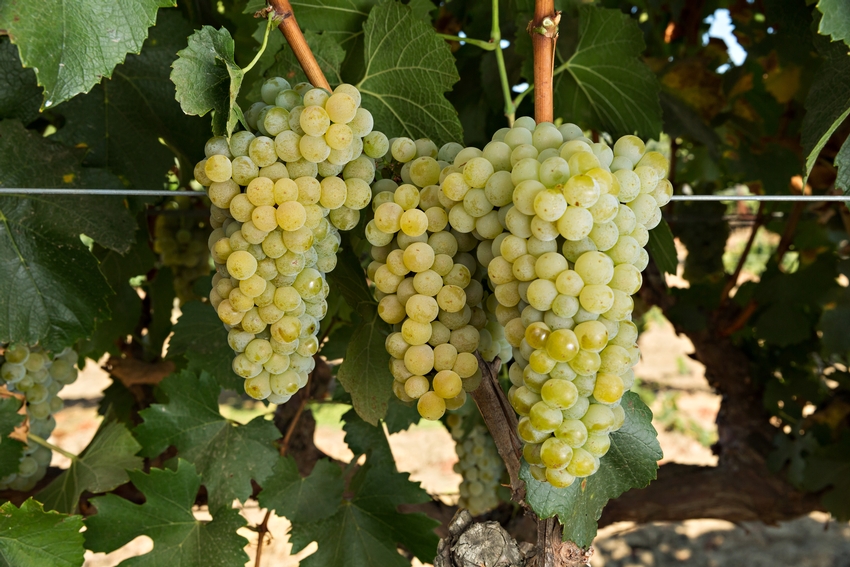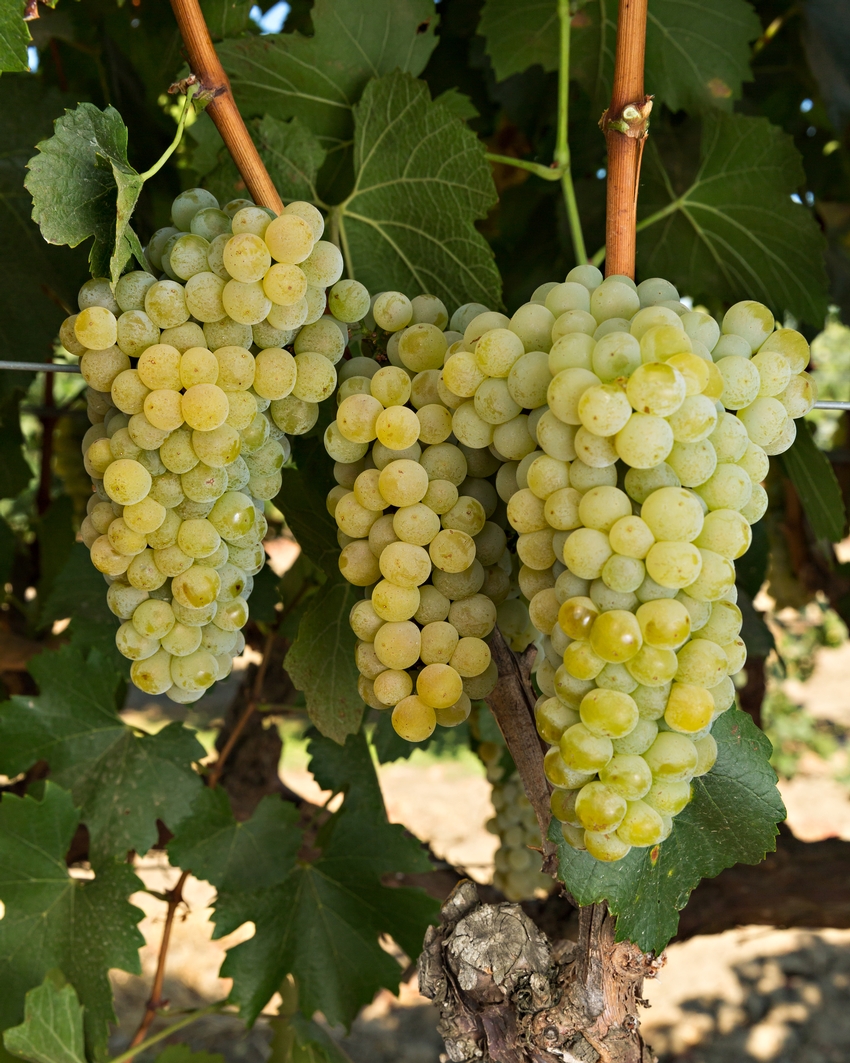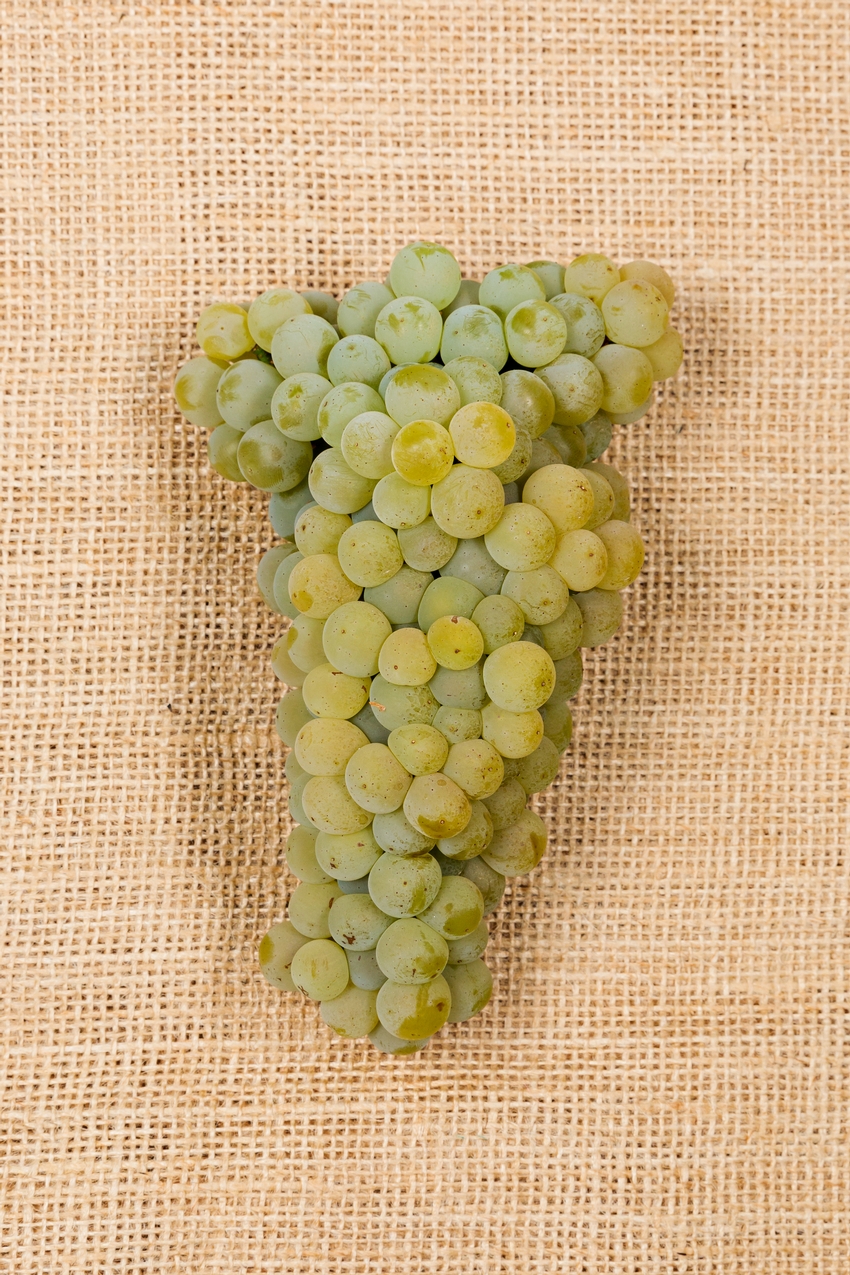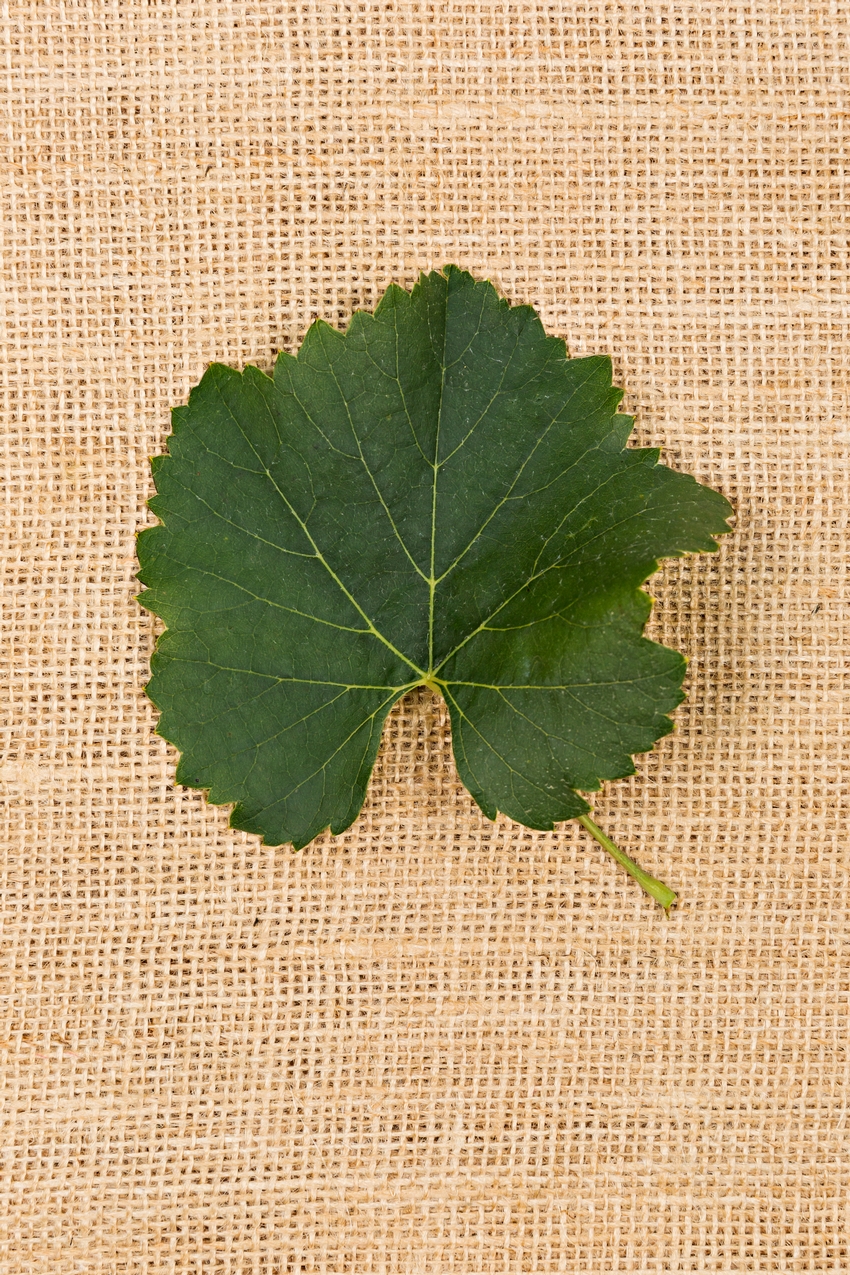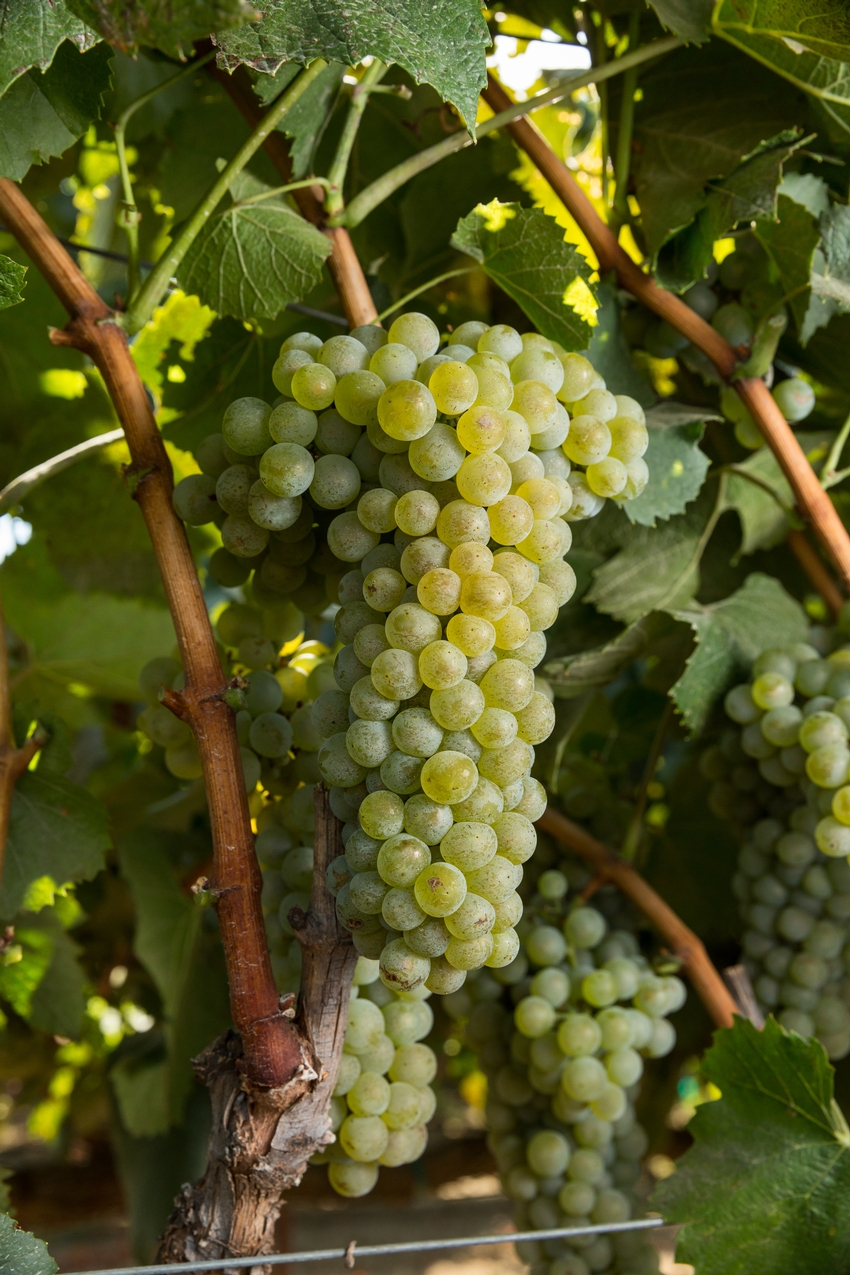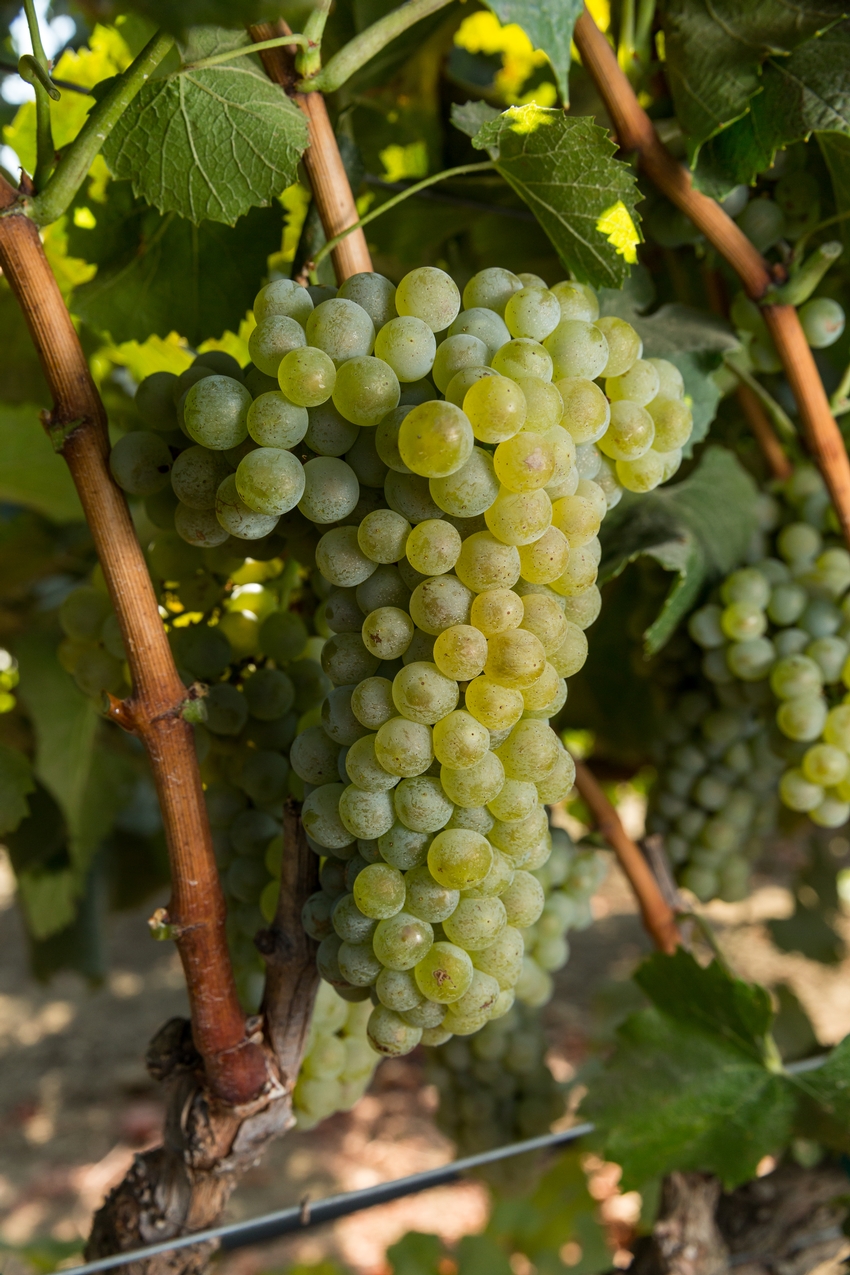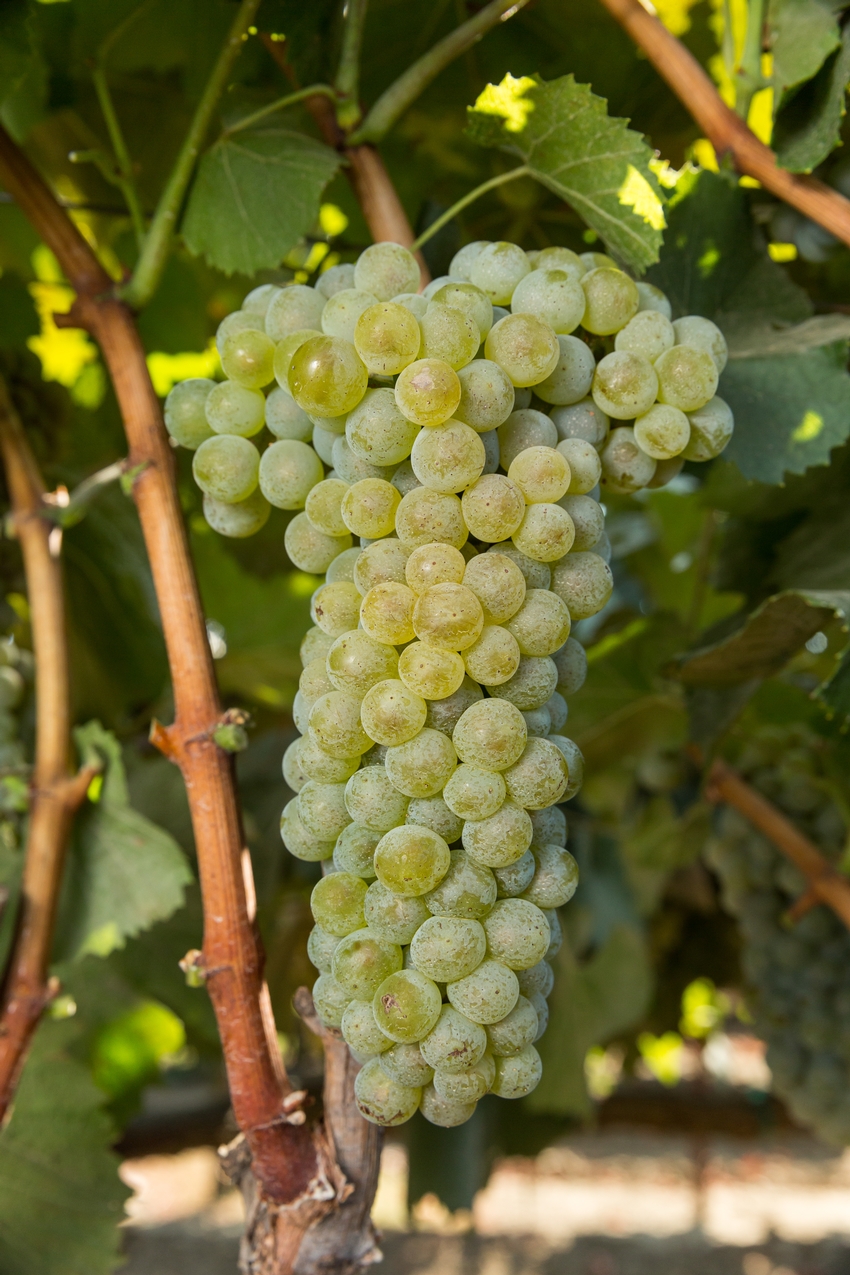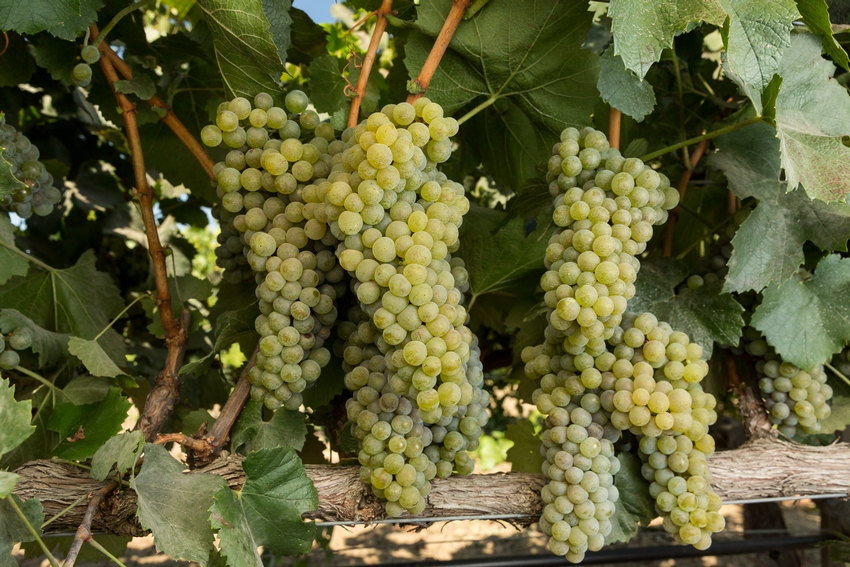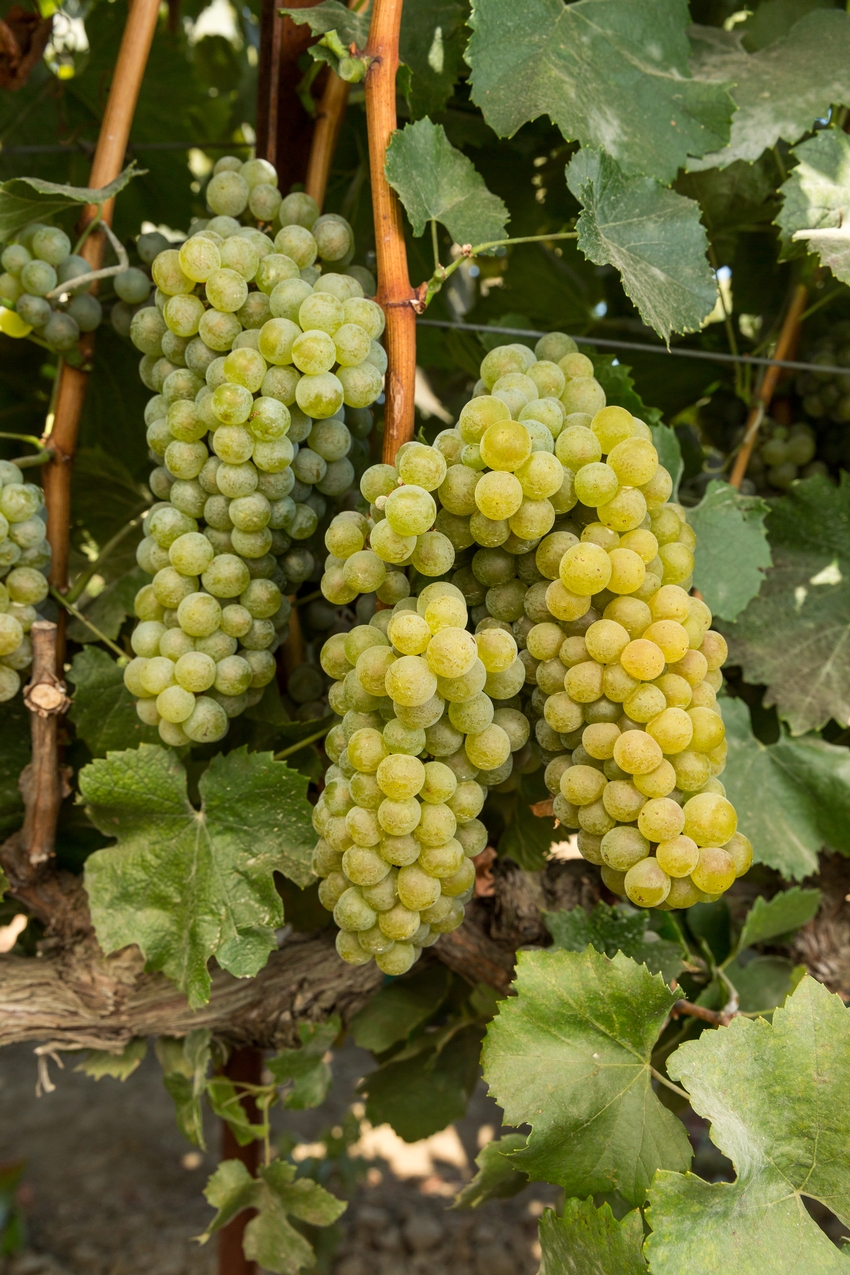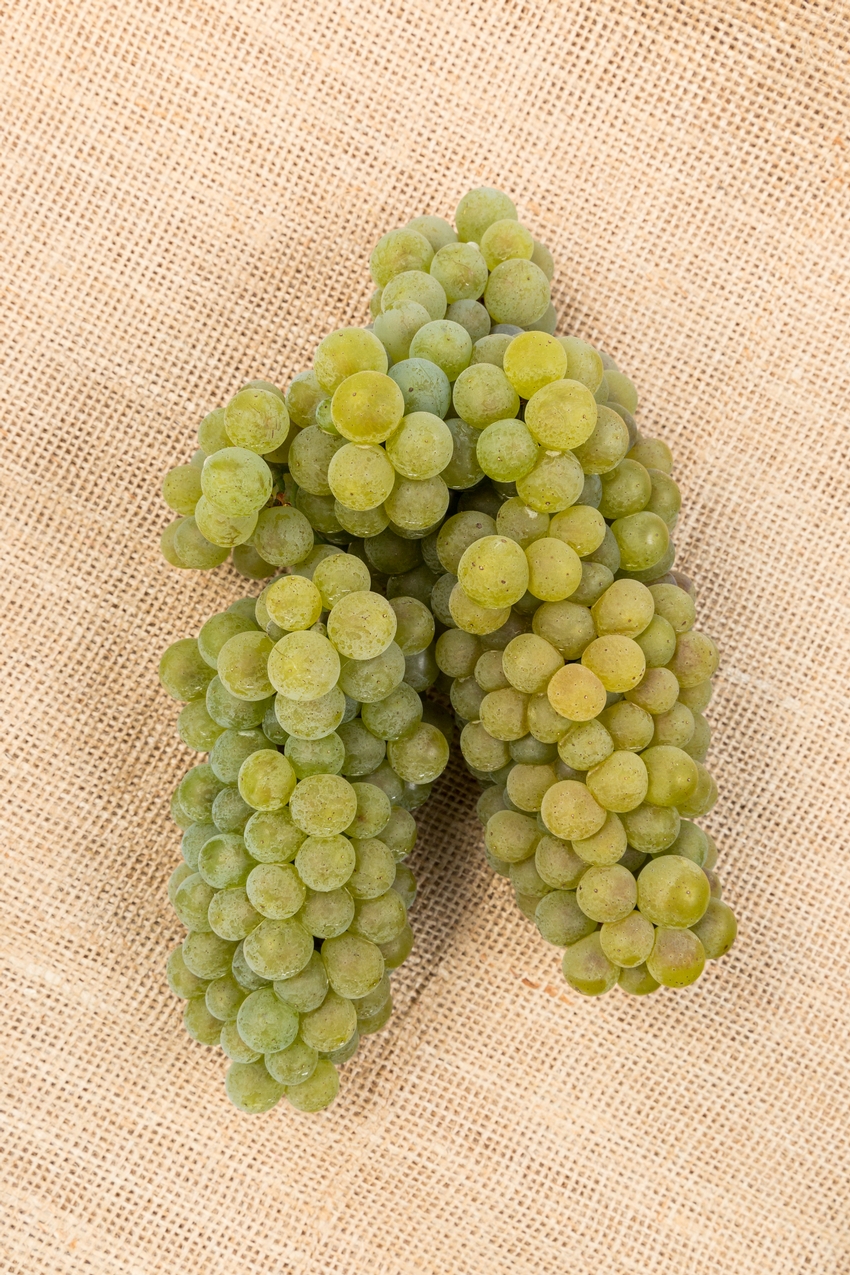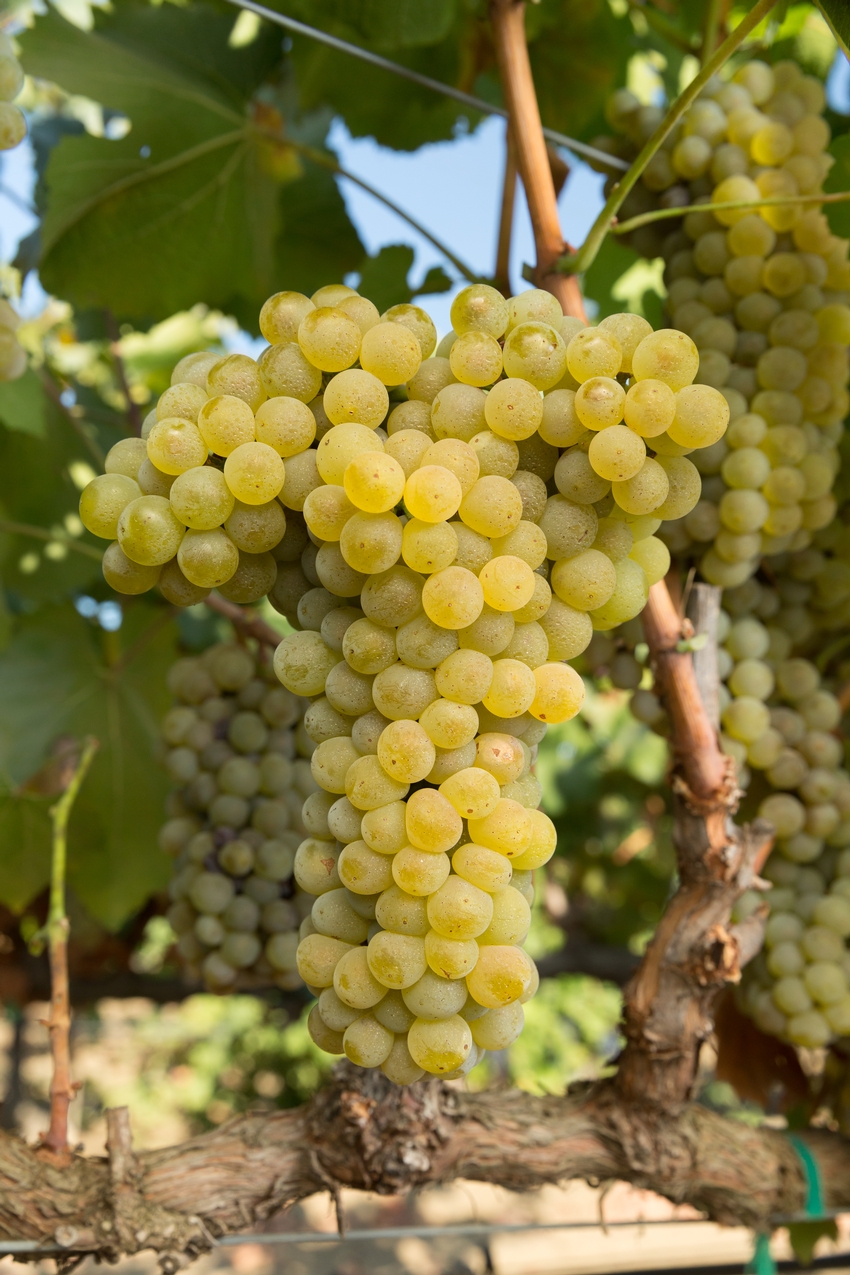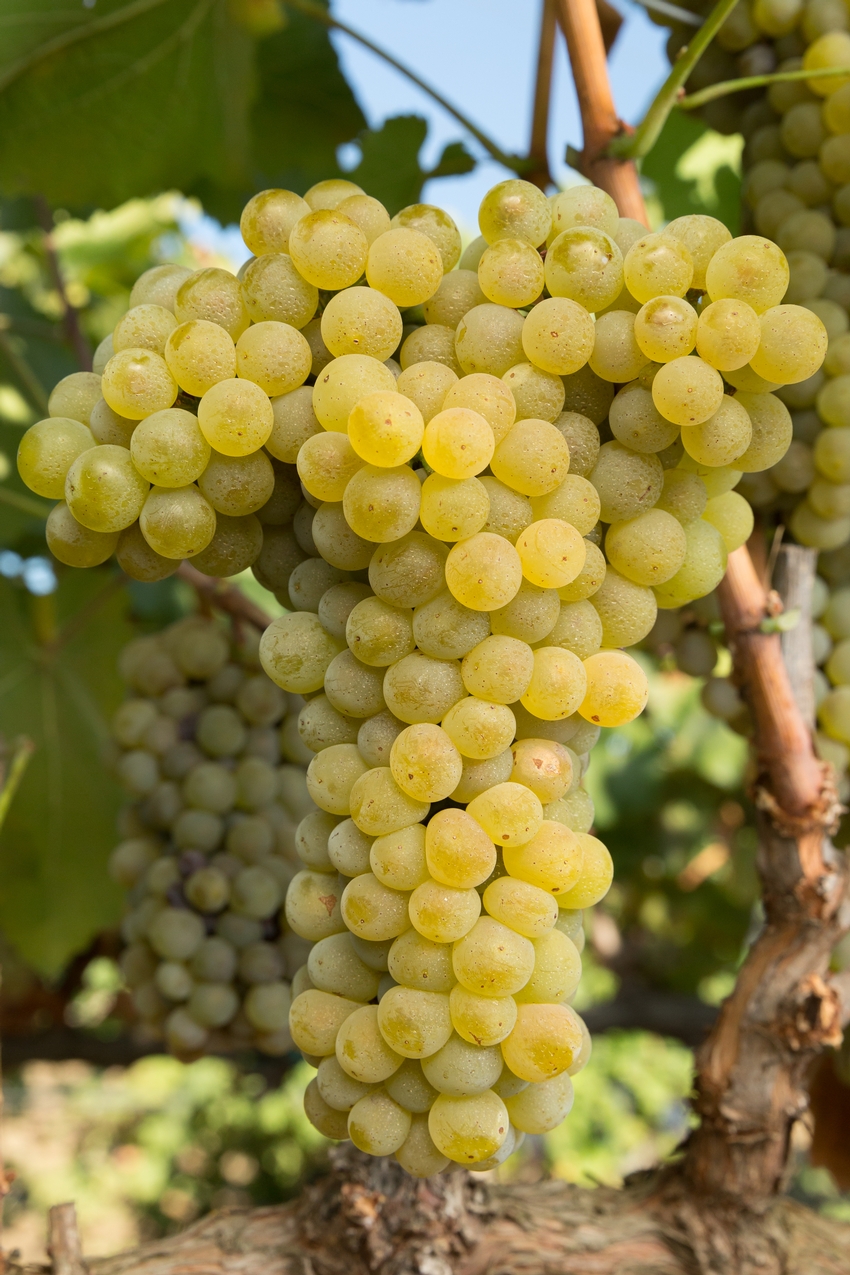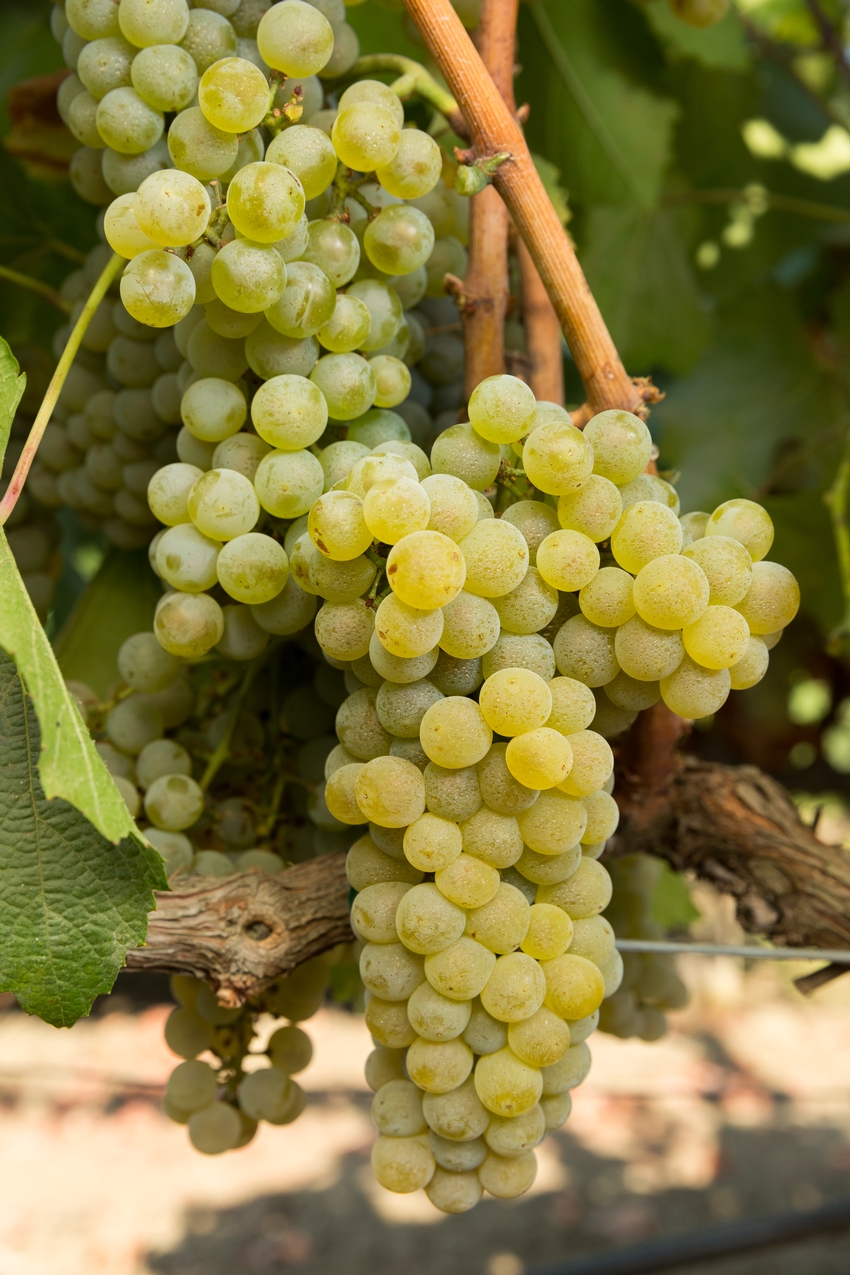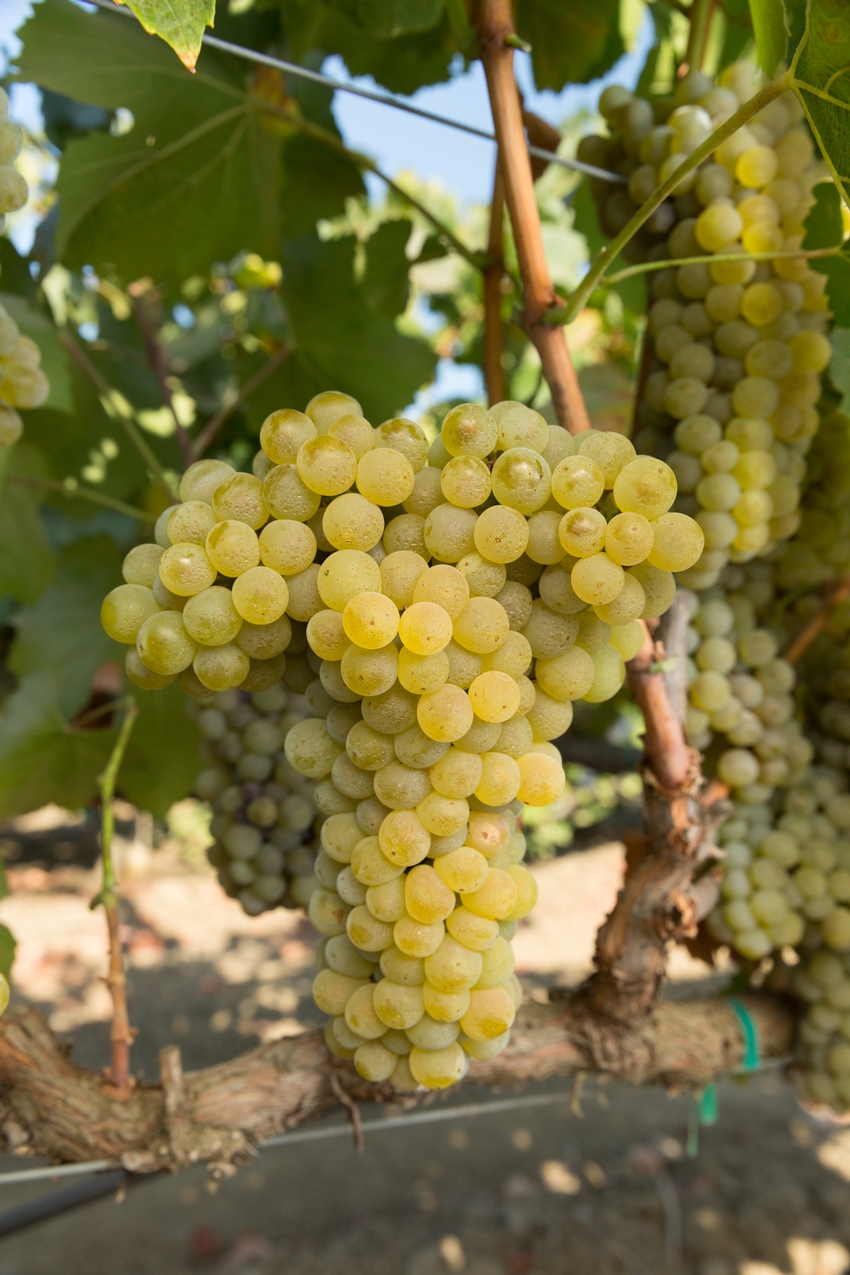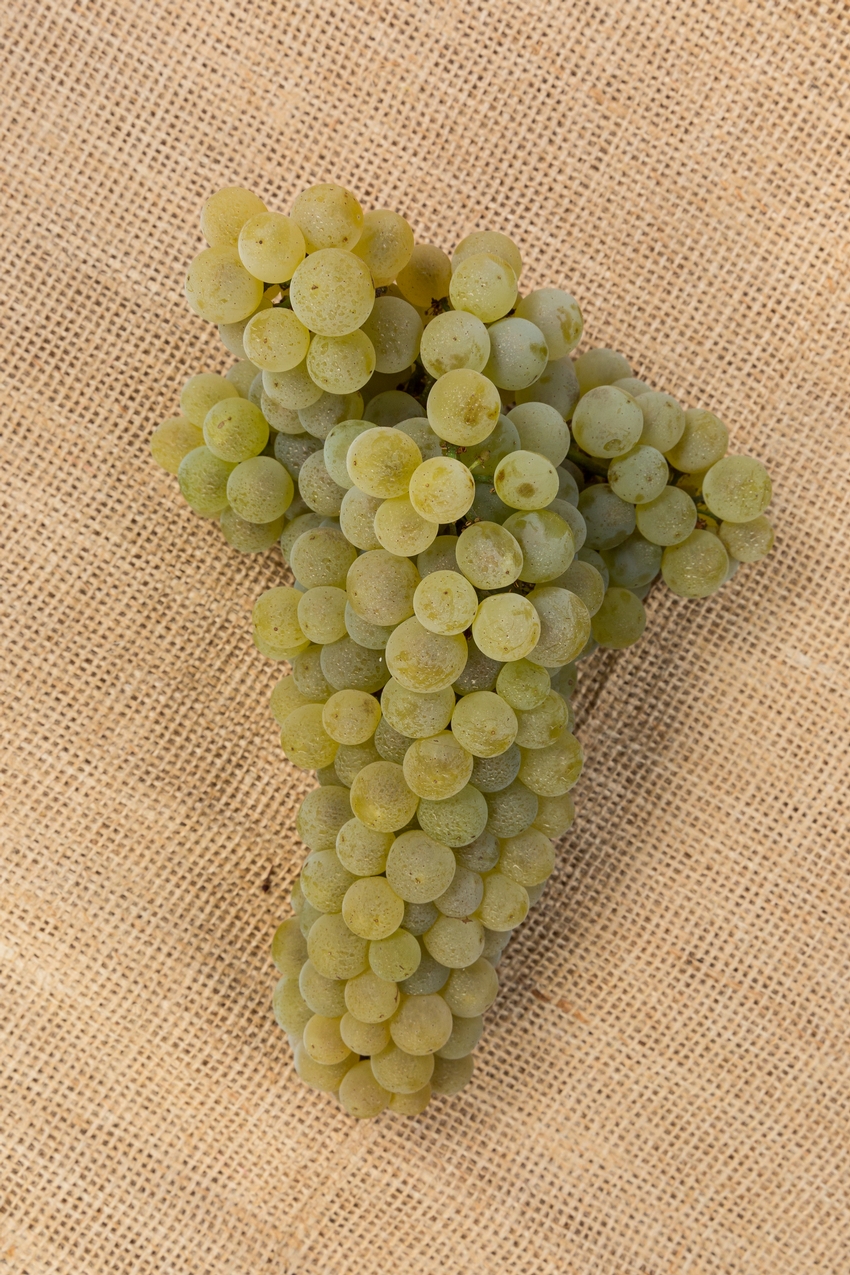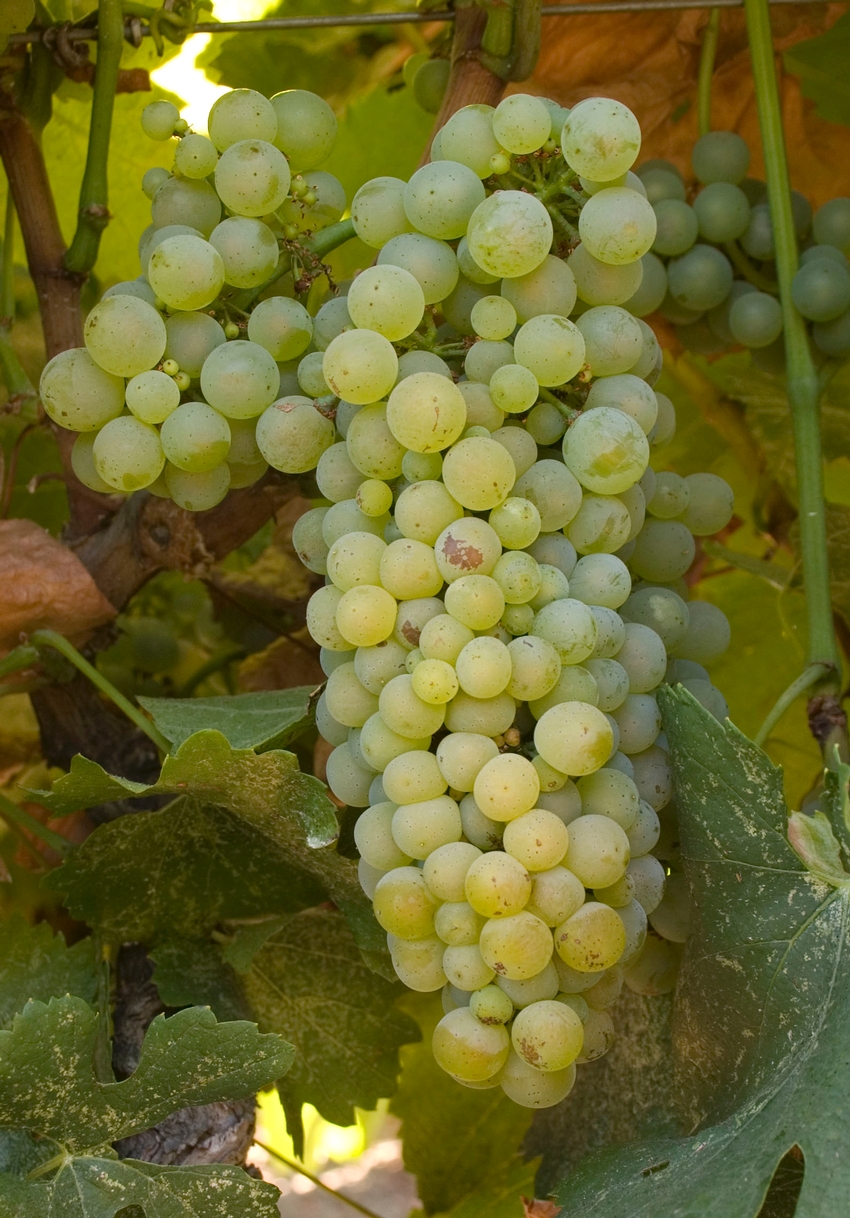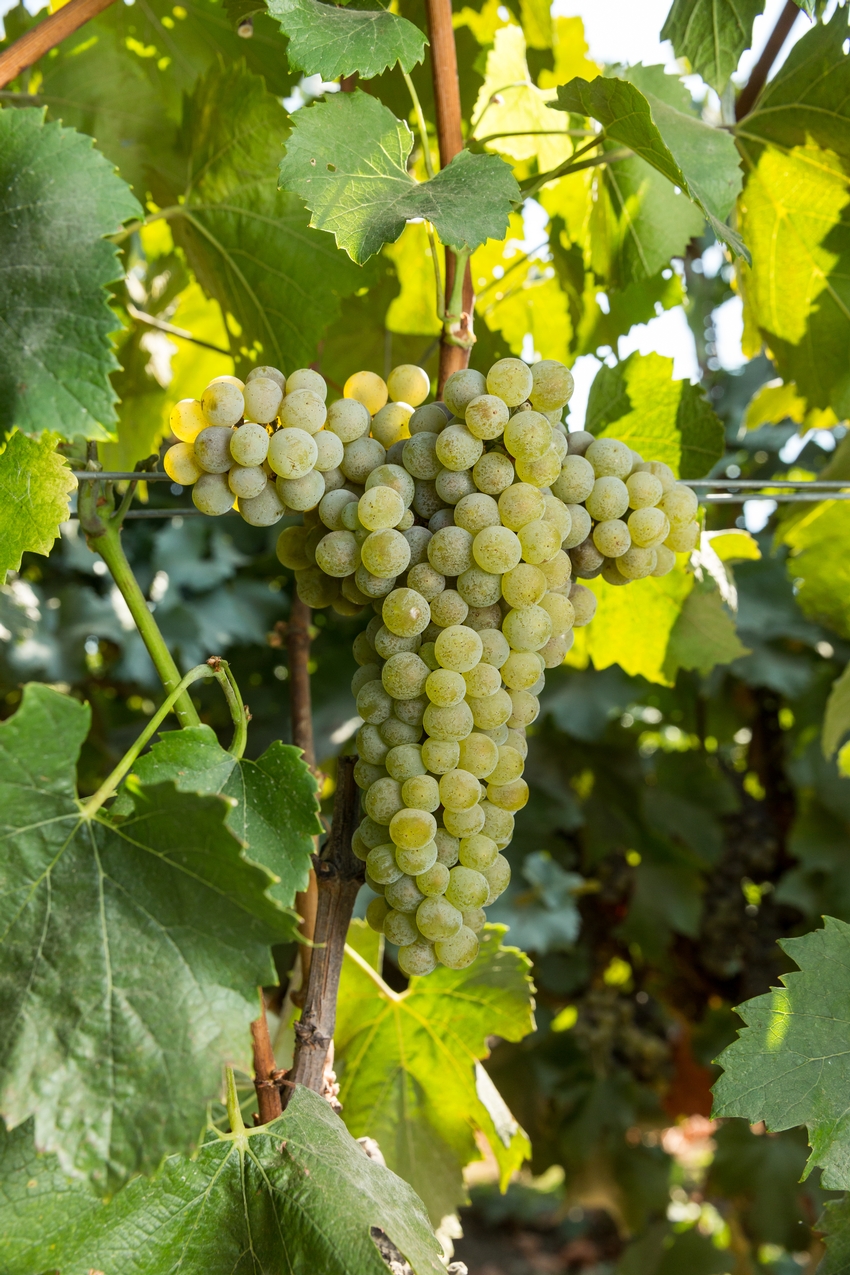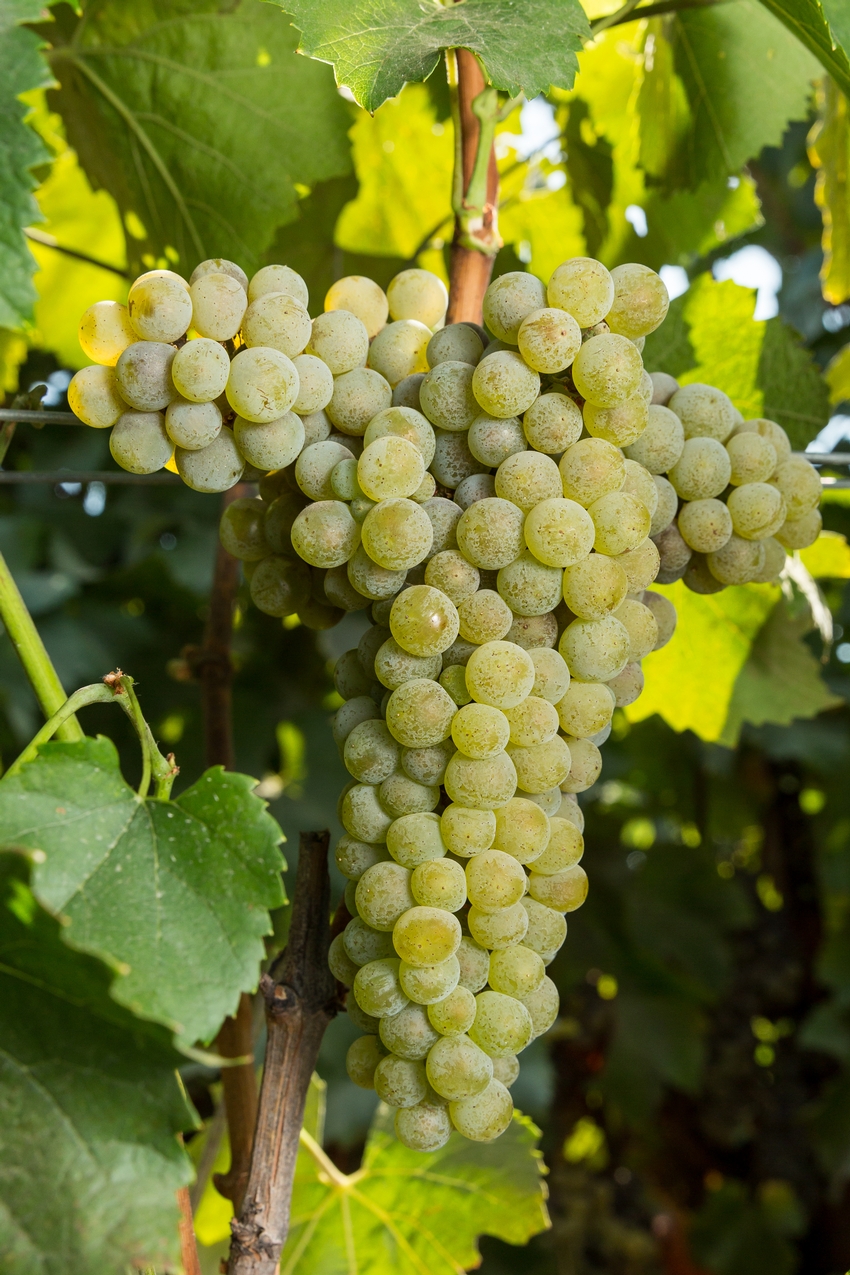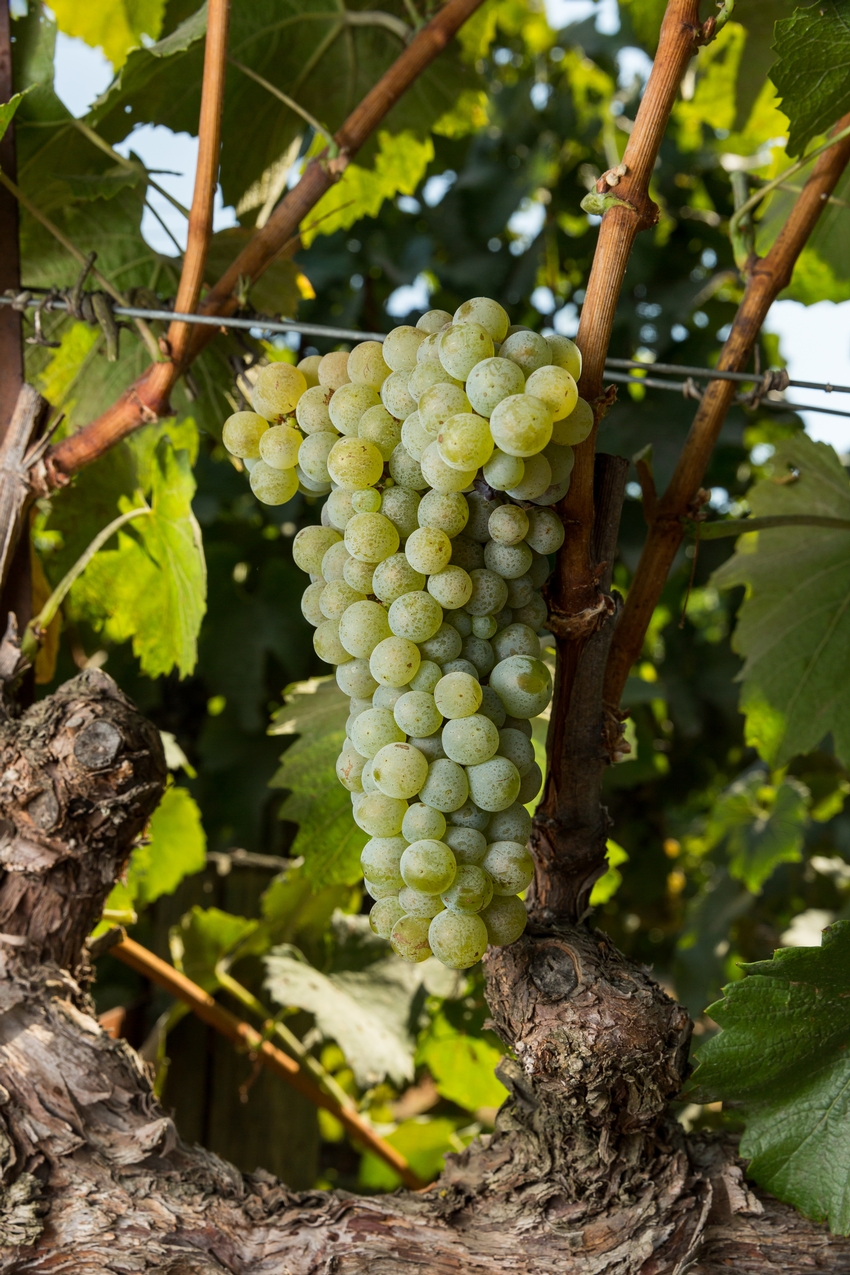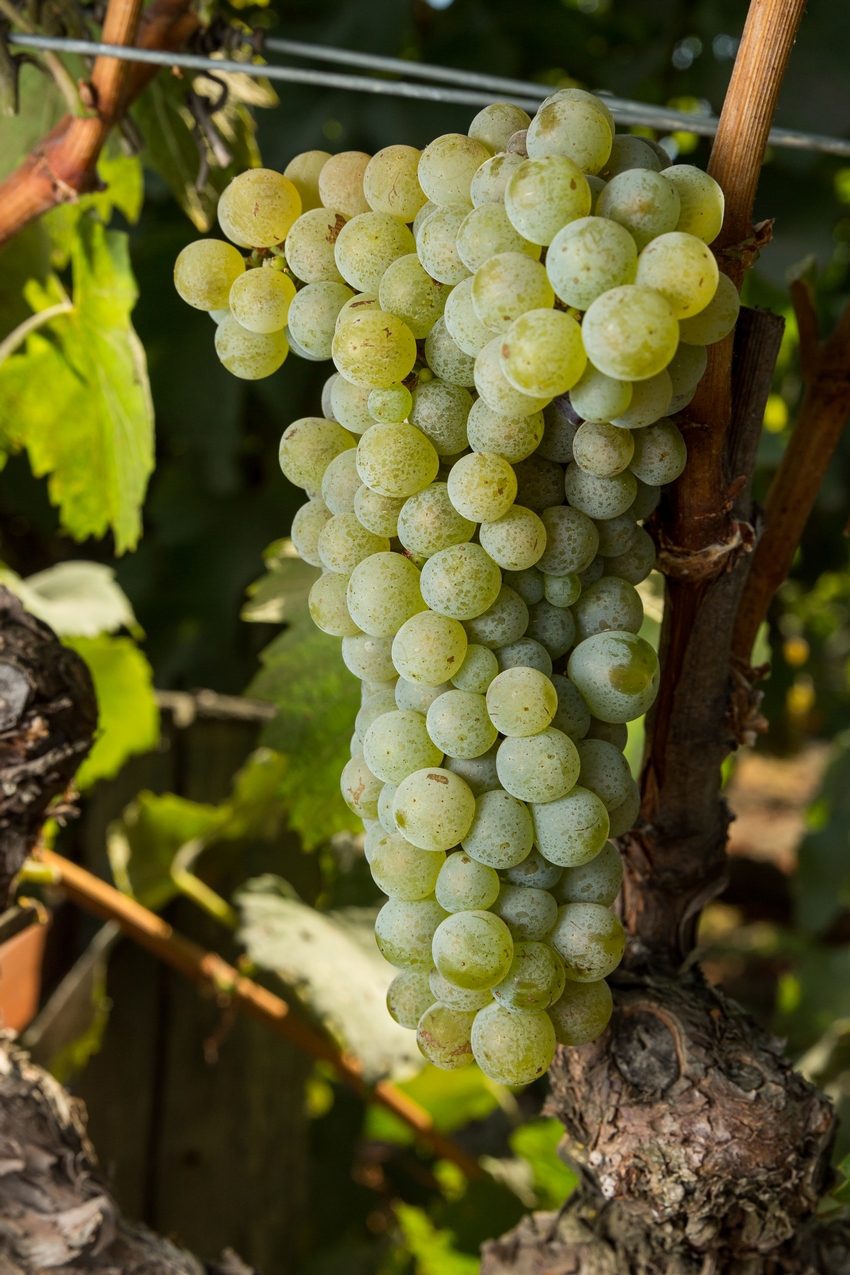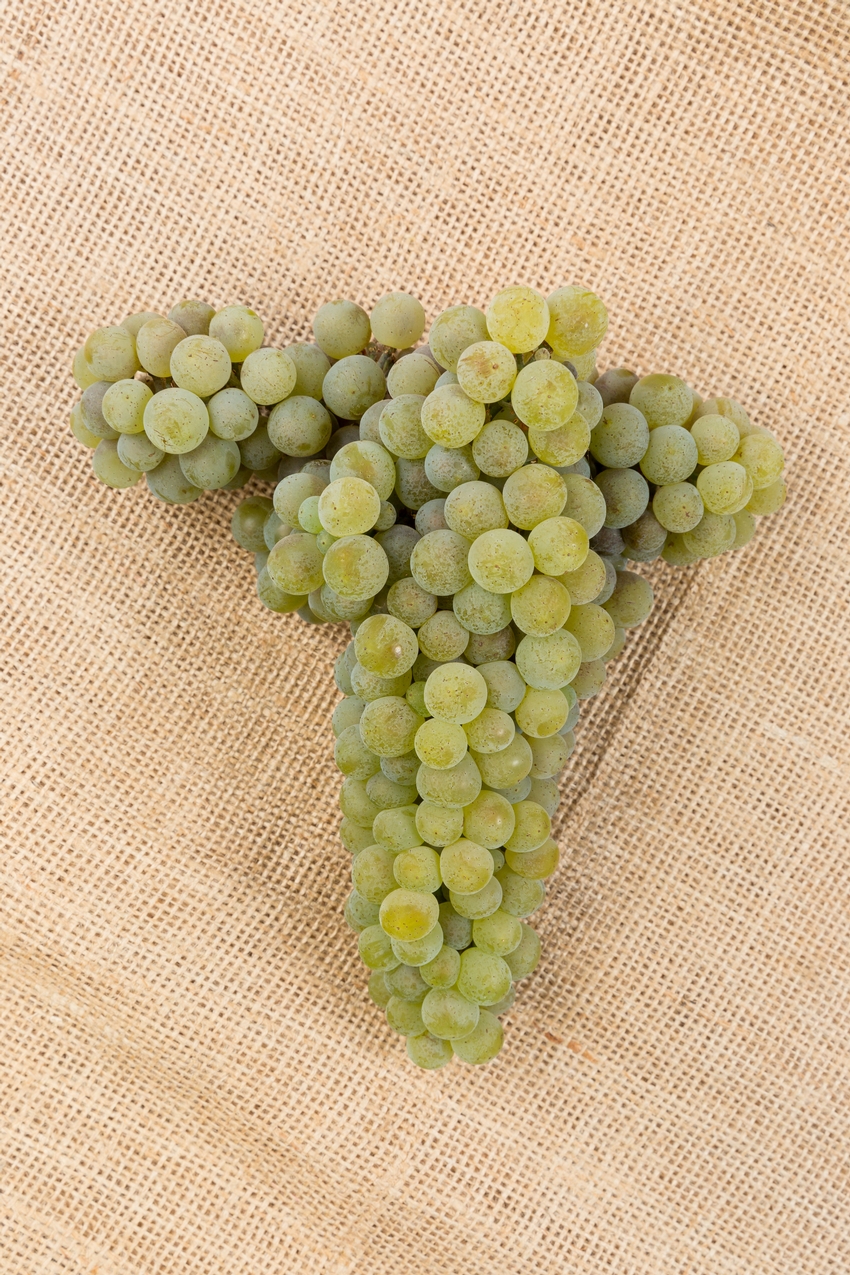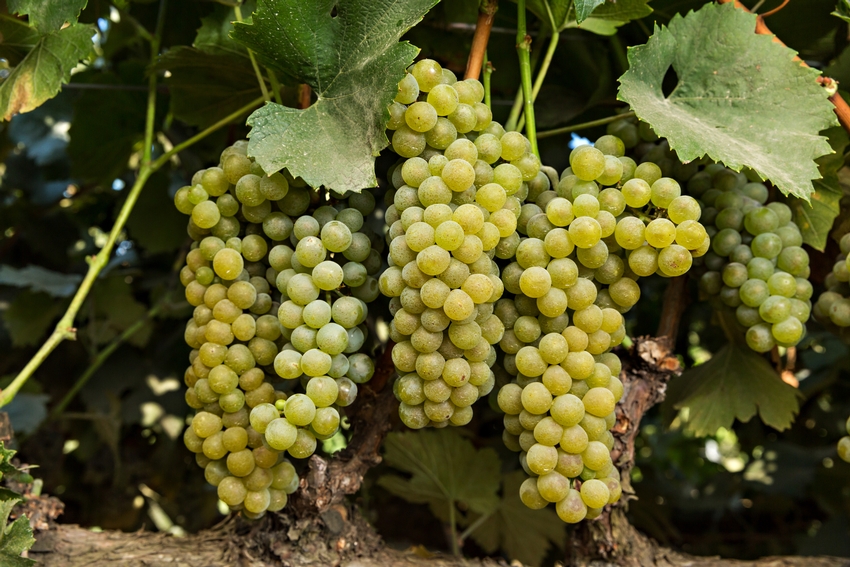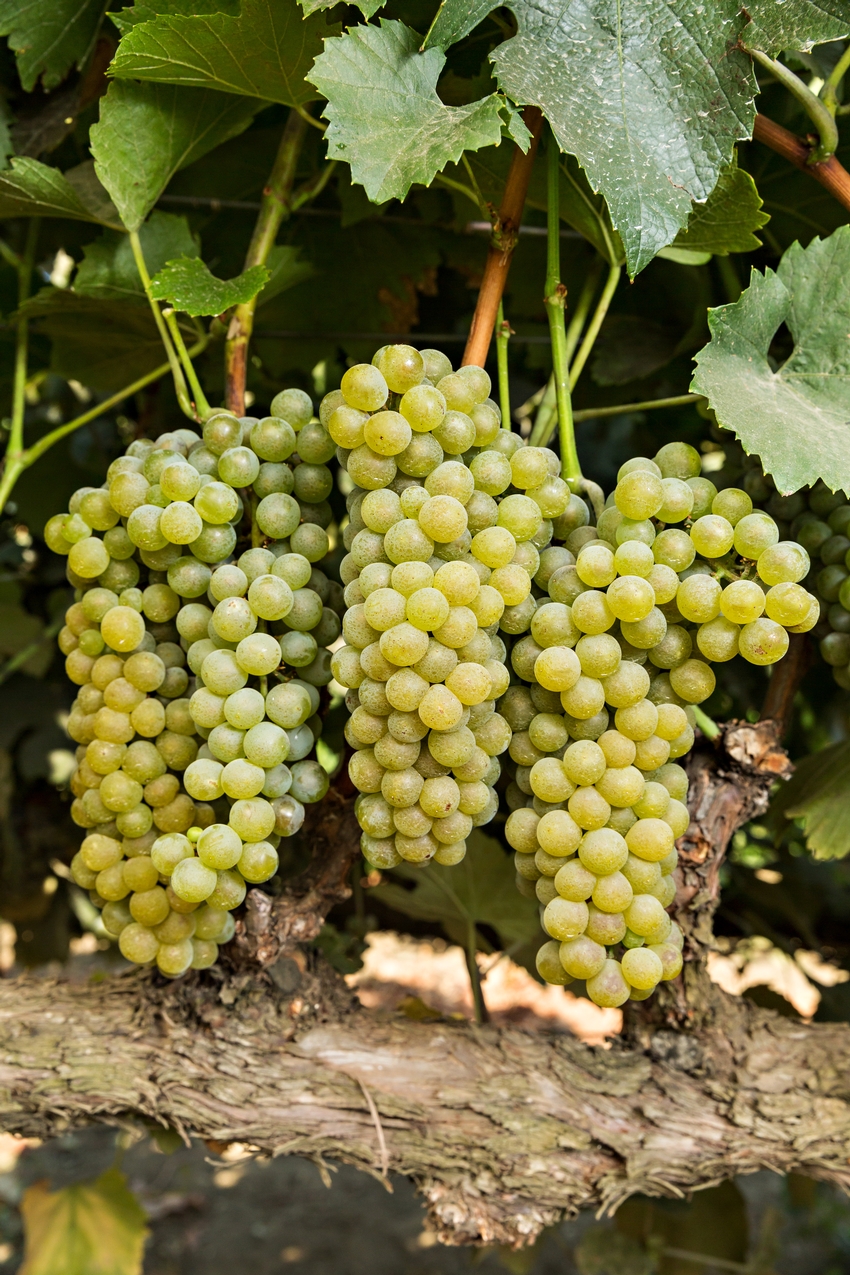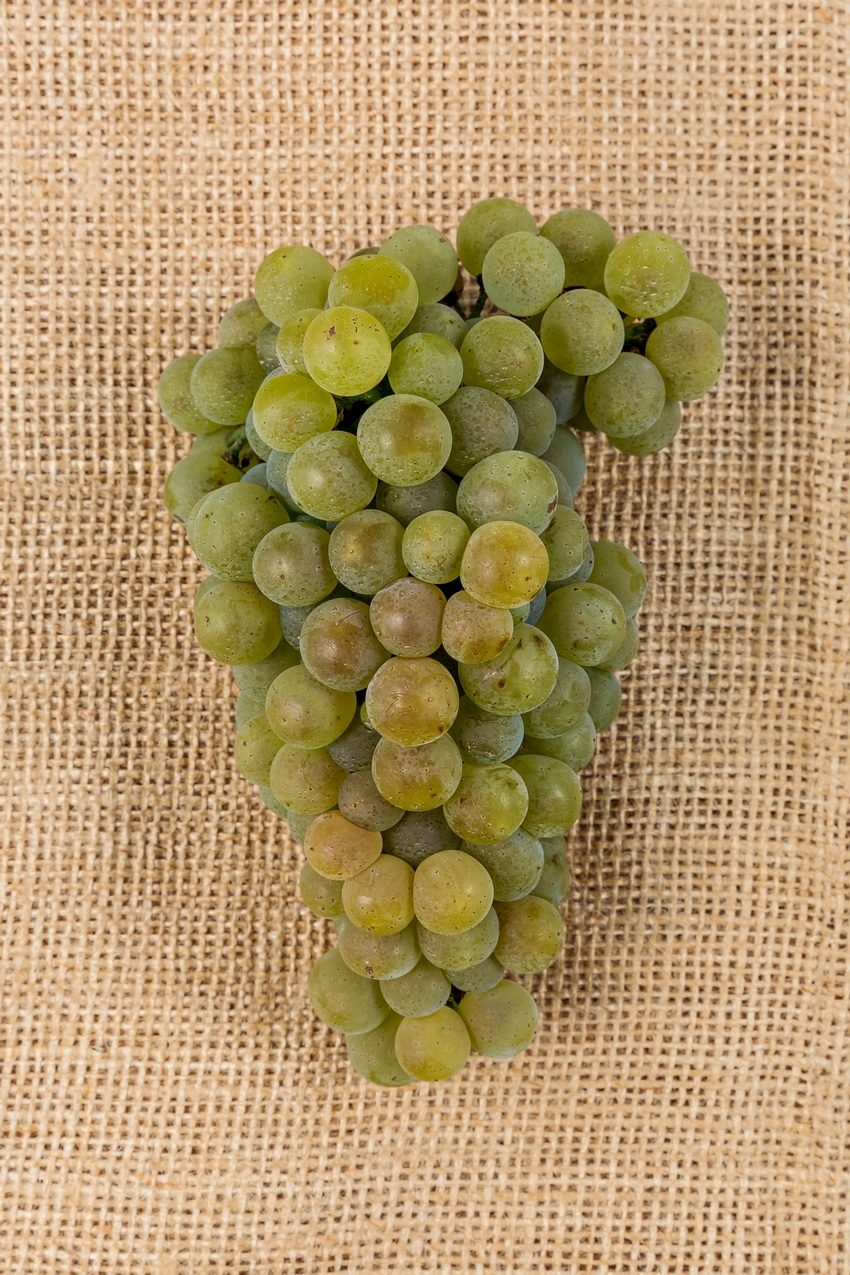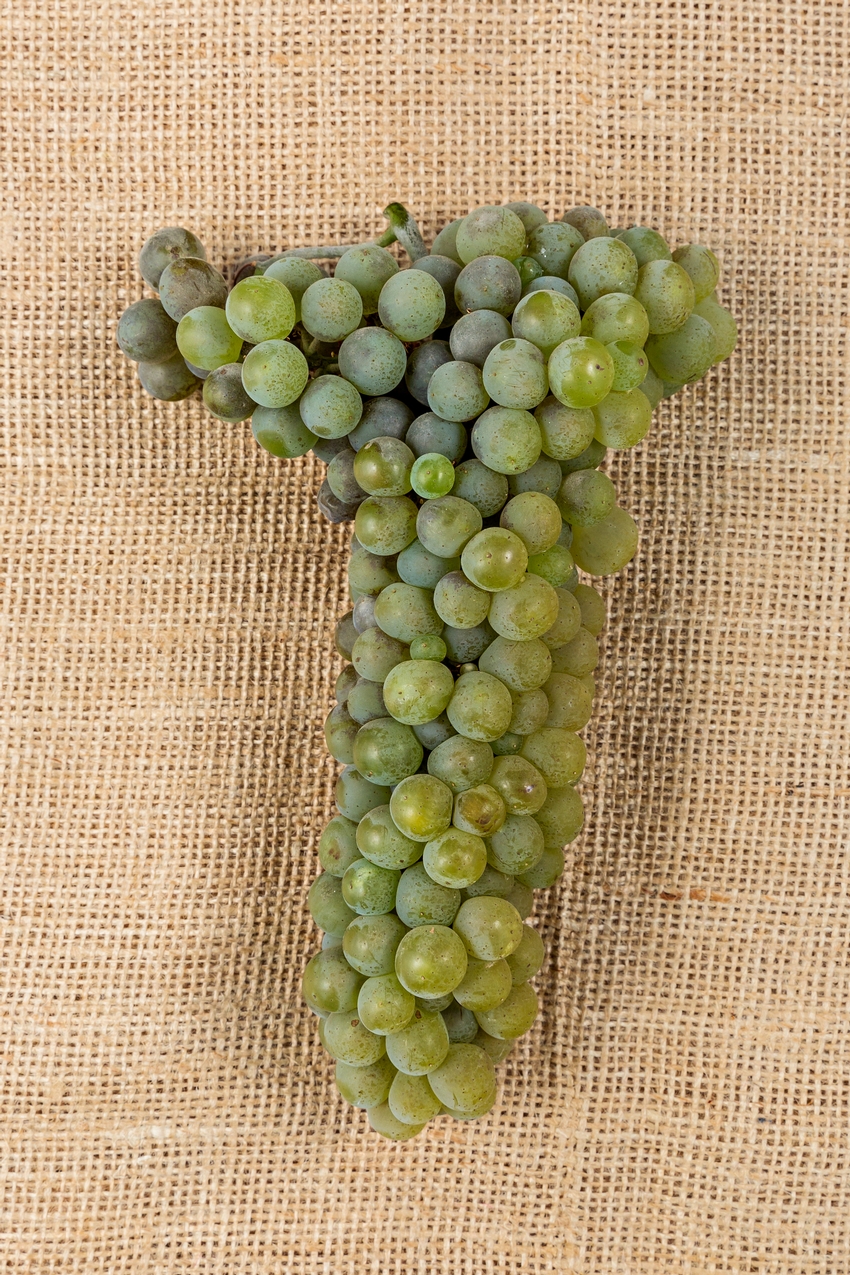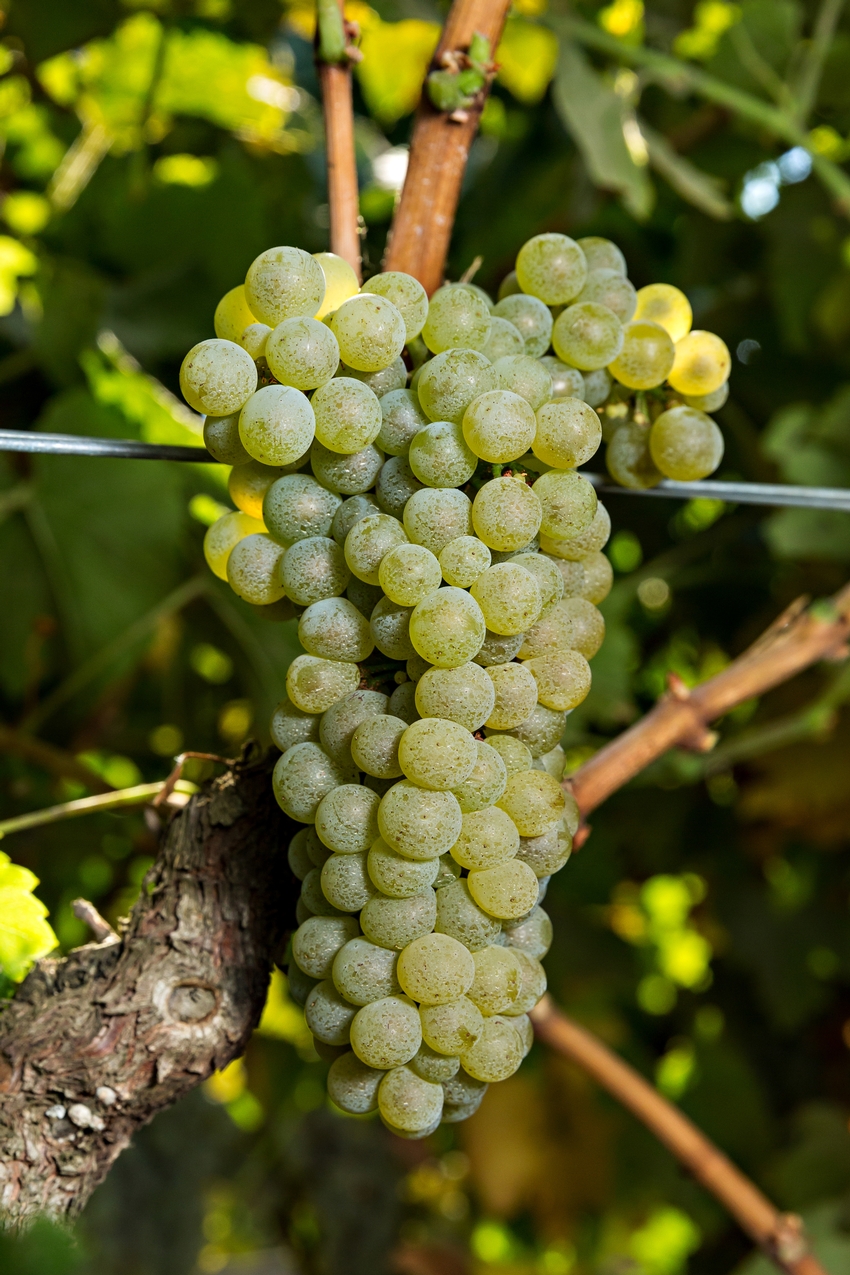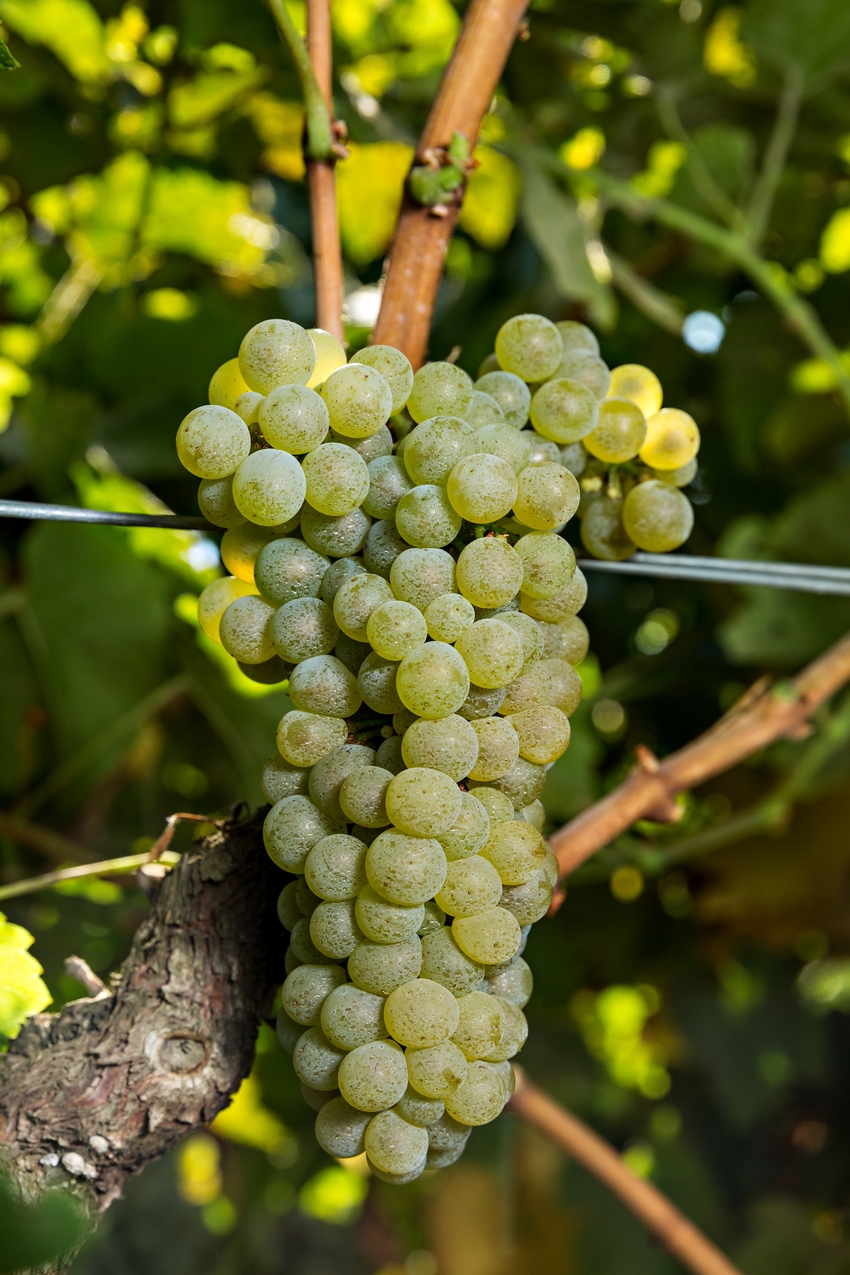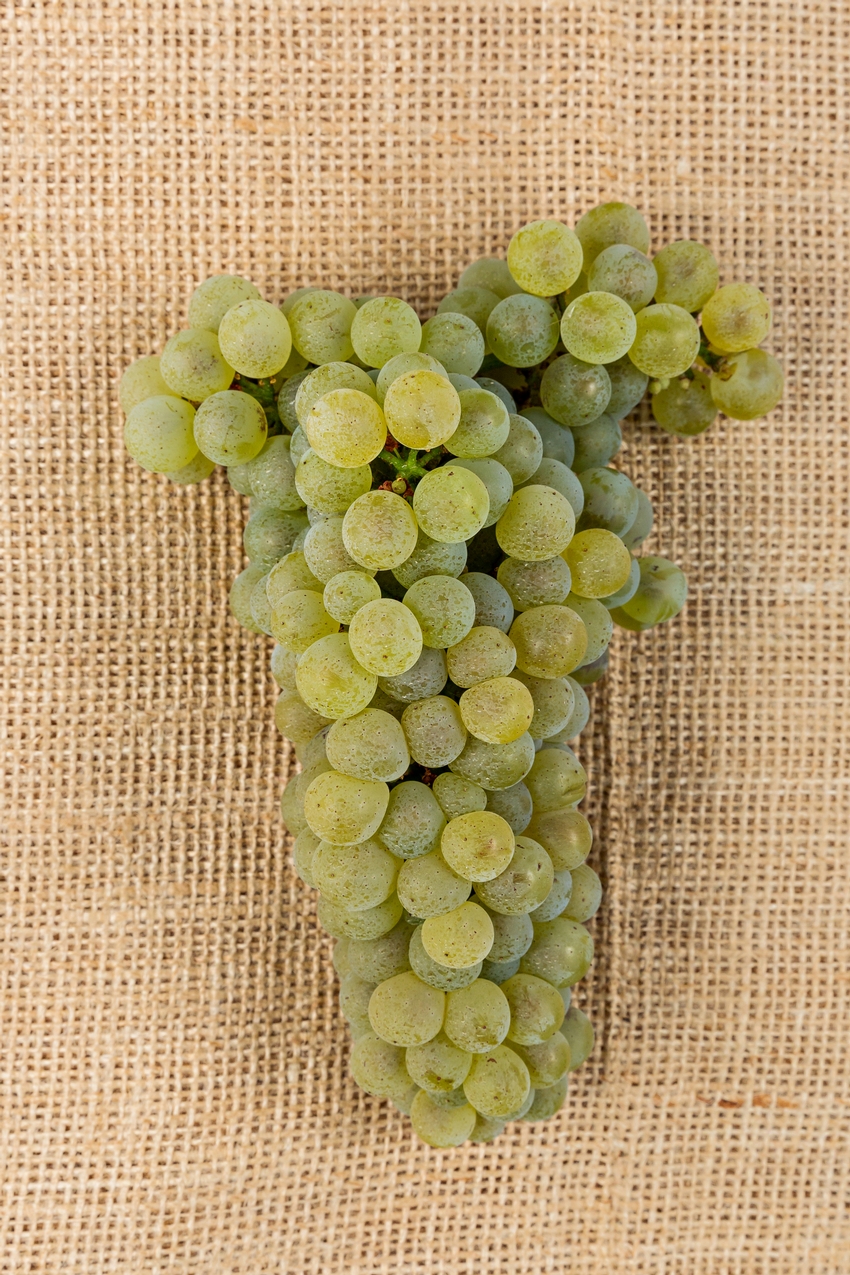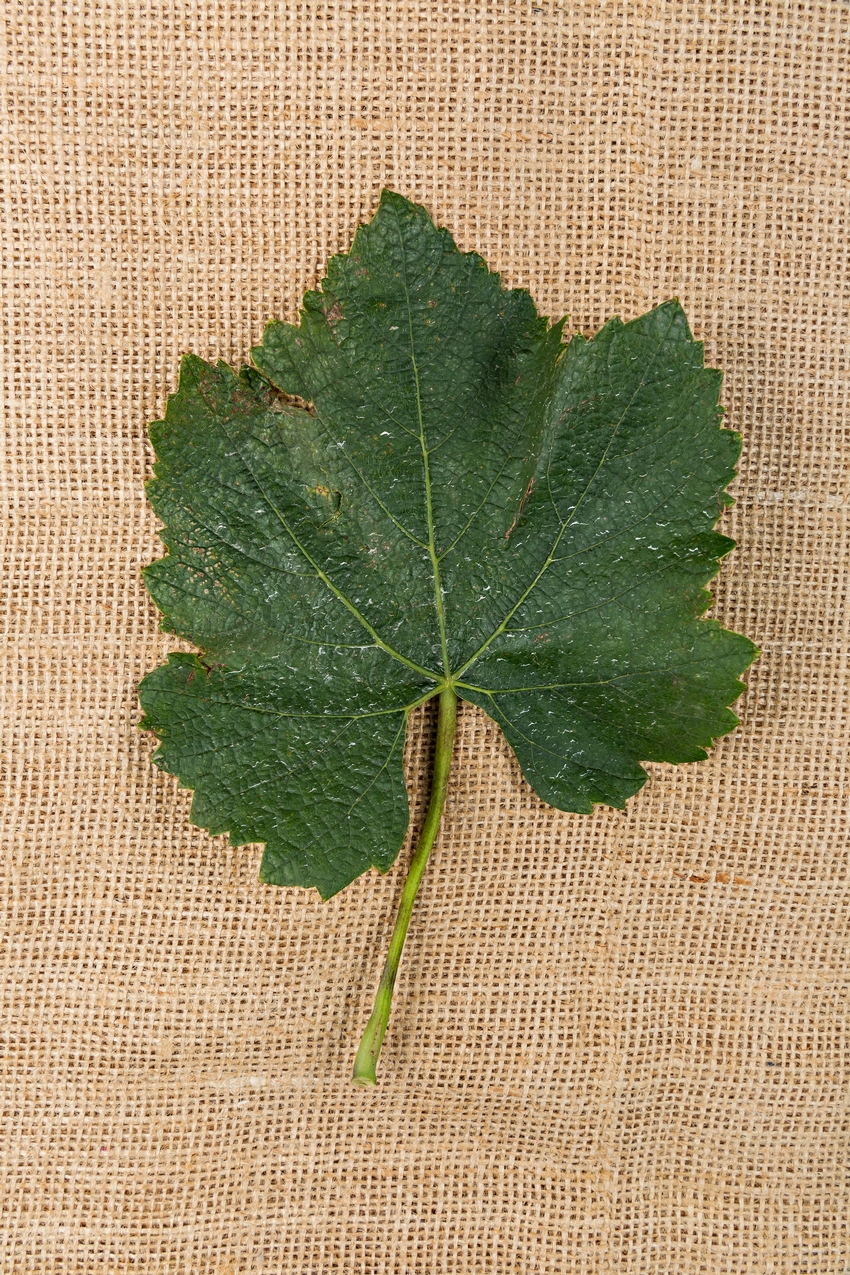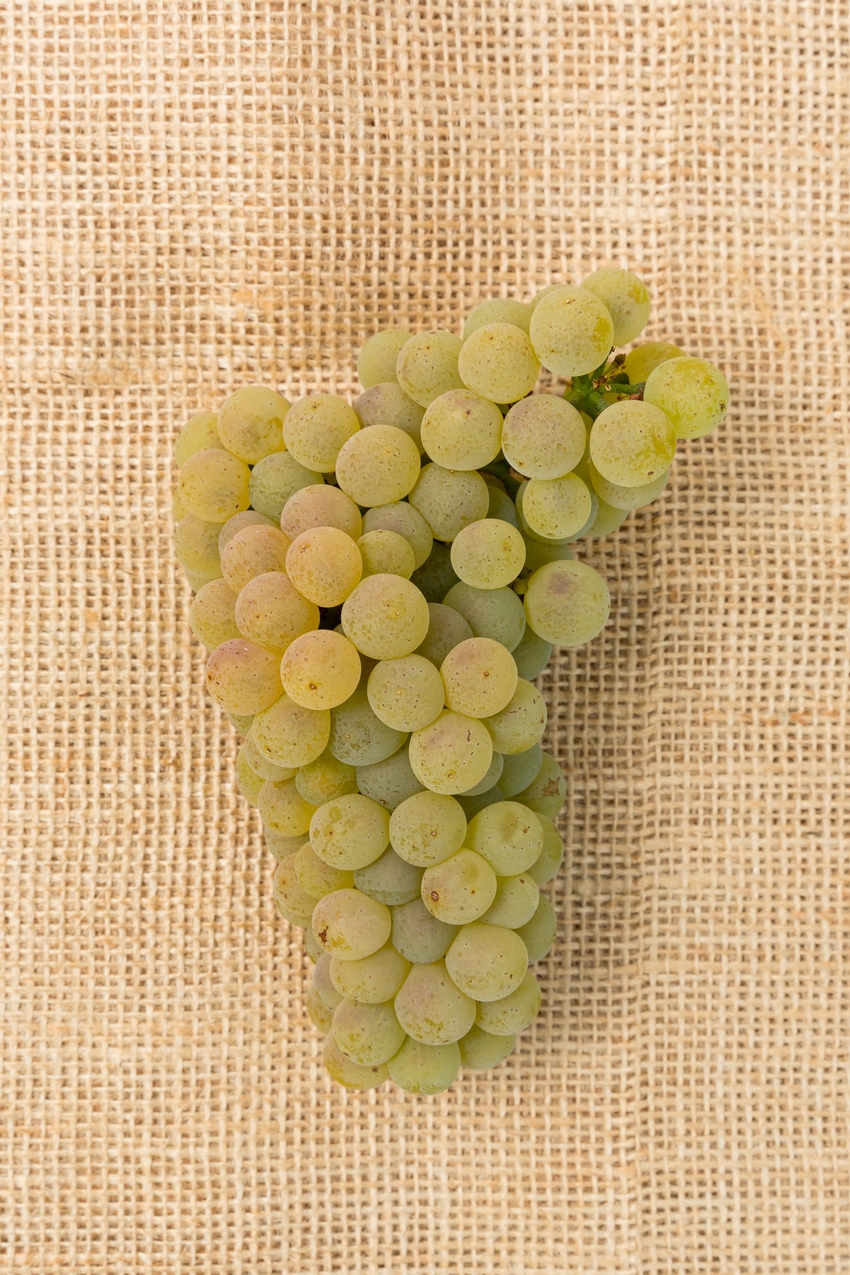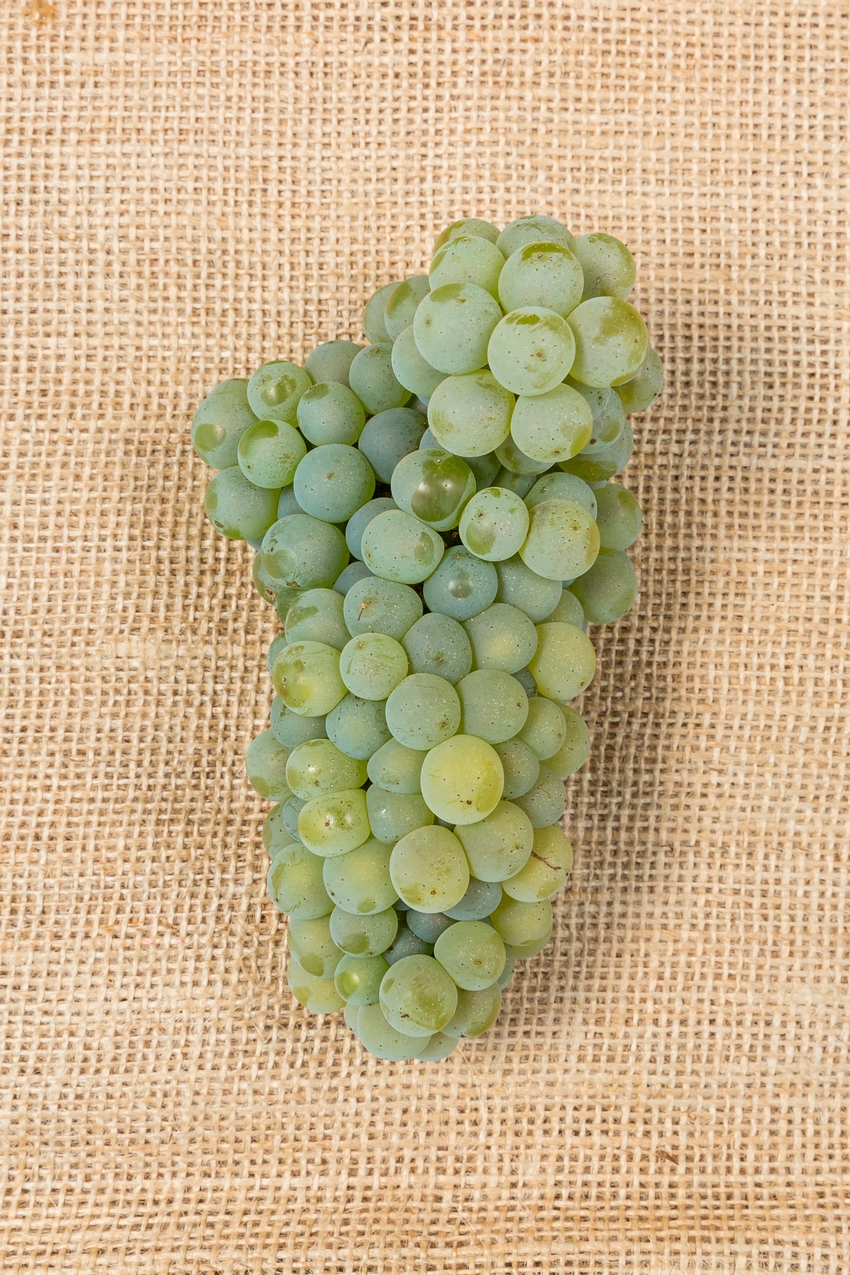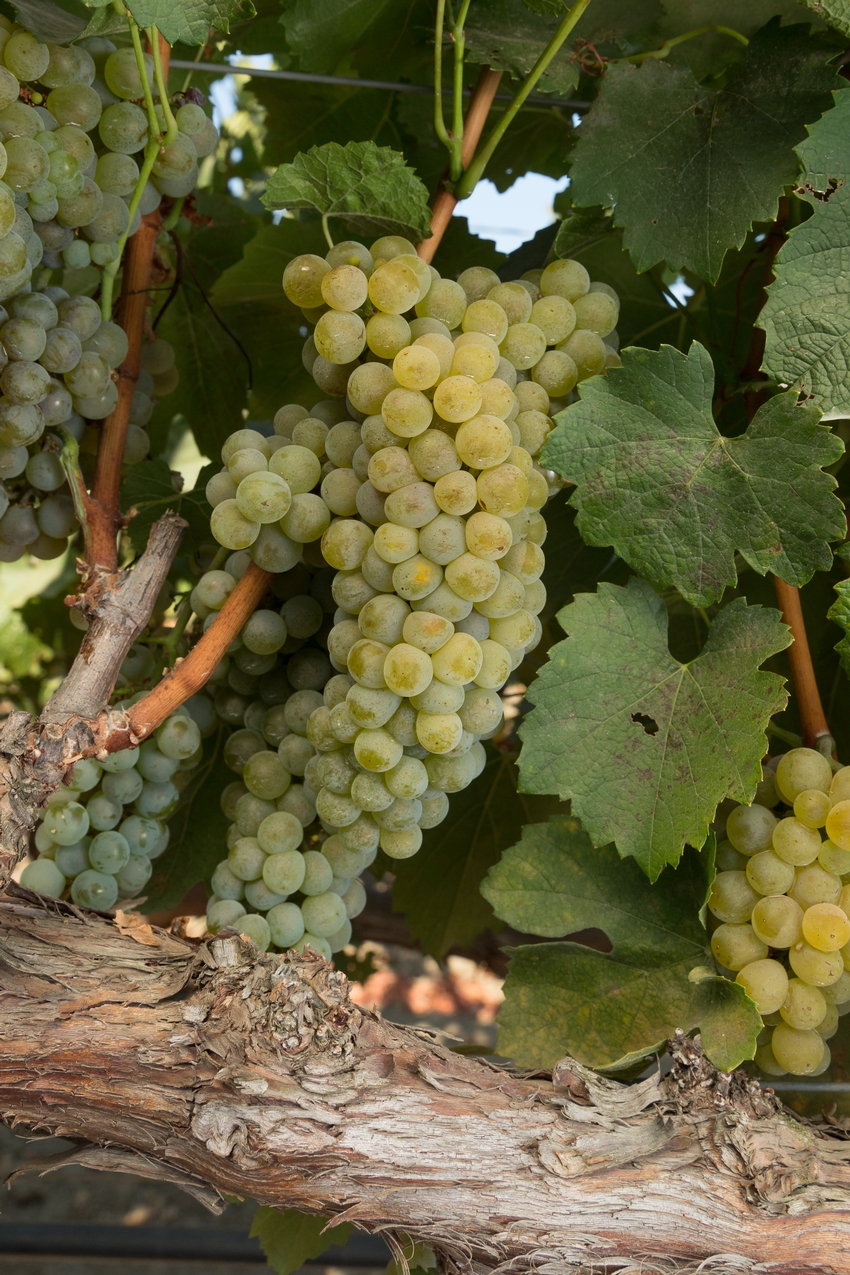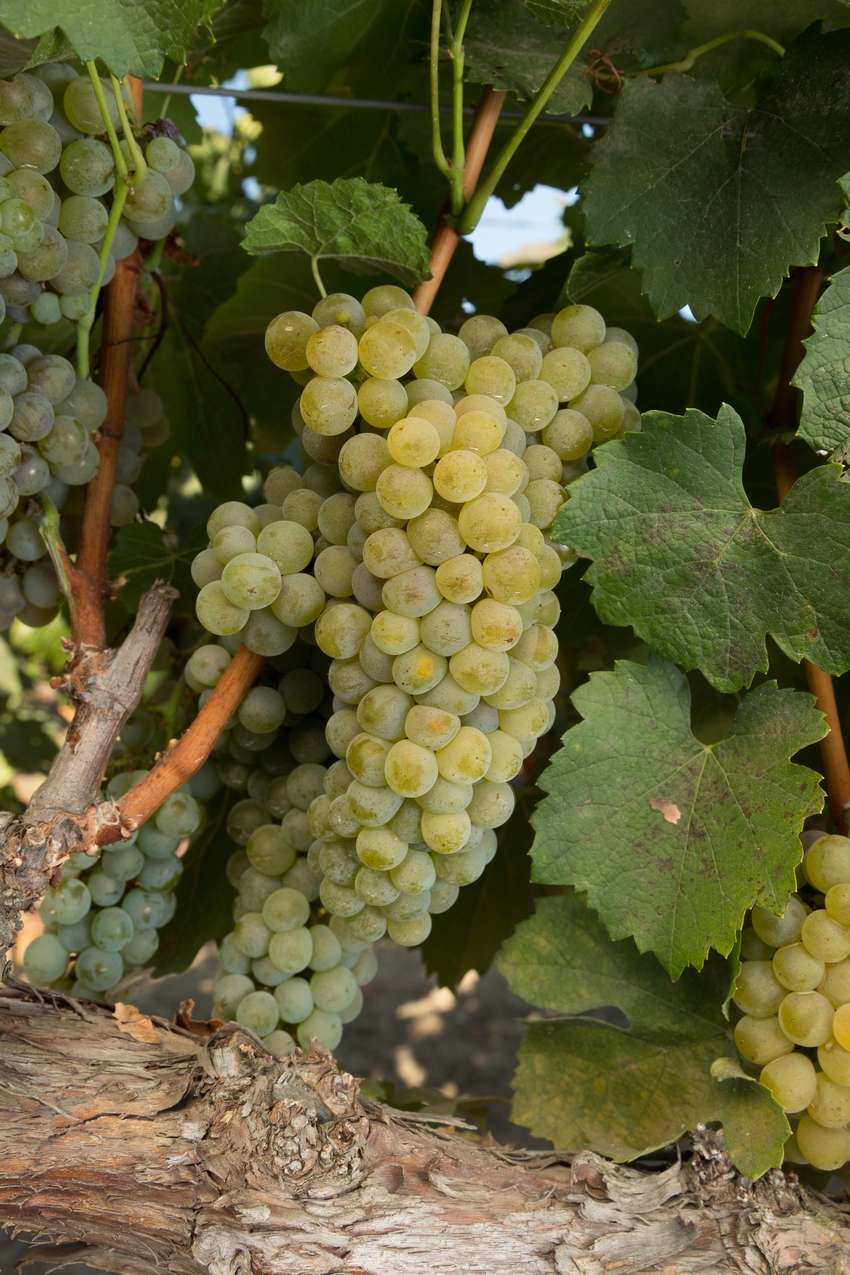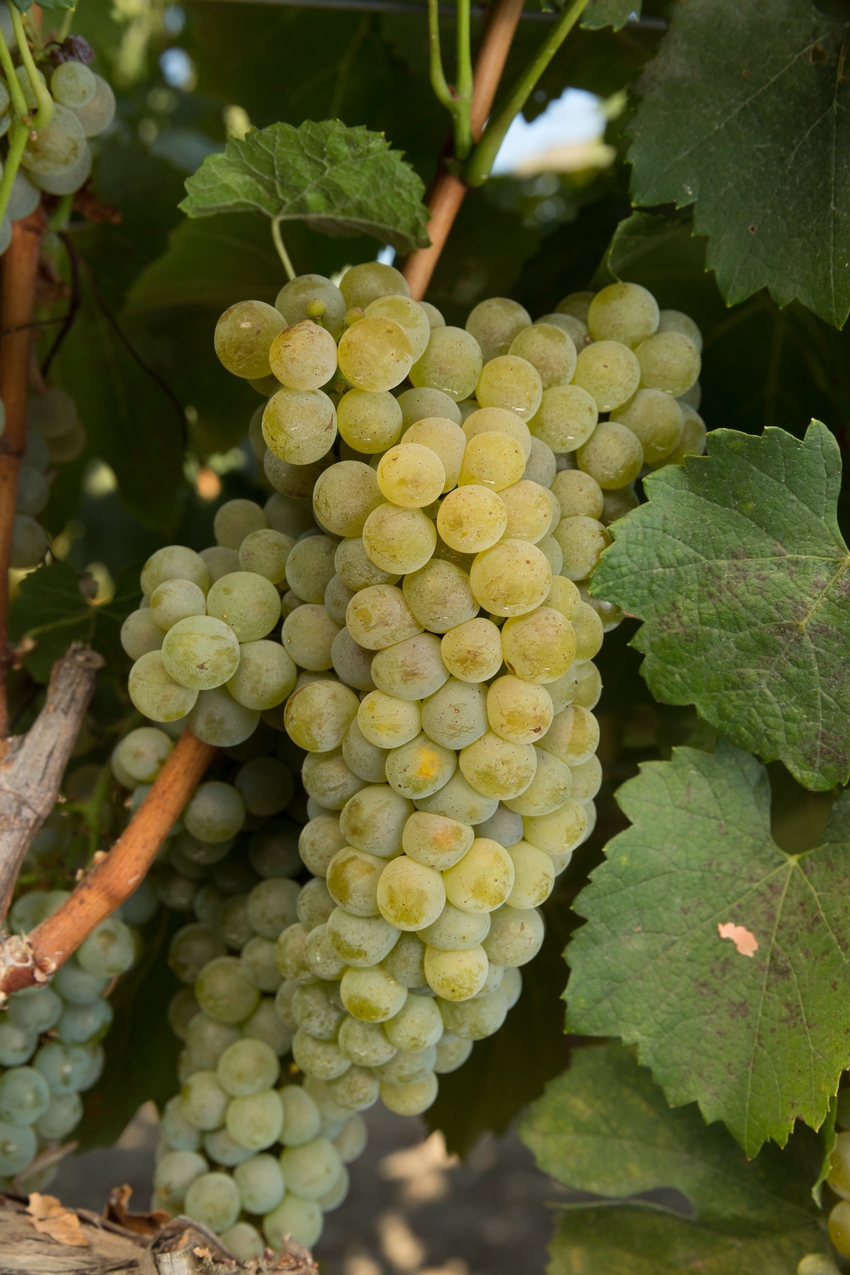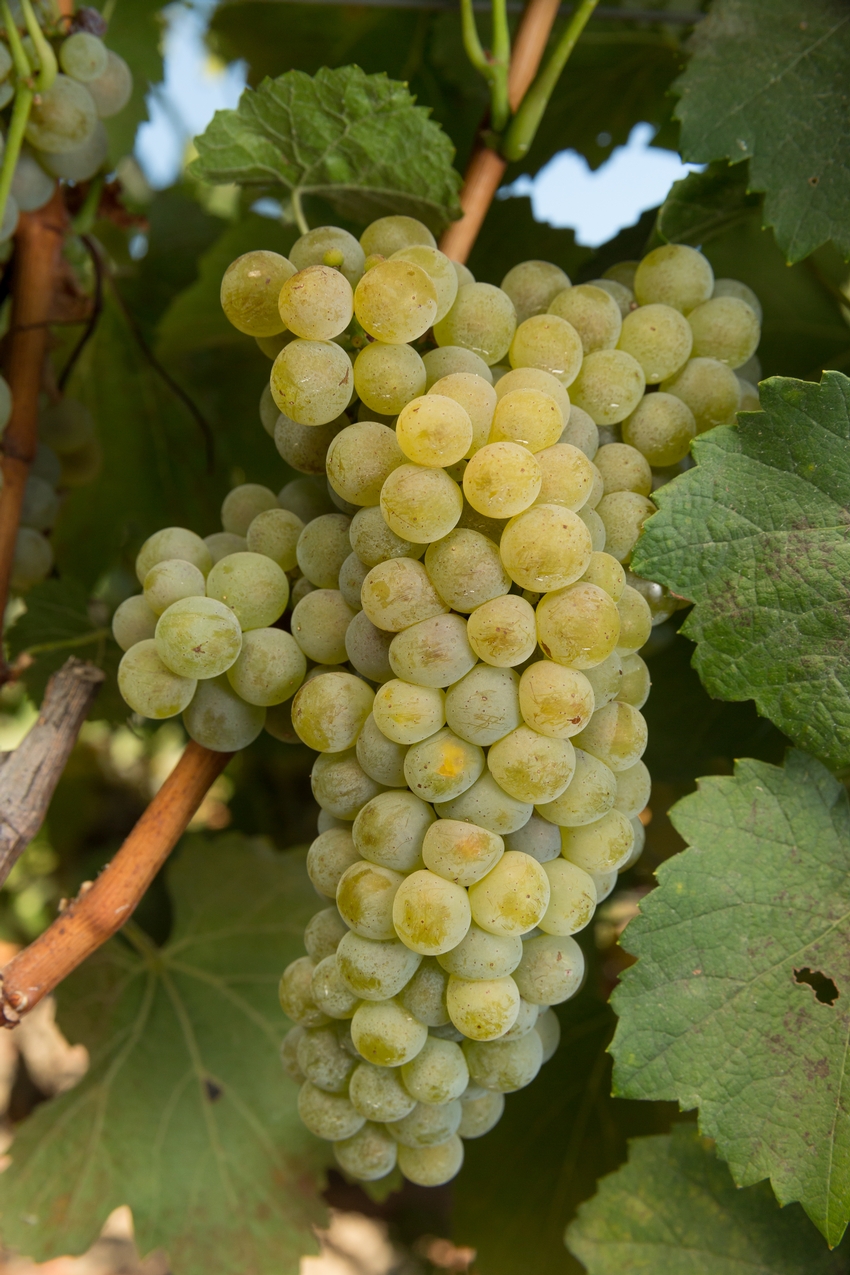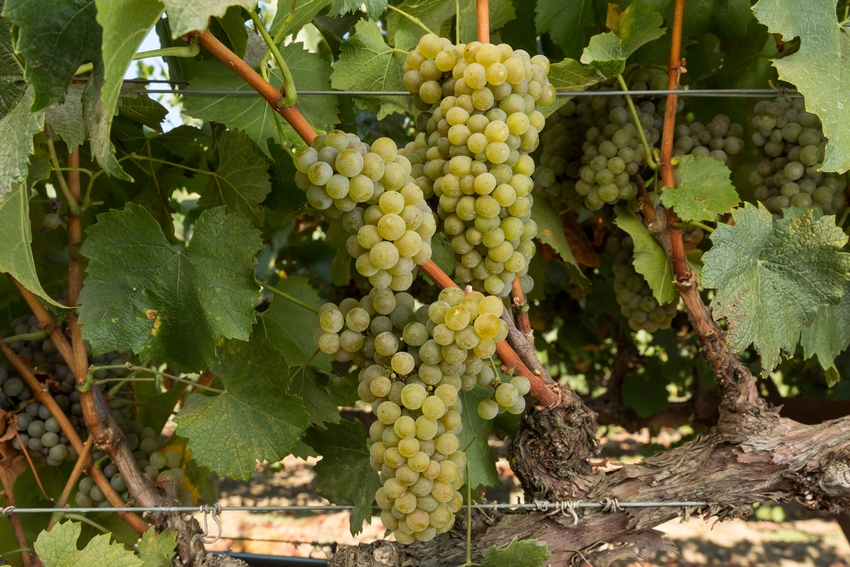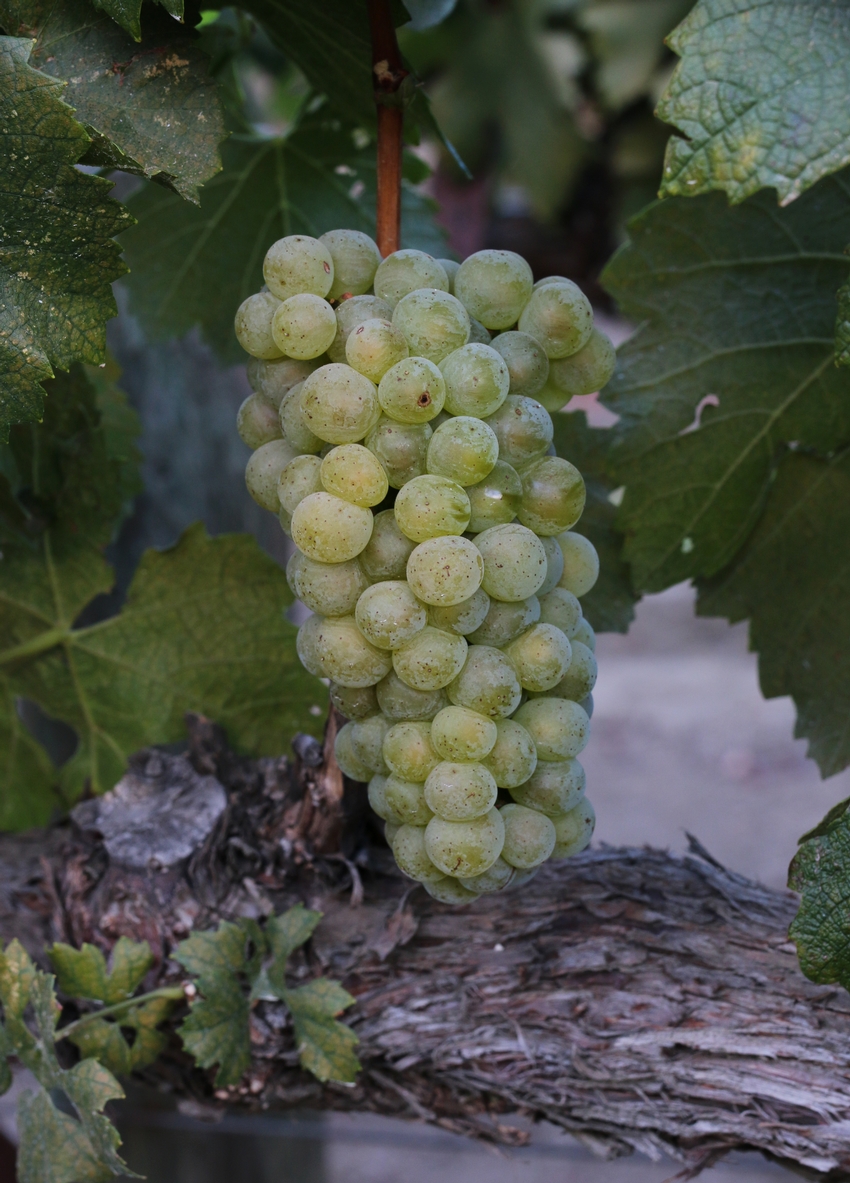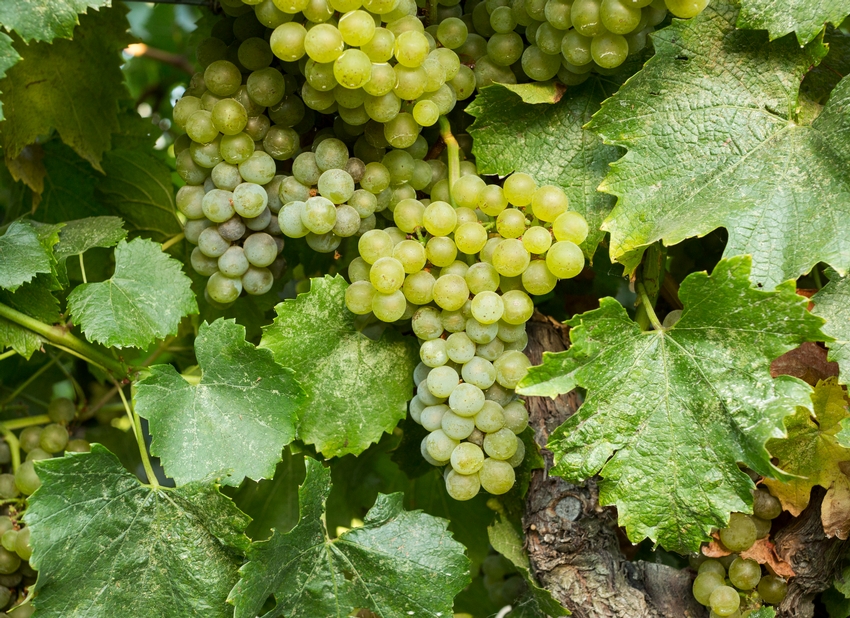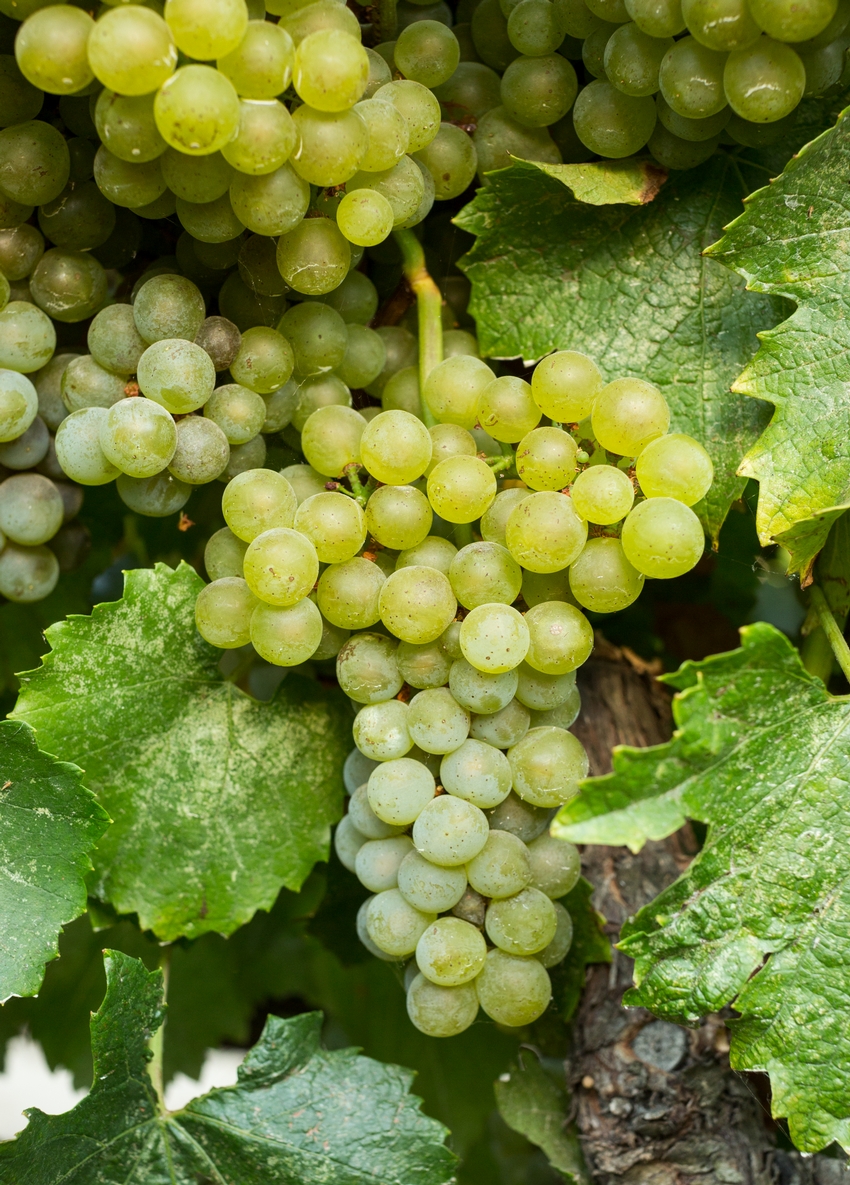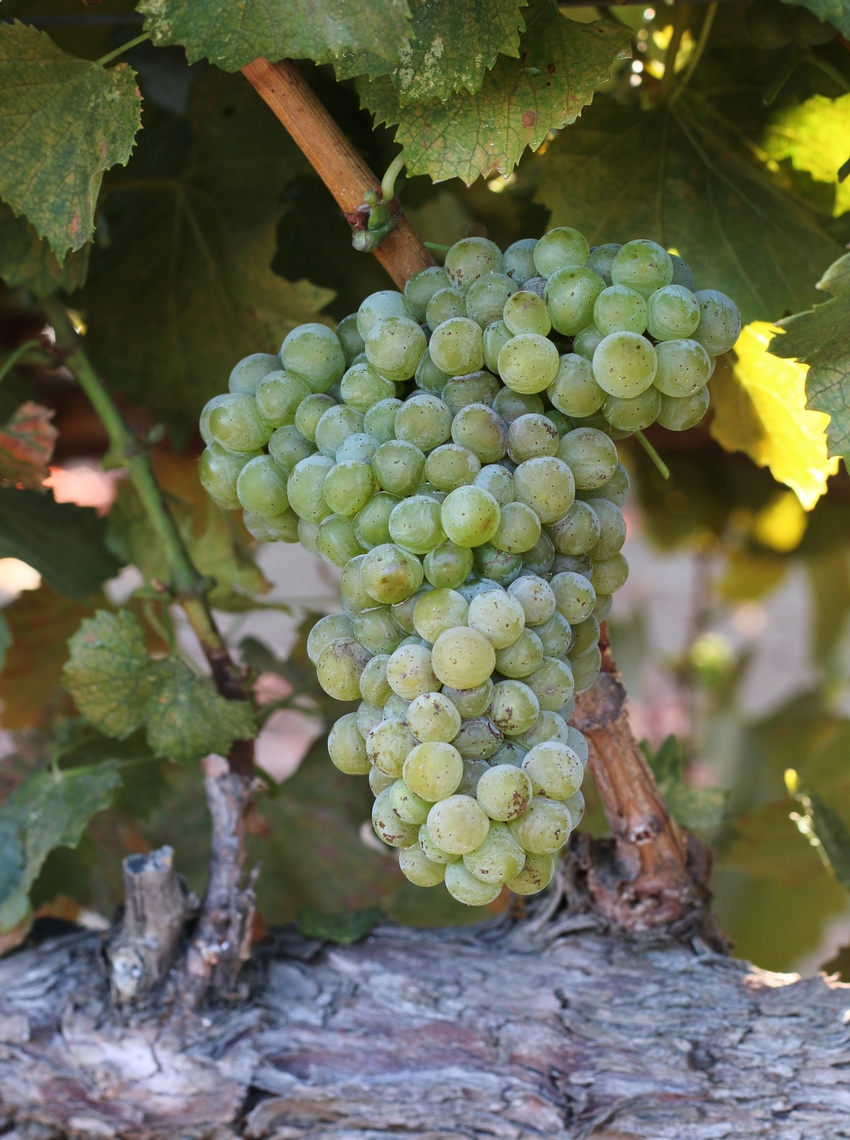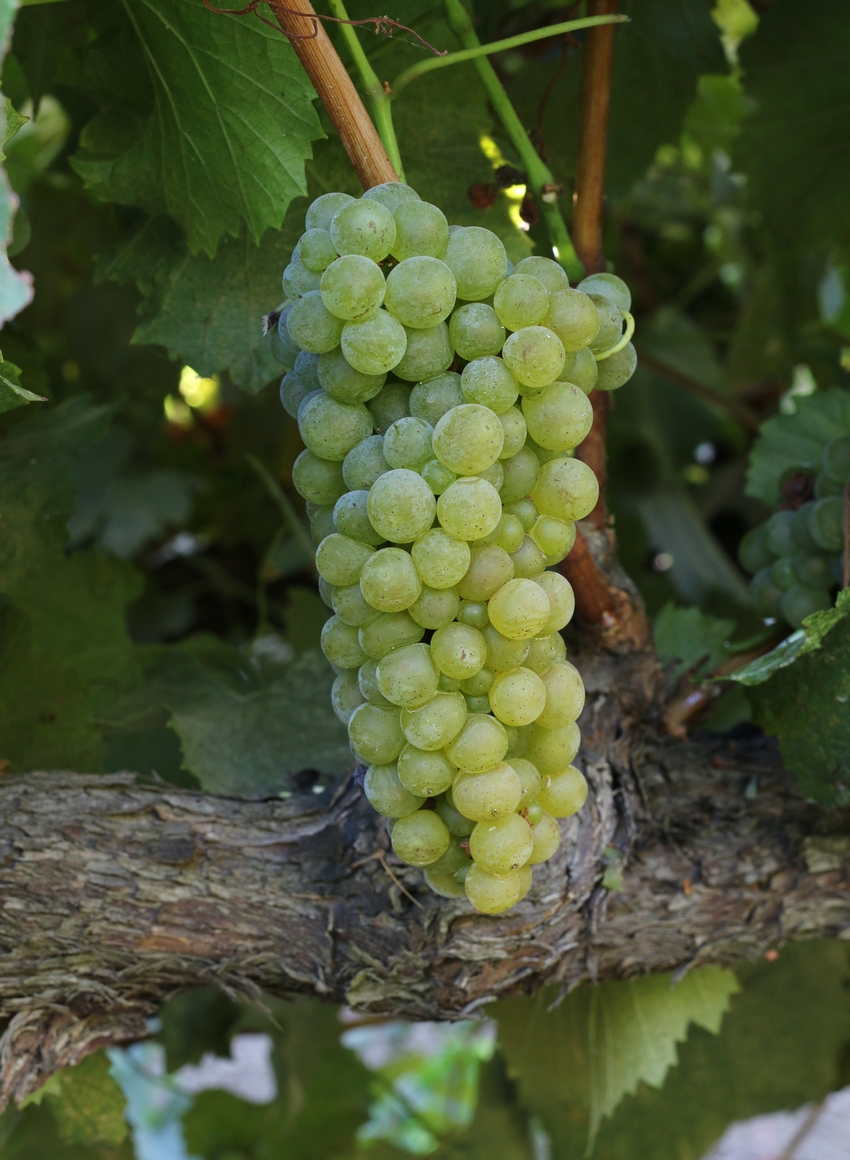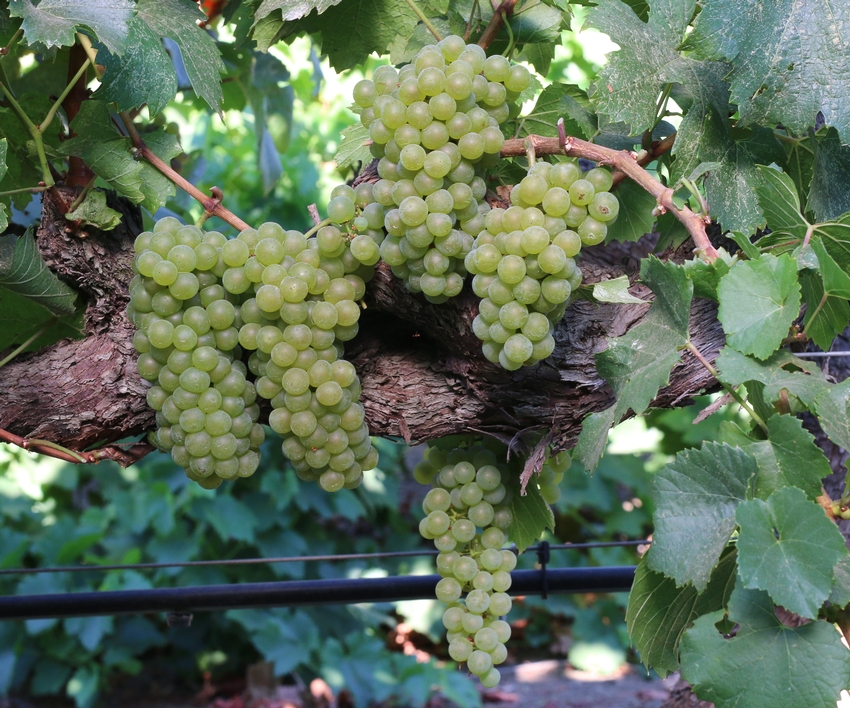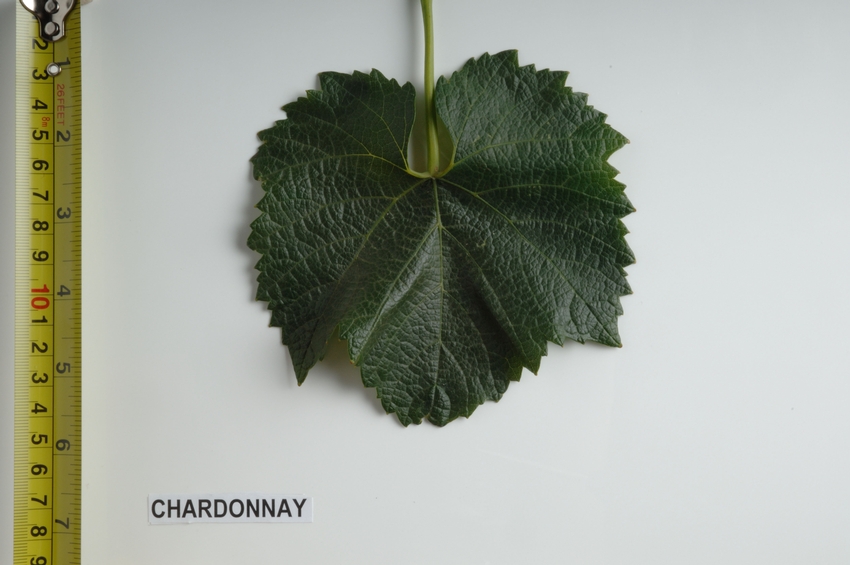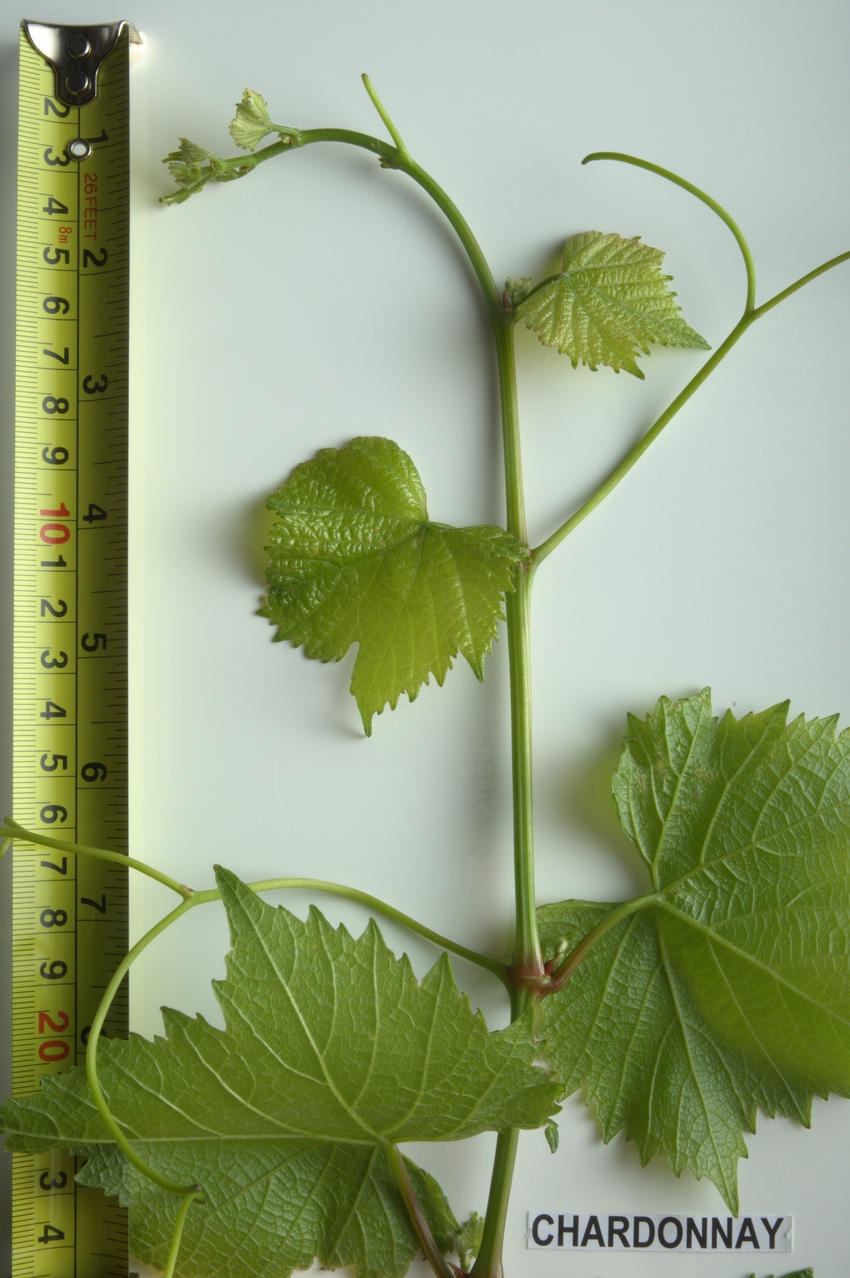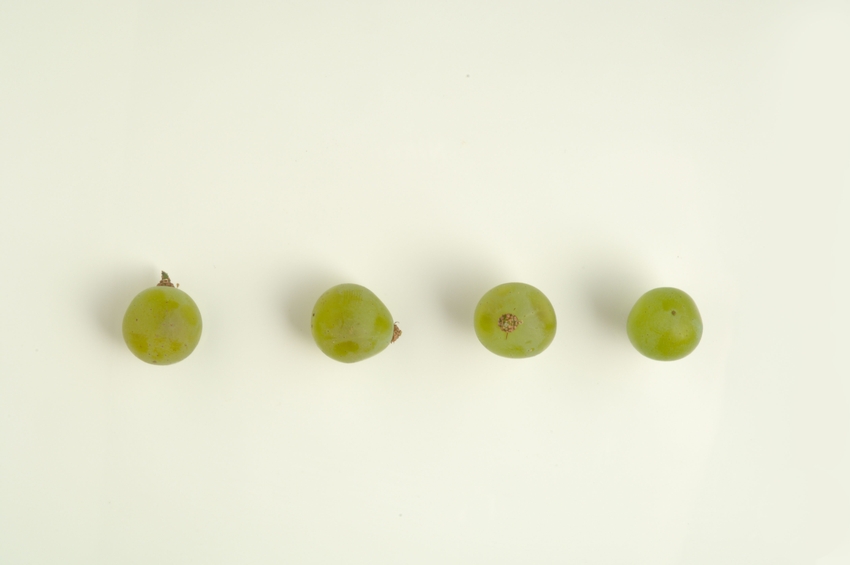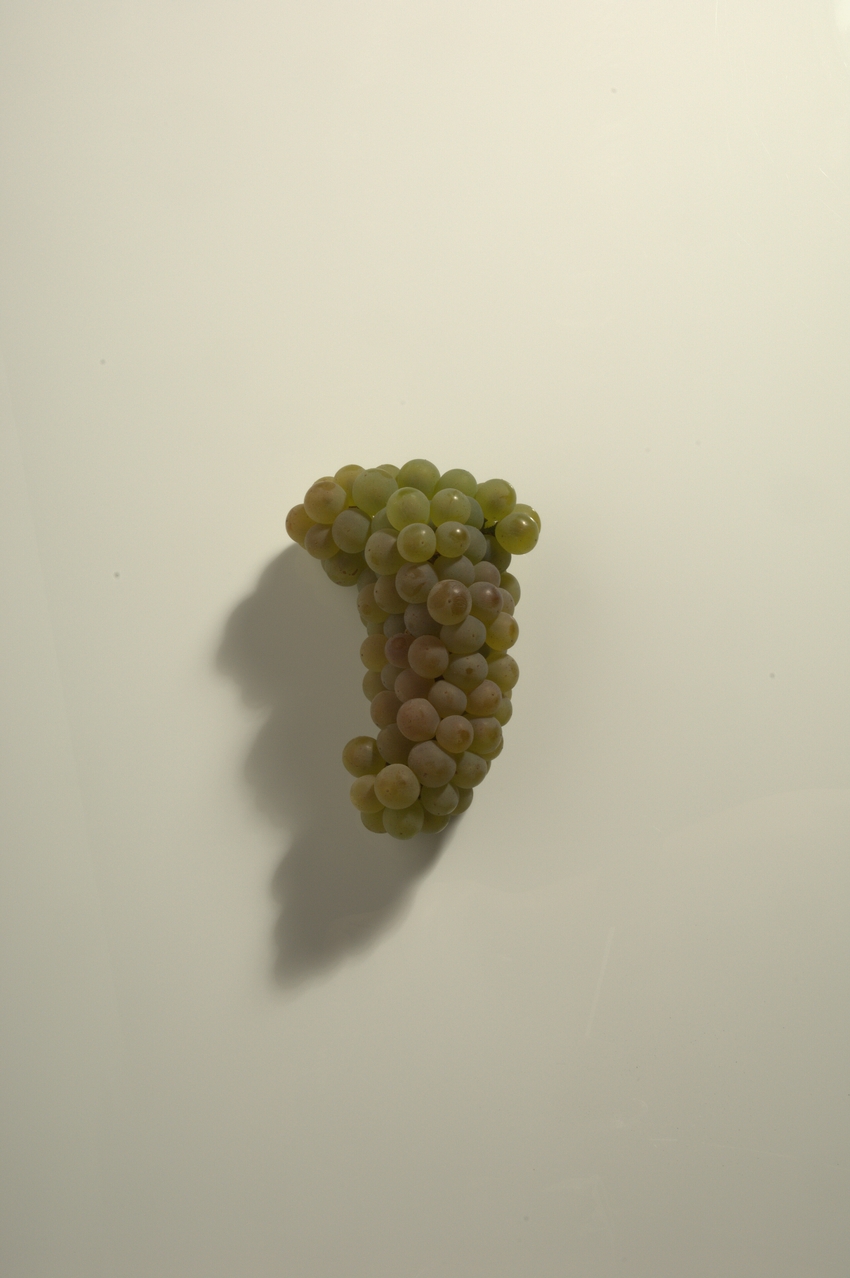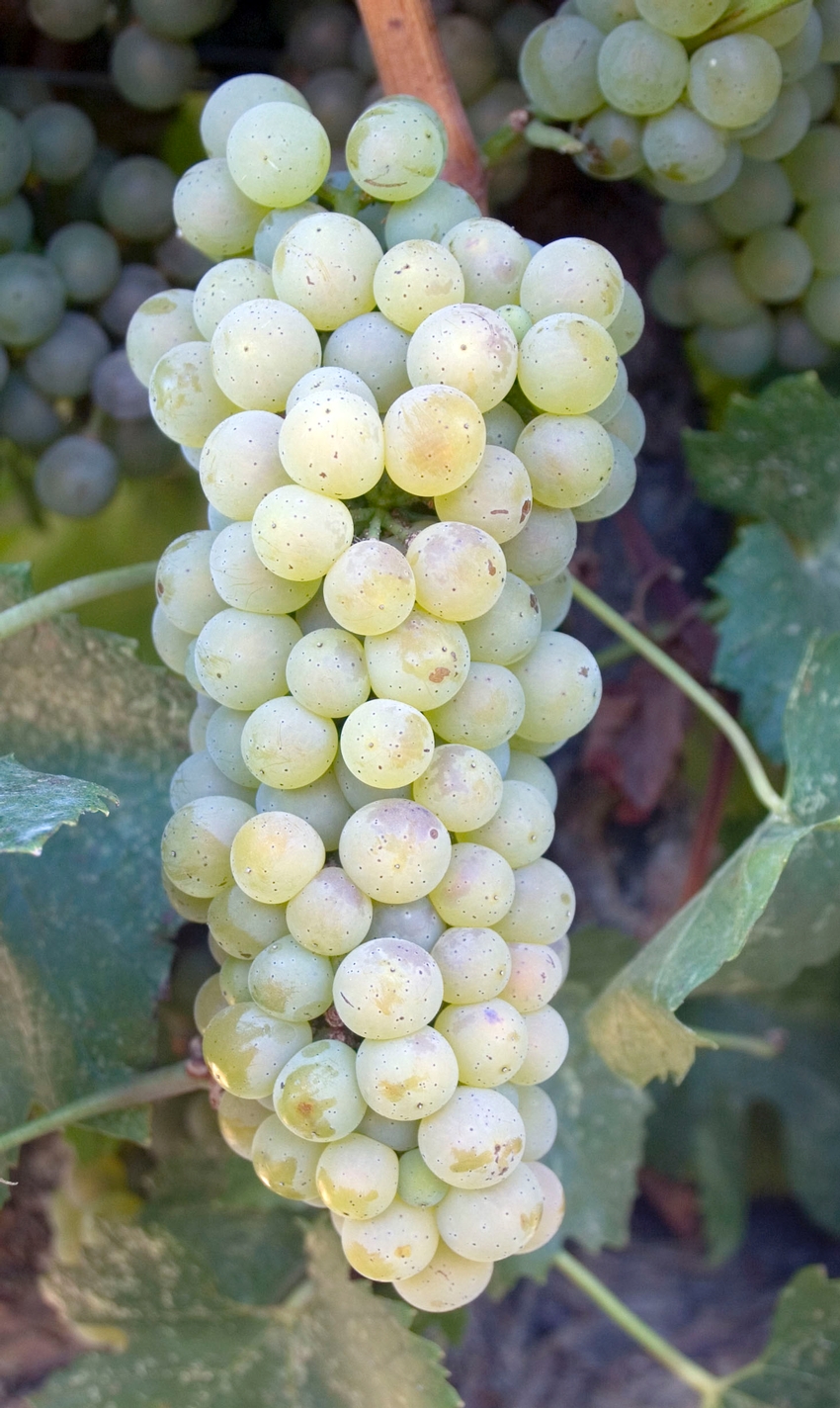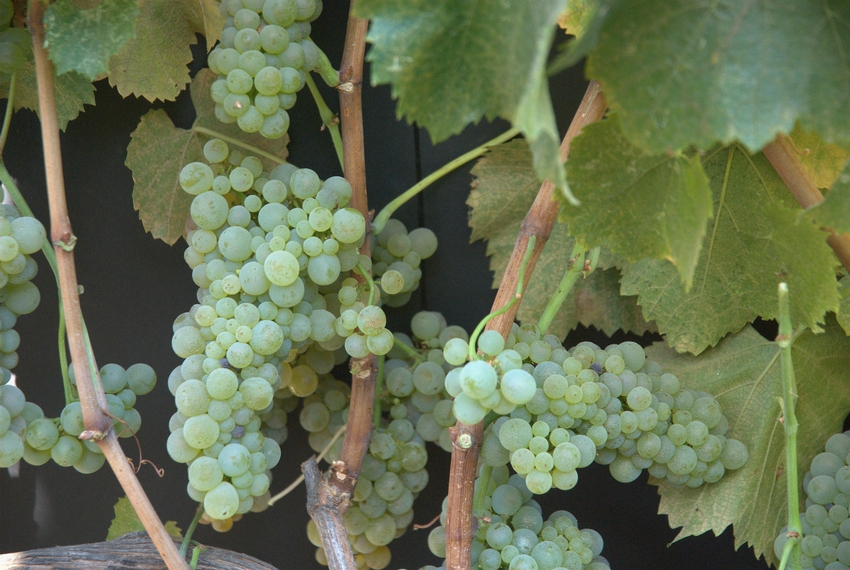
Grape Variety: Chardonnay
| Variety Name | Chardonnay |
|---|---|
| TTB Approved Name(s) | Chardonnay |
| All Synonyms | Arboisier, Arnaison Blanc, Arnoison, Aubaine, Auvergnat Blanc, Auvernas Blanc, Auvernat Blanc, Auxerrois Blanc, Auxois Blanc, Bargeois Blanc, Beaunois, Blanc de Champagne, Breisgauer Sussling, Burgundi Feher, Chablis, Chardennet, Chatey Petit, Chaudenet, Claevner, Clevner Weiss, Epinette Blanche, Epinette de Champagne, Ericey Blanc, Feher Chardonnay, Feherburgundi, Feinburgunder, Gamay Blanc, Gelber Weissburgunder, Gentil Blanc, Grosse Bourgogne, Klawner, Klevanjka Biela, Lisant, Luisant, Luizannais, Luizant, Luzannois, Maconnais, Maurillon Blanc, Melon Blanc, Melon d'Arbois, Moreau Blanc, Morillon, Morillon Blanc, Moulon, Noirien Blanc, Petit Chatey, Petit Sainte-Marie, Pino Shardone, Pinot Blanc a Cramant, Pinot Blanc Chardonnay, Pinot Chardonnay, Plant de Tonnerre, Romere, Romeret, Rouci Bile, Rousseau, Roussot, Rulander Weiss, Sainte Marie Petite, Sardone, Shardone, Weiss Silber, Weissburgunder, Weissedler |
| Countries of Origin | France |
| Species | Vitis vinifera |
| Pedigree | Pinot noir x Gouais blanc |
| References | |
| Berry Color | White |
| Uses | Wine |
| Comments | Chardonnay has been successfully grown in various climates and soils and adapts to different wine-making styles. For a complete history of the Chardonnay grape in California and a description of clonal material in that state, see the FPS 2007 Grape Program Newsletter at http://fps.ucdavis.edu, at Publications - Grape. |
Chardonnay PhotosClick photo to enlarge
Chardonnay Selections
| Chardonnay 04 | |
| Registration Status | Registered Registered is the ultimate status in the California Department of Food & Agricultures Grapevine Registration & Certification Program. Registered selections have successfully completed all disease testing required by the regulations. Registered selections have also been confirmed as true to variety by experts using visual observations, DNA-based testing or both. |
|---|---|
| Source | Martini vineyard in Carneros |
| Treatments | Heat treated 90 days , Tissue Culture Excision |
| Comments | Chardonnay FPS 04 (formerly Olmo #66) and FPS 05 (formerly Olmo #69) were two of the selections brought to FPS in 1964 by Dr. Harold Olmo (UC Davis) from clonal trials at Louis Martini's vineyard in Carneros. Martini obtained the material from the McCreas' Stony Hill vineyard in Napa; the source of the McCrea Chardonnay was the Wente vineyard in Livermore, California. Selections 04 and 05 were first registered in the California Grapevine Registration & Certification Program in 1969. Together they were known as 'clone 108' in the 1960's. |
| Chardonnay 05 | |
| Registration Status | Registered Registered is the ultimate status in the California Department of Food & Agricultures Grapevine Registration & Certification Program. Registered selections have successfully completed all disease testing required by the regulations. Registered selections have also been confirmed as true to variety by experts using visual observations, DNA-based testing or both. |
| Source | Martini vineyard in Carneros |
| Treatments | Heat treated 90 days |
| Comments | Chardonnay FPS 04 (formerly Olmo #66) and FPS 05 (formerly Olmo #69) were brought to FPS in 1964 by Dr. Harold Olmo after selection performed in the Martini Carneros vineyards. Both Chardonnay 04 and 05 were first registered in the California Grapevine Registration & Certification Program in 1969. Together they were known as 'clone 108' in the 1960's. Chardonnay 05 underwent microshoot tip tissue culture therapy in order to qualify it for planting in the Russell Ranch Foundation Vineyard. The treated material successfully completed testing to qualify it for planting in the Russell Ranch Vineyard in 2013 where it is known as Chardonnay 05.1. |
| Chardonnay 06 | |
| Registration Status | Registered Registered is the ultimate status in the California Department of Food & Agricultures Grapevine Registration & Certification Program. Registered selections have successfully completed all disease testing required by the regulations. Registered selections have also been confirmed as true to variety by experts using visual observations, DNA-based testing or both. |
| Source | Martini vineyard in Carneros, arrived at FPS in 1964 |
| Treatments | Heat treated 164-2 days |
| Comments | Chardonnay FPS 06 and FPS 08 (both formerly Olmo #68) were taken from the same vine at the Martini vineyards but were given different FPS selection numbers because they underwent heat treatment for different lengths of time (06-164-2 days and 08-114-3 days). FPS 06 was the highest yielding selection (over 4 tons/ acre) of the Stanly Lane vines which were subjected to field trials by Dr. Olmo in the late 1950s. FPS 06 first appeared on the California Grapevine Registration & Certification Program list in 1973. |
| Chardonnay 08 | |
| Registration Status | Registered Registered is the ultimate status in the California Department of Food & Agricultures Grapevine Registration & Certification Program. Registered selections have successfully completed all disease testing required by the regulations. Registered selections have also been confirmed as true to variety by experts using visual observations, DNA-based testing or both. |
| Source | Martini vineyard in Carneros, arrived at FPS in 1964 |
| Treatments | Heat treated 114-3 days |
| Comments | Chardonnay FPS 06 and FPS 08 (both formerly Olmo #68) were taken from the same vine at the Martini vineyards but were given different FPS selection numbers because they underwent heat treatment for different lengths of time (06-164-2 days and 08-114-3 days). FPS 08 first appeared on the California Grapevine Registration & Certification Program list in 1973. |
| Chardonnay 09 | |
| Registration Status | Registered Registered is the ultimate status in the California Department of Food & Agricultures Grapevine Registration & Certification Program. Registered selections have successfully completed all disease testing required by the regulations. Registered selections have also been confirmed as true to variety by experts using visual observations, DNA-based testing or both. |
| Source | Chardonnay FPS 08 in the late 1960's |
| Treatments | Heat treatment 102 days |
| Comments | Chardonnay FPS 09, FPS 10, FPS 11, FPS 12 and FPS 13 were all propagated from FPS 08 in the late 1960s. FPS 09 first appeared on the California Grapevine Registration & Certification Program list in 1973. |
| Chardonnay 10 | |
| Registration Status | Registered Registered is the ultimate status in the California Department of Food & Agricultures Grapevine Registration & Certification Program. Registered selections have successfully completed all disease testing required by the regulations. Registered selections have also been confirmed as true to variety by experts using visual observations, DNA-based testing or both. |
| Source | Chardonnay FPS 08 in the late 1960's |
| Treatments | Heat treatment 102 days |
| Comments | Chardonnay FPS 09, FPS 10, FPS 11, FPS 12 and FPS 13 were all propagated from FPS 08 in the late 1960s. FPS 10 first appeared on the California Grapevine Registration & Certification Program list in 1973. |
| Chardonnay 11 | |
| Registration Status | Registered Registered is the ultimate status in the California Department of Food & Agricultures Grapevine Registration & Certification Program. Registered selections have successfully completed all disease testing required by the regulations. Registered selections have also been confirmed as true to variety by experts using visual observations, DNA-based testing or both. |
| Source | Chardonnay FPS 08 in the late 1960's |
| Treatments | Heat treatment 116 days |
| Comments | Chardonnay FPS 09, FPS 10, FPS 11, FPS 12 and FPS 13 were all propagated from FPS 08 in the late 1960s. FPS 11 first appeared on the California Grapevine Registration & Certification Program list in 1973. |
| Chardonnay 12 | |
| Registration Status | Registered Registered is the ultimate status in the California Department of Food & Agricultures Grapevine Registration & Certification Program. Registered selections have successfully completed all disease testing required by the regulations. Registered selections have also been confirmed as true to variety by experts using visual observations, DNA-based testing or both. |
| Source | Chardonnay FPS 08 in the late 1960's |
| Treatments | Heat treatment 116-2 days |
| Comments | Chardonnay FPS 09, FPS 10, FPS 11, FPS 12 and FPS 13 were all propagated from FPS 08 in the late 1960s. FPS 12 first appeared on the California Grapevine Registration & Certification Program list in 1973. |
| Chardonnay 13 | |
| Registration Status | Registered Registered is the ultimate status in the California Department of Food & Agricultures Grapevine Registration & Certification Program. Registered selections have successfully completed all disease testing required by the regulations. Registered selections have also been confirmed as true to variety by experts using visual observations, DNA-based testing or both. |
| Source | Chardonnay FPS 08 in the late 1960's |
| Treatments | Heat treatment 144 days |
| Comments | Chardonnay FPS 09, FPS 10, FPS 11, FPS 12 and FPS 13 were all propagated from FPS 08 in the late 1960s. FPS 13 first appeared on the California Grapevine Registration & Certification Program list in 1973. |
| Chardonnay 15 | |
| Registration Status | Registered Registered is the ultimate status in the California Department of Food & Agricultures Grapevine Registration & Certification Program. Registered selections have successfully completed all disease testing required by the regulations. Registered selections have also been confirmed as true to variety by experts using visual observations, DNA-based testing or both. |
| Source | Prosser clone, Prosser, Washington |
| Treatments | Heat treated 173 days |
| Comments | The plant material that became Chardonnay 15 was sent to UC Davis in 1969 by Dr. Walter Clore, of the Irrigated Agriculture Research and Extension Station (IARES) in Prosser, Washington. In the past this selection has been known in the state of Washington as "the Prosser clone". FPS 15 was from row 2 vine 6 of the Low section variety block at Prosser. Chardonnay FPS 15 was registered in the California Grapevine Registration & Certification program in 1974. Chardonnay 15 underwent microshoot tip tissue culture therapy at FPS in 2011 to qualify for the Russell Ranch Foundation Vineyard. The treated material successfully completed testing in 2013 and was planted at Russell Ranch as Chardonnay FPS 15.1. |
| Chardonnay 17 (proprietary) | |
| Registration Status | Registered Registered is the ultimate status in the California Department of Food & Agricultures Grapevine Registration & Certification Program. Registered selections have successfully completed all disease testing required by the regulations. Registered selections have also been confirmed as true to variety by experts using visual observations, DNA-based testing or both. |
| Source | Robert Young vineyard, Alexander Valley |
| Treatments | Heat treatment 62 days , Tissue Culture Excision |
| Proprietary | Proprietary- cannot be distributed without written permission from owner. |
| Patented / Proprietary | Proprietary |
| Comments | Chardonnay 17 came to Foundation Plant Services in 1982 from the Robert Young Vineyard in Alexander Valley. Its original source vines have often been referred to as "the Robert Young clone", which was planted with budwood brought from the Wente vineyard in Livermore in the 1960's. FPS 17 first appeared on the California Grapevine Registration & Certification Program list in 1987. The selection is a proprietary one to Robert Young Vineyards. Chardonnay 17 underwent microshoot tip tissue culture therapy in 2011 in order to qualify it for the Russell Ranch Foundation Vineyard. The treated material successfully completed testing in 2013 and was planted at Russell Ranch as Chardonnay 17.1. |
| Chardonnay 18 | |
| Registration Status | Registered Registered is the ultimate status in the California Department of Food & Agricultures Grapevine Registration & Certification Program. Registered selections have successfully completed all disease testing required by the regulations. Registered selections have also been confirmed as true to variety by experts using visual observations, DNA-based testing or both. |
| Source | Rauscedo 8 clone, Italy |
| Treatments | None |
| Comments | Chardonnay FPS 18 came to Foundation Plant Services in 1983 with the designation of Rauscedo 8 and is now in the public collection. Literature from Rauscedo indicates that Rauscedo 8 was originally selected in San Michele all'Adige in the 1970's. That selection did not undergo any treatment at FPS and first appeared in the California Grapevine Registration & Certification Program in 1987. FPS 18 was included in some of the clonal trials in California. In Monterey County, it produced moderate yields on clusters of moderate weight. (Bettiga, 2002). In Fresno, selection 18 was in the higher yielding group (22.6 kg/vine) but in the intermediate group for clusters per vine, cluster weight, berries per cluster, and berry weight. It exhibited a high incidence of sour rot. (Fidelibus et.al., 2006). In Sonoma County, FPS 18 produced high yield and early sugar accumulation but did not score highly in the still wine tasting category. (Heald and Heald, 1999). This clone is used successfully in Italy as a base for sparkling wine. |
| Chardonnay 20 | |
| Registration Status | Registered Registered is the ultimate status in the California Department of Food & Agricultures Grapevine Registration & Certification Program. Registered selections have successfully completed all disease testing required by the regulations. Registered selections have also been confirmed as true to variety by experts using visual observations, DNA-based testing or both. |
| Source | Conegliano 6, Italy |
| Treatments | None |
| Comments | Four Chardonnay selections were received by Foundation Plant Services from Conegliano, Italy, in 1984. The selections were labeled Congeliano 6, 7, 10, and 11 and became Chardonnay FPS 20, 21, 22, and 23, respectively. All four tested negative for virus and were not treated. They appeared for the first time in the California Registration & Certification Program in 1990. The FPS Conegliano clones appeared in some of the clonal trials in California. Larry Bettiga put FPS 20, 22, and 23 in the Pacific Vineyard trial in Greenfield. FPS 22 and 23 had lower yields attributed to erratic fruit set resulting in lower berry weights and numbers of berries per cluster plus had shot berries. FPS 20 had larger berries, moderate yields, and lower °Brix than the other selections. (Bettiga, 2002). FPS 20 performed in the same relative fashion in the Fresno trial. (Fidelibus et.al, 2006). FPS 22 showed high vigor but scored in tier 1 in the wine portion of the Chalk Hill trial in Sonoma. (Heald and Heald, 1999). |
| Chardonnay 21 | |
| Registration Status | Registered Registered is the ultimate status in the California Department of Food & Agricultures Grapevine Registration & Certification Program. Registered selections have successfully completed all disease testing required by the regulations. Registered selections have also been confirmed as true to variety by experts using visual observations, DNA-based testing or both. |
| Source | Conegliano 7 clone, Italy |
| Treatments | None |
| Comments | Four Chardonnay selections were received by Foundation Plant Services from Conegliano, Italy, in 1984. The selections were labeled Congeliano 6, 7, 10, and 11 and became Chardonnay FPS 20, 21, 22, and 23, respectively. All four tested negative for virus and were not treated. They appeared for the first time in the California Registration & Certification Program in 1990. The FPS Conegliano clones appeared in some of the clonal trials in California. Larry Bettiga put FPS 20, 22, and 23 in the Pacific Vineyard trial in Greenfield. FPS 22 and 23 had lower yields attributed to erratic fruit set resulting in lower berry weights and numbers of berries per cluster plus had shot berries. FPS 20 had larger berries, moderate yields, and lower °Brix than the other selections. (Bettiga, 2002). FPS 20 performed in the same relative fashion in the Fresno trial. (Fidelibus et.al, 2006). FPS 22 showed high vigor but scored in tier 1 in the wine portion of the Chalk Hill trial in Sonoma. (Heald and Heald, 1999). |
| Chardonnay 22 | |
| Registration Status | Registered Registered is the ultimate status in the California Department of Food & Agricultures Grapevine Registration & Certification Program. Registered selections have successfully completed all disease testing required by the regulations. Registered selections have also been confirmed as true to variety by experts using visual observations, DNA-based testing or both. |
| Source | Conegliano 10 clone, Italy |
| Treatments | None |
| Comments | Four Chardonnay selections were received by Foundation Plant Services from Conegliano, Italy, in 1984. The selections were labeled Congeliano 6, 7, 10, and 11 and became Chardonnay FPS 20, 21, 22, and 23, respectively. All four tested negative for virus and were not treated. They appeared for the first time in the California Registration & Certification Program in 1990. The FPS Conegliano clones appeared in some of the clonal trials in California. Larry Bettiga put FPS 20, 22, and 23 in the Pacific Vineyard trial in Greenfield. FPS 22 and 23 had lower yields attributed to erratic fruit set resulting in lower berry weights and numbers of berries per cluster plus had shot berries. FPS 20 had larger berries, moderate yields, and lower °Brix than the other selections. (Bettiga, 2002). FPS 20 performed in the same relative fashion in the Fresno trial. (Fidelibus et.al, 2006). FPS 22 showed high vigor but scored in tier 1 in the wine portion of the Chalk Hill trial in Sonoma. (Heald and Heald, 1999). |
| Chardonnay 23 | |
| Registration Status | Registered Registered is the ultimate status in the California Department of Food & Agricultures Grapevine Registration & Certification Program. Registered selections have successfully completed all disease testing required by the regulations. Registered selections have also been confirmed as true to variety by experts using visual observations, DNA-based testing or both. |
| Source | Conegliano 11 clone, Italy |
| Treatments | None |
| Comments | Four Chardonnay selections were received by Foundation Plant Services from Conegliano, Italy, in 1984. The selections were labeled Congeliano 6, 7, 10, and 11 and became Chardonnay FPS 20, 21, 22, and 23, respectively. All four tested negative for virus and were not treated. They appeared for the first time in the California Registration & Certification Program in 1990. The FPS Conegliano clones appeared in some of the clonal trials in California. Larry Bettiga put FPS 20, 22, and 23 in the Pacific Vineyard trial in Greenfield. FPS 22 and 23 had lower yields attributed to erratic fruit set resulting in lower berry weights and numbers of berries per cluster plus had shot berries. FPS 20 had larger berries, moderate yields, and lower °Brix than the other selections. (Bettiga, 2002). FPS 20 performed in the same relative fashion in the Fresno trial. (Fidelibus et.al, 2006). FPS 22 showed high vigor but scored in tier 1 in the wine portion of the Chalk Hill trial in Sonoma. (Heald and Heald, 1999). The complete article on the Chardonnay selections available at FPS can be accessed in the 2007 FPS Grape Program Newsletter on the FPS website http://fps.ucdavis.edu, in the Publications section under Grape. |
| Chardonnay 27 | |
| Registration Status | Registered Registered is the ultimate status in the California Department of Food & Agricultures Grapevine Registration & Certification Program. Registered selections have successfully completed all disease testing required by the regulations. Registered selections have also been confirmed as true to variety by experts using visual observations, DNA-based testing or both. |
| Source | Matanzas Creek Mt. Eden clone 1 |
| Treatments | Heat treated 61-2 days |
| Comments | Chardonnay FPS 27 was donated to the FPS public collection by Matanzas Creek Winery in 1984. FPS 27 was designated "Matanzas Creek Mt. Eden Vineyard clone 1". It first appeared on the California Grapevine Registration & Certification Program list in 1992. |
| Chardonnay 28 | |
| Registration Status | Registered Registered is the ultimate status in the California Department of Food & Agricultures Grapevine Registration & Certification Program. Registered selections have successfully completed all disease testing required by the regulations. Registered selections have also been confirmed as true to variety by experts using visual observations, DNA-based testing or both. |
| Source | Matanzas Creek Mt. Eden clone 2 |
| Treatments | Heat treated 61-1 days , Tissue Culture Excision |
| Comments | Chardonnay FPS 28 was donated to the Foundation Plant Services public grapevine collection by Matanzas Creek Winery in 1984. FPS 28 was designated "Matanzas Creek Mt. Eden Vineyard clone 2". After successful completion of testing, Chardonnay 28 first appeared on the California Grapevine Registration & Certification Program list in 1994. Chardonnay 28 underwent microshoot tip tissue culture therapy in 2011 in order to qualify for planting in the Russell Ranch Foundation Vineyard. The treated material successfully completed testing in 2013 and was planted at Russell Ranch as Chardonnay 28.1. |
| Chardonnay 37 | |
| Registration Status | Registered Registered is the ultimate status in the California Department of Food & Agricultures Grapevine Registration & Certification Program. Registered selections have successfully completed all disease testing required by the regulations. Registered selections have also been confirmed as true to variety by experts using visual observations, DNA-based testing or both. |
| Source | Reported to be French clone 95, Champagne Perrier-Jouet, France |
| Treatments | Microshoot tip tissue culture |
| Comments | Domaine Mumm contracted with Foundation Plant Services to import five Chardonnay clones from Champagne Perrier-Jouet, France, in 1988 for the Domaine Mumm vineyards and the FPS public collection. None of the importations was a duplicate of other registered FPS selections. This contract was entered prior to the time of the ENTAV-INRA® trademark program, so the clones are generic clones and contain the references “reported to be French”. The imported clones with the FPS selection number in parentheses behind the reported French clone number are French 75 (FPS 43 and 46), French 95 (FPS 37 and 38), French 116 (FPS 83), French 117 (FPS 81) and French 125 (FPS 40). All of the selections underwent microshoot tip tissue culture treatment for virus elimination and first appeared registered in the California Grapevine Registration & Certification program in 1997 (FPS 37, 38 and 46), 1998 (FPS 43), 1999 (FPS 40) and 2002 (FPS 81 and 83). |
| Chardonnay 38 | |
| Registration Status | Registered Registered is the ultimate status in the California Department of Food & Agricultures Grapevine Registration & Certification Program. Registered selections have successfully completed all disease testing required by the regulations. Registered selections have also been confirmed as true to variety by experts using visual observations, DNA-based testing or both. |
| Source | Reported to be French clone 95, Champagne Perrier-Jouet, France |
| Treatments | Microshoot tip tissue culture |
| Comments | Domaine Mumm contracted with Foundation Plant Services to import five Chardonnay clones from Champagne Perrier-Jouet, France, in 1988 for the Domaine Mumm vineyards and the FPS public collection. None of the importations was a duplicate of other registered FPS selections. This contract was entered prior to the time of the ENTAV-INRA® trademark program, so the clones are generic clones and contain the references “reported to be French”. The imported clones with the FPS selection number in parentheses behind the reported French clone number are French 75 (FPS 43 and 46), French 95 (FPS 37 and 38), French 116 (FPS 83), French 117 (FPS 81) and French 125 (FPS 40). Chardonnay 38 underwent microshoot tip tissue culture therapy before 1989. After successful completion of testing for the California Grapevine Registration & Certification Program, Chardonnay 38 was planted in FPS' Classic Foundation Vineyard in 1995. |
| Chardonnay 39 | |
| Registration Status | Registered Registered is the ultimate status in the California Department of Food & Agricultures Grapevine Registration & Certification Program. Registered selections have successfully completed all disease testing required by the regulations. Registered selections have also been confirmed as true to variety by experts using visual observations, DNA-based testing or both. |
| Source | Reported to be French clone 78, Dijon, France, via Oregon State University |
| Treatments | Microshoot tip tissue culture |
| Comments | In the mid-1980's, Oregon State University imported some Burgundian clonal material through the Office National Interprofessionnel des Vins (ONIVINS) in Dijon, France. OSU agreed to supply Foundation Plant Services with copies of those clones. The Oregon State importation preceded the establishment of the ENTAV-INRA™ program for official French clones, and therefore these are considered ‘generic’ French clones the authenticity of which FPS cannot guarantee. Chardonnay 39 (reported to be French clone 78) arrived at FPS in 1988. The original material underwent microshoot tip tissue culture therapy before 1989. After successful completion of testing for the California Grapevine Registration & Certification Program, Chardonnay 39 was planted in the FPS Classic Foundation Vineyard in 1995. |
| Chardonnay 40 | |
| Registration Status | Registered Registered is the ultimate status in the California Department of Food & Agricultures Grapevine Registration & Certification Program. Registered selections have successfully completed all disease testing required by the regulations. Registered selections have also been confirmed as true to variety by experts using visual observations, DNA-based testing or both. |
| Source | Reported to be French clone 125, Champagne Perrier-Jouet, France |
| Treatments | Microshoot tip tissue culture |
| Comments | Domaine Mumm contracted with Foundation Plant Services to import five Chardonnay clones from Champagne Perrier-Jouet, France, in 1988 for the Domaine Mumm vineyards and the FPS public collection. None of the importations was a duplicate of other registered FPS selections. This contract was entered prior to the time of the ENTAV-INRA® trademark program, so the clones are generic clones and contain the references “reported to be French”. The imported clones with the FPS selection number in parentheses behind the reported French clone number are French 75 (FPS 43 and 46), French 95 (FPS 37 and 38), French 116 (FPS 83), French 117 (FPS 81) and French 125 (FPS 40). All of the selections underwent microshoot tip tissue culture treatment for virus elimination and first appeared registered in the California Grapevine Registration & Certification program in 1997 (FPS 37, 38 and 46), 1998 (FPS 43), 1999 (FPS 40) and 2002 (FPS 81 and 83). |
| Chardonnay 41 | |
| Registration Status | Registered Registered is the ultimate status in the California Department of Food & Agricultures Grapevine Registration & Certification Program. Registered selections have successfully completed all disease testing required by the regulations. Registered selections have also been confirmed as true to variety by experts using visual observations, DNA-based testing or both. |
| Source | Reported to be French clone 352, l'Espiguette, France, via Oregon State University |
| Treatments | Microshoot tip tissue culture |
| Comments | In the mid-1980's, Oregon State University imported some Burgundian clonal material through the Office National Interprofessionnel des Vins (ONIVINS) in Dijon, France. OSU agreed to supply Foundation Plant Services with copies of those clones. The Oregon State importation preceded the establishment of the ENTAV-INRA™ program for official French clones, and therefore these are considered ‘generic’ French clones the authenticity of which FPS cannot guarantee. FPS 41 (reported to be French clone 352) arrived at FPS in 1987 and first appeared on the California Grapevine Registration & Certification Program list in 1997. |
| Chardonnay 42 | |
| Registration Status | Registered Registered is the ultimate status in the California Department of Food & Agricultures Grapevine Registration & Certification Program. Registered selections have successfully completed all disease testing required by the regulations. Registered selections have also been confirmed as true to variety by experts using visual observations, DNA-based testing or both. |
| Source | Reported to be French clone 277, Dijon, France, via Oregon State University |
| Treatments | Microshoot tip tissue culture |
| Comments | In the mid-1980's, Oregon State University imported some Burgundian clonal material through the Office National Interprofessionnel des Vins (ONIVINS) in Dijon, France. OSU agreed to supply Foundation Plant Services with copies of those clones. The Oregon State importation preceded the establishment of the ENTAV-INRA™ program for official French clones, and therefore these are considered ‘generic’ French clones the authenticity of which FPS cannot guarantee. FPS 42 (reported to be French clone 277) arrived at FPS in 1988 and first appeared on the California Grapevine Registration & Certification Program list in 1997. Chardonnay FPS 49 and FPS 51 are also reported to be French clone 277. |
| Chardonnay 43 | |
| Registration Status | Registered Registered is the ultimate status in the California Department of Food & Agricultures Grapevine Registration & Certification Program. Registered selections have successfully completed all disease testing required by the regulations. Registered selections have also been confirmed as true to variety by experts using visual observations, DNA-based testing or both. |
| Source | Reported to be French clone 75, Champagne Perrier-Jouet, France |
| Treatments | Microshoot tip tissue culture |
| Comments | Domaine Mumm contracted with Foundation Plant Services to import five Chardonnay clones from Champagne Perrier-Jouet, France, in 1988 for the Domaine Mumm vineyards and the FPS public collection. None of the importations was a duplicate of other registered FPS selections. This contract was entered prior to the time of the ENTAV-INRA® trademark program, so the clones are generic clones and contain the references “reported to be French”. The imported clones with the FPS selection number in parentheses behind the reported French clone number are French 75 (FPS 43 and 46), French 95 (FPS 37 and 38), French 116 (FPS 83), French 117 (FPS 81) and French 125 (FPS 40). All of the selections underwent microshoot tip tissue culture treatment for virus elimination and first appeared registered in the California Grapevine Registration & Certification program in 1997 (FPS 37, 38 and 46), 1998 (FPS 43), 1999 (FPS 40) and 2002 (FPS 81 and 83). |
| Chardonnay 44 | |
| Registration Status | Registered Registered is the ultimate status in the California Department of Food & Agricultures Grapevine Registration & Certification Program. Registered selections have successfully completed all disease testing required by the regulations. Registered selections have also been confirmed as true to variety by experts using visual observations, DNA-based testing or both. |
| Source | Reported to be French clone 77, Dijon, France, via Oregon State University |
| Treatments | Microshoot tip tissue culture |
| Comments | In the mid-1980's, Oregon State University imported some Burgundian clonal material through the Office National Interprofessionnel des Vins (ONIVINS) in Dijon, France. OSU agreed to supply Foundation Plant Services with copies of those clones. The Oregon State importation preceded the establishment of the ENTAV-INRA™ program for official French clones, and therefore these are considered ‘generic’ French clones the authenticity of which FPS cannot guarantee. FPS 44 (reported to be French clone 77) arrived at FPS in 1988 and first appeared on the California Grapevine Registration & Certification Program list in 1998. Chardonnay FPS 45 is also reported to be French clone 77. |
| Chardonnay 45 | |
| Registration Status | Registered Registered is the ultimate status in the California Department of Food & Agricultures Grapevine Registration & Certification Program. Registered selections have successfully completed all disease testing required by the regulations. Registered selections have also been confirmed as true to variety by experts using visual observations, DNA-based testing or both. |
| Source | Reported to be French clone 77, Dijon, France, via Oregon State University |
| Treatments | Microshoot tip tissue culture therapy |
| Comments | In the mid-1980's, Oregon State University imported some Burgundian clonal material through the Office National Interprofessionnel des Vins (ONIVINS) in Dijon, France. OSU agreed to supply Foundation Plant Services with copies of those clones. The Oregon State importation preceded the establishment of the ENTAV-INRA™ program for official French clones, and therefore these are considered ‘generic’ French clones the authenticity of which FPS cannot guarantee. FPS 45 (reported to be French clone 77) arrived at FPS in 1988 and first appeared on the California Grapevine Registration & Certification Program list in 1997. Chardonnay FPS 44 is also reported to be French clone 77. |
| Chardonnay 46 | |
| Registration Status | Registered Registered is the ultimate status in the California Department of Food & Agricultures Grapevine Registration & Certification Program. Registered selections have successfully completed all disease testing required by the regulations. Registered selections have also been confirmed as true to variety by experts using visual observations, DNA-based testing or both. |
| Source | Reported to be French clone 75, Champagne Perrier-Jouet, France |
| Treatments | Microshoot tip tissue culture |
| Comments | Domaine Mumm contracted with Foundation Plant Services to import five Chardonnay clones from Champagne Perrier-Jouet, France, in 1988 for the Domaine Mumm vineyards and the FPS public collection. None of the importations was a duplicate of other registered FPS selections. This contract was entered prior to the time of the ENTAV-INRA® trademark program, so the clones are generic clones and contain the references “reported to be French”. The imported clones with the FPS selection number in parentheses behind the reported French clone number are French 75 (FPS 43 and 46), French 95 (FPS 37 and 38), French 116 (FPS 83), French 117 (FPS 81) and French 125 (FPS 40). All of the selections underwent microshoot tip tissue culture treatment for virus elimination and first appeared registered in the California Grapevine Registration & Certification program in 1997 (FPS 37, 38 and 46), 1998 (FPS 43), 1999 (FPS 40) and 2002 (FPS 81 and 83). |
| Chardonnay 48 | |
| Registration Status | Registered Registered is the ultimate status in the California Department of Food & Agricultures Grapevine Registration & Certification Program. Registered selections have successfully completed all disease testing required by the regulations. Registered selections have also been confirmed as true to variety by experts using visual observations, DNA-based testing or both. |
| Source | 'clone 2', provided by Denis Fetzmann, Cote d'Or, France, arrived at FPS in 1981 |
| Treatments | Heat treatment (109 days) & microshoot tip tissue culture therapy |
| Comments | A collection of French clonal material was imported to Foundation Plant Services from the Cote d'Or, Burgundy, France in 1981. The material is French clonal material provided by Denis Fetzmann, grandson of Louis Latour who founded Maison Louis Latour. Four separate clones are represented by this group, which are now part of the Foundation Plant Services public collection as Chardonnay 48, 50, 54, 71 and 73. Chardonnay 48 and 50 are from the same clonal material that was labeled “clone 2” by the importer. The original material for Chardonnay 48 underwent both heat treatment (109 days) and microshoot tip tissue culture therapy at FPS. After successful completion of testing for the California Grapevine Registration & Certification Program, Chardonnay 48 was planted in the FPS Classic Foundation Vineyard in 1995. |
| Chardonnay 49 | |
| Registration Status | Registered Registered is the ultimate status in the California Department of Food & Agricultures Grapevine Registration & Certification Program. Registered selections have successfully completed all disease testing required by the regulations. Registered selections have also been confirmed as true to variety by experts using visual observations, DNA-based testing or both. |
| Source | Reported to be French clone 277, Dijon, France, via Oregon State University |
| Treatments | Microshoot tip tissue culture |
| Comments | In the mid-1980's, Oregon State University imported some Burgundian clonal material through the Office National Interprofessionnel des Vins (ONIVINS) in Dijon, France. OSU agreed to supply Foundation Plant Services with copies of those clones. The Oregon State importation preceded the establishment of the ENTAV-INRA™ program for official French clones, and therefore these are considered ‘generic’ French clones the authenticity of which FPS cannot guarantee. FPS 49 (reported to be French clone 277) arrived at FPS in 1988 and first appeared on the California Grapevine Registration & Certification Program list in 1997. Chardonnay FPS 42 and FPS 51 are also reported to be French clone 277. |
| Chardonnay 50 | |
| Registration Status | Registered Registered is the ultimate status in the California Department of Food & Agricultures Grapevine Registration & Certification Program. Registered selections have successfully completed all disease testing required by the regulations. Registered selections have also been confirmed as true to variety by experts using visual observations, DNA-based testing or both. |
| Source | 'clone 2', provided by Denis Fetzmann, Cote d'Or, France |
| Treatments | Heat treatment (109 days) & Microshoot tip tissue culture |
| Comments | A collection of French clonal material was imported to Foundation Plant Services from the Cote d'Or, Burgundy, France in 1981. The material is French clonal material provided by Denis Fetzmann, grandson of Louis Latour, who founded Maison Louis Latour. Four separate plants are represented by this group, which are now part of the Foundation Plant Services public collection as Chardonnay 48, 50, 54, 71 and 73. Chardonnay 48 and 50 are from the same clonal material that was labeled “clone 2” by the importer. The original material for Chardonnay 50 underwent both heat treatment (109 days) and microshoot tip tissue culture therapy at FPS. After successful completion of testing for the California Grapevine Registration & Certification Program, Chardonnay 50 was planted in the FPS Classic Foundation Vineyard in 1995. |
| Chardonnay 51 | |
| Registration Status | Registered Registered is the ultimate status in the California Department of Food & Agricultures Grapevine Registration & Certification Program. Registered selections have successfully completed all disease testing required by the regulations. Registered selections have also been confirmed as true to variety by experts using visual observations, DNA-based testing or both. |
| Source | Reported to be French clone 277, Dijon, France, via Oregon State University |
| Treatments | Microshoot tip tissue culture |
| Comments | In the mid-1980's, Oregon State University imported some Burgundian clonal material through the Office National Interprofessionnel des Vins (ONIVINS) in Dijon, France. OSU agreed to supply Foundation Plant Services with copies of those clones. The Oregon State importation preceded the establishment of the ENTAV-INRA™ program for official French clones, and therefore these are considered ‘generic’ French clones the authenticity of which FPS cannot guarantee. FPS 51(reported to be French clone 277) arrived at FPS in 1988 and first appeared on the California Grapevine Registration & Certification Program list in 1997. Chardonnay FPS 42 and FPS 49 are also reported to be French clone 277. |
| Chardonnay 51.1 | |
| Registration Status | Provisional Provisional Status is an important term used in the regulations of the California Department of Food & Agriculture's Grapevine Registration & Certification Program. Grapevine selections with Provisional Status have successfully completed all required disease testing, but have not been confirmed as true to variety. Propagation material from Provisional selections qualifies for release subject to the understanding on the part of the customer that the identity has yet to be confirmed. |
| Protocol 2010 | Qualifies for Protocol 2010. |
| Treatments | Tissue Culture Excision |
| Chardonnay 54 | |
| Registration Status | Registered Registered is the ultimate status in the California Department of Food & Agricultures Grapevine Registration & Certification Program. Registered selections have successfully completed all disease testing required by the regulations. Registered selections have also been confirmed as true to variety by experts using visual observations, DNA-based testing or both. |
| Source | 'clone 4', provided by Denis Fetzmann, Cote d'Or, France |
| Treatments | Heat treatment (60 days) & microshoot tip tissue culture therapy |
| Comments | A collection of French clonal material was imported to Foundation Plant Services from the Cote d'Or, Burgundy, France in 1981. The material is French clonal material provided by Denis Fetzmann, grandson of Louis Latour, who founded Maison Louis Latour. Four separate clones are represented by this group, which are now part of the Foundation Plant Services public collection as Chardonnay 48, 50, 54, 71 and 73. Chardonnay 54 was labelled 'clone 4' by the importer. The original plant material underwent heat treatment (60 days) and microshoot tip tissue culture therapy at FPS. After successful completion of testing for the California Registration & Certification Program, Chardonnay 54 was planted in the FPS Classic Foundation Vineyard in 1997. |
| Chardonnay 66 | |
| Registration Status | Registered Registered is the ultimate status in the California Department of Food & Agricultures Grapevine Registration & Certification Program. Registered selections have successfully completed all disease testing required by the regulations. Registered selections have also been confirmed as true to variety by experts using visual observations, DNA-based testing or both. |
| Source | Simi Vineyards, Russian River Valley, California |
| Treatments | Microshoot tip tissue culture |
| Comments | Chardonnay 66 was collected in 1994 by FPS Director Deborah Golino from a Chardonnay block that had been planted by Simi Vineyards around 1990, in a newly developed vineyard on Piner Road in the Russian River Valley. Simi acquired the Chardonnay plant material, which they believed to be the Mt. Eden clone, from grower Larry Hyde’s vineyard in Carneros. Simi had previously made wine from the Hyde grapes and appreciated the wine for its intensity and depth of feel. (Diane Kenworthy, personal communication). Simi winemaker Zelma Long indicated that the vines from the Hyde vineyard were productive and of excellent quality and described the wine from the Hyde grapes as having “depth and power and texture”. (Zelma Long, personal communication). Golino, Long and Simi viticulturist Diane Kenworthy selected four vines from the Piner Road vineyard. One of those four vines evolved into Chardonnay 66. Upon its arrival at FPS, selection 66 tested positive for virus and underwent microshoot tip tissue culture treatment for virus elimination in 1996. It first appeared on the list of registered selections in 1999. |
| Chardonnay 67 | |
| Registration Status | Registered Registered is the ultimate status in the California Department of Food & Agricultures Grapevine Registration & Certification Program. Registered selections have successfully completed all disease testing required by the regulations. Registered selections have also been confirmed as true to variety by experts using visual observations, DNA-based testing or both. |
| Protocol 2010 | Qualifies for Protocol 2010. |
| Source | Robert Mondavi Vineyards, Napa |
| Treatments | Microshoot tip tissue culture |
| Comments | Chardonnay 67 is the Robert Mondavi Vineyard version of the Wente clone. The original plant material came to Foundation Plant Services in 1995 and underwent microshoot tip tissue culture disease elimination therapy in 1996. After successful completion of testing for the California Grapevine Registration & Certification Program, Chardonnay 67 was planted in the FPS Classic Foundation Vineyard in 1999. The selection was originally a proprietary selection but was donated to the FPS public collection in 2006. The complete article on the Chardonnay selections available at FPS can be accessed in the 2007 FPS Grape Program Newsletter on the FPS website http://fps.ucdavis.edu, in the Publications section under Grape. |
| Chardonnay 68 (proprietary) | |
| Registration Status | Registered Registered is the ultimate status in the California Department of Food & Agricultures Grapevine Registration & Certification Program. Registered selections have successfully completed all disease testing required by the regulations. Registered selections have also been confirmed as true to variety by experts using visual observations, DNA-based testing or both. |
| Treatments | Tissue Culture Excision |
| Proprietary | Proprietary- cannot be distributed without written permission from owner. |
| Patented / Proprietary | Proprietary |
| Chardonnay 69 | |
| Registration Status | Registered Registered is the ultimate status in the California Department of Food & Agricultures Grapevine Registration & Certification Program. Registered selections have successfully completed all disease testing required by the regulations. Registered selections have also been confirmed as true to variety by experts using visual observations, DNA-based testing or both. |
| Protocol 2010 | Qualifies for Protocol 2010. |
| Source | Reported to be French clone 76. Dijon, France, via Oregon State University |
| Treatments | Microshoot tip tissue culture |
| Comments | In the mid-1980's, Oregon State University (OSU) imported some Burgundian clonal material through the Office National Interprofessionnel des Vins (ONIVINS) in Dijon, France. OSU agreed to supply Foundation Plant Services with copies of those clones. The Oregon State importation preceded the establishment of the ENTAV-INRA™ program for official French clones, and therefore these are considered ‘generic’ French clones the authenticity of which FPS cannot guarantee. Chardonnay 69 came to Foundation Plant Services in 1987 and is reported to be French clone 76. The original plant material underwent microshoot tip tissue culture disease elimination therapy at FPS before 1989. After successful completion of testing for the California Grapevine Registration & Certification Program, Chardonnay 69 was planted in the FPS Classic Foundation Vineyard in 2000. The complete article on the Chardonnay selections available at FPS can be accessed in the 2007 FPS Grape Program Newsletter on the FPS website http://fps.ucdavis.edu, in the Publications section under Grape. |
| Chardonnay 70 | |
| Registration Status | Registered Registered is the ultimate status in the California Department of Food & Agricultures Grapevine Registration & Certification Program. Registered selections have successfully completed all disease testing required by the regulations. Registered selections have also been confirmed as true to variety by experts using visual observations, DNA-based testing or both. |
| Source | Reported to be French clone 96; Dijon, France, via Oregon State University |
| Treatments | Tissue culture |
| Comments | In the mid-1980's, Oregon State University imported some Burgundian clonal material through the Office National Interprofessionnel des Vins (ONIVINS) in Dijon, France. OSU agreed to supply Foundation Plant Services with copies of those clones. The Oregon State importation preceded the establishment of the ENTAV-INRA™ program for official French clones, and therefore these are considered ‘generic’ French clones the authenticity of which FPS cannot guarantee. FPS 70 (reported to be French clone 96) arrived at FPS in 1988 and first appeared on the California Grapevine Registration & Certification Program list in 2001. The complete article on the Chardonnay selections available at FPS can be accessed in the 2007 FPS Grape Program Newsletter on the FPS website http://fps.ucdavis.edu, in the Publications section under Grape. |
| Chardonnay 71 | |
| Registration Status | Registered Registered is the ultimate status in the California Department of Food & Agricultures Grapevine Registration & Certification Program. Registered selections have successfully completed all disease testing required by the regulations. Registered selections have also been confirmed as true to variety by experts using visual observations, DNA-based testing or both. |
| Source | Denis Fetzmann, Cote d'Or, France |
| Treatments | Heat treatment 87 days & microshoot tip tissue culture therapy |
| Comments | A collection of French clonal material was imported to Foundation Plant Services at UC Davis from the Cote d'Or, Burgundy, France in 1981. The material is French clonal material provided by Denis Fetzmann, grandson of Louis Latour, who founded Maison Louis Latour. Four separate clones are represented by this group, which are now part of the Foundation Plant Services public collection as Chardonnay 48, 50, 54, 71 and 73. The original Burgundian plant material for Chardonnay 71 underwent heat treatment (87 days) and microshoot tip tissue culture therapy at FPS. After successful completion of testing for the California Grapevine Registration & Certification Program, Chardonnay 71 was planted in the FPS Classic Foundation Vineyard in 2000. The complete article on the Chardonnay selections available at FPS can be accessed in the 2007 FPS Grape Program Newsletter on the FPS website http://fps.ucdavis.edu, in the Publications section under Grape. |
| Chardonnay 71.1 | |
| Registration Status | Registered Registered is the ultimate status in the California Department of Food & Agricultures Grapevine Registration & Certification Program. Registered selections have successfully completed all disease testing required by the regulations. Registered selections have also been confirmed as true to variety by experts using visual observations, DNA-based testing or both. |
| Source | Denis Fetzmann, Cote d'Or, France |
| Treatments | Heat treatment 87 days & microshoot tip tissue culture therapy |
| Comments | A collection of French clonal material was imported to Foundation Plant Services at UC Davis from the Cote d'Or, Burgundy, France in 1981. The material is French clonal material provided by Denis Fetzmann, grandson of Louis Latour, who founded Maison Louis Latour. Four separate clones are represented by this group, which are now part of the Foundation Plant Services public collection as Chardonnay 48, 50, 54, 71 and 73. The original Burgundian plant material for Chardonnay 71.1 underwent heat treatment (87 days) and microshoot tip tissue culture therapy at FPS. After successful completion of testing for the California Grapevine Registration & Certification Program, Chardonnay 71.1 was planted in the FPS Classic Foundation Vineyard in 2000. The complete article on the Chardonnay selections available at FPS can be accessed in the 2007 FPS Grape Program Newsletter on the FPS website http://fps.ucdavis.edu, in the Publications section under Grape. |
| Chardonnay 72 | |
| Registration Status | Registered Registered is the ultimate status in the California Department of Food & Agricultures Grapevine Registration & Certification Program. Registered selections have successfully completed all disease testing required by the regulations. Registered selections have also been confirmed as true to variety by experts using visual observations, DNA-based testing or both. |
| Protocol 2010 | Qualifies for Protocol 2010. |
| Source | Wente Vineyards' Monterey County production block planted with FPS Chardonnay 2A; FPS 72 arrived at FPS in 1991 |
| Treatments | Microshoot tip tissue culture |
| Comments | Foundation Plant Services distributed budwood from former Chardonnay FPS 02A to Wente Vineyards in 1966. Oral tradition within the Wente family maintains that Chardonnay 02A originated from vineyard selection efforts by the Wentes. Wente Vineyards planted the Chardonnay 02A wood in a production block in Monterey County. The wood became very popular with Wente customers, who refer to this selection as the 'old Wente clone' or 'Wente clone'. Plant material from one of the vines in that Monterey planting was donated to FPS in 1991. It first appeared on the California Grapevine Registration & Certification Program list in 2002. For more detail on the history of this selection, please see the narrative below. The complete article on the Chardonnay selections available at FPS can be accessed in the 2007 FPS Grape Program Newsletter on the FPS website http://fps.ucdavis.edu, in the Publications section under Grape. |
| Chardonnay 73 | |
| Registration Status | Registered Registered is the ultimate status in the California Department of Food & Agricultures Grapevine Registration & Certification Program. Registered selections have successfully completed all disease testing required by the regulations. Registered selections have also been confirmed as true to variety by experts using visual observations, DNA-based testing or both. |
| Protocol 2010 | Qualifies for Protocol 2010. |
| Source | 'clone 3' provided by Denis Fetzmann, vineyard in Cote d'Or, France |
| Treatments | Heat treatment 78 days; microshoot tip tissue culture therapy |
| Comments | A collection of French clonal material was imported to Foundation Plant Services from the Cote d'Or, Burgundy, France in 1981. The material is French clonal material provided by Denis Fetzmann, grandson of Louis Latour, who founded Maison Louis Latour. Four separate clones are represented by this group, which are now part of the Foundation Plant Services public collection as Chardonnay 48, 50, 54, 71, and 73. Chardonnay 73 was labelled 'clone 3' in the shipment from France. The original plant material underwent both heat treatment (H78) and microshoot tip tissue culture therapy. After successful completion of testing for the California Registration & Certification Program, Chardonnay 73 was planted in the FPS Classic Foundation Vineyard in 2000. The complete article on the Chardonnay selections available at FPS can be accessed in the 2007 FPS Grape Program Newsletter on the FPS website http://fps.ucdavis.edu, in the Publications section under Grape. |
| Chardonnay 74 | |
| Registration Status | Registered Registered is the ultimate status in the California Department of Food & Agricultures Grapevine Registration & Certification Program. Registered selections have successfully completed all disease testing required by the regulations. Registered selections have also been confirmed as true to variety by experts using visual observations, DNA-based testing or both. |
| Source | SMA 127, Conegliano, Italy |
| Treatments | Microshoot tip tissue culture |
| Comments | This selection was imported to Foundation Plant Services in 1988 from Dr. Antonio Calò of the Istituto Sperimentale at Conegliano in 1988. The clone is SMA 127. The original material tested RSP+ and underwent microshoot tip tissue culture therapy before appearing in the California Grapevine Registration and Certification Program in 1998. Literature from Italy describes SMA 127 as a grape with excellent production, having clusters of average size. The acidity and sugar content of the must are reportedly high. SMA 127 is suitable as a base for sparkling wine. (Calò and Costacurta, 1990). The complete article on the Chardonnay selections available at FPS can be accessed in the 2007 FPS Grape Program Newsletter on the FPS website http://fps.ucdavis.edu, in the Publications section under Grape. |
| Chardonnay 76 (proprietary) | |
| Registration Status | Registered Registered is the ultimate status in the California Department of Food & Agricultures Grapevine Registration & Certification Program. Registered selections have successfully completed all disease testing required by the regulations. Registered selections have also been confirmed as true to variety by experts using visual observations, DNA-based testing or both. |
| Source | ENTAV-INRA® 76 Authorized clone from France, arrived at FPS in 1997 |
| Treatments | None , Tissue Culture Excision |
| Proprietary | Proprietary- cannot be distributed without written permission from owner: ENTAV International |
| Patented / Proprietary | Proprietary |
| Comments | The Etablissement National Technique pour l’Amelioration de la Viticulture (ENTAV) was the first foreign entity to contract with FPS for Chardonnay importation services. ENTAV (now known as the Institut Français de la Vigne et du Vin – IFV) is an official agency certified by the French Ministry of Agriculture and responsible for the management and coordination of the French national clonal selection program. ENTAV maintains the French national repository of accredited clones and has created an ENTAV-INRA® Authorized clone trademark to identify its official clonal materials internationally. This trademark is a good indication that the clonal identity of a vine is correct. Trademarked importations come directly from official French source vines. ENTAV retains the exclusive rights to control the distribution and propagation of its trademarked materials which are only available to the public from nurseries licensed by ENTAV. The selection numbers used to identify ENTAV-INRA® authorized clones in the FPS collection equate to the same numbers used by the official trademarked clones. For example, the three trademarked Chardonnay clones sent to FPS in 1997 are labeled authorized Chardonnay ENTAV-INRA® 76, 96 and 548 as well as FPS 76, 96, and 548, respectively. The three selections became registered in the California Grapevine Registration & Certification Program in 2000. Laurent Audeguin of ENTAV summarized the performance of the three FPS registered selections. ENTAV-INRA® 76 is a regular clone in terms of production and quality; the wines obtained are representative of the variety: aromatic, fine, typical and well-balanced. ENTAV-INRA® 96 demonstrates good vigor and a high level of production; the wines obtained are aromatic, elegant and sharp. ENTAV-INRA® 548 has lower than average production due to small and loose clusters with high sugar potential; the wines are aromatic, complex and concentrated with good length. All three selections have good ageing potential if yield is controlled. (Audeguin, Laurent, personal communication). The complete article on the Chardonnay selections available at FPS can be accessed in the 2007 FPS Grape Program Newsletter on the FPS website http://fps.ucdavis.edu, in the Publications section under Grape. |
| Chardonnay 79 | |
| Registration Status | Registered Registered is the ultimate status in the California Department of Food & Agricultures Grapevine Registration & Certification Program. Registered selections have successfully completed all disease testing required by the regulations. Registered selections have also been confirmed as true to variety by experts using visual observations, DNA-based testing or both. |
| Protocol 2010 | Qualifies for Protocol 2010. |
| Source | Heritage Sterling muscat clone 1, Sterling Vineyards, Napa Valley, California |
| Treatments | Microshoot tip tissue culture therapy |
| Comments | Foundation Plant Services Director Deborah Golino collected plant material for this selection from one of Sterling's vineyards in the Napa Valley. There are two Sterling Vineyard clones at FPS: Chardonnay 79 and Chardonnay 80. Chardonnay 79 is described as Heritage Sterling muscat clone 1, a Chardonnay musqué-type clone that was favored by both the winemaker and viticulturist and believed to possess unique qualities. The original plant material underwent microshoot tip tissue culture therapy at FPS in 1996. After successful completion of testing for the California Grapevine Registration & Certification Program, Chardonnay 79 was planted in the FPS Classic Foundation Vineyard in 2000. The complete article on the Chardonnay selections available at FPS can be accessed in the 2007 FPS Grape Program Newsletter on the FPS website http://fps.ucdavis.edu, in the Publications section under Grape. |
| Chardonnay 80 | |
| Registration Status | Registered Registered is the ultimate status in the California Department of Food & Agricultures Grapevine Registration & Certification Program. Registered selections have successfully completed all disease testing required by the regulations. Registered selections have also been confirmed as true to variety by experts using visual observations, DNA-based testing or both. |
| Protocol 2010 | Qualifies for Protocol 2010. |
| Source | Heritage Sterling muscat clone 3, Sterling Vineyards, Napa Valley, California |
| Treatments | Microshoot tip tissue culture |
| Comments | Foundation Plant Services Director Deborah Golino collected plant material for this selection in 1996 from one of Sterling's vineyards in the Napa Valley. There are two Sterling Vineyard clones at FPS: Chardonnay 79 and Chardonnay 80. Chardonnay 80 is described as Heritage Sterling muscat clone 3, a Chardonnay musqué-type clone that was favored by both the winemaker and viticulturist and believed to possess unique qualities. The original plant material for Chardonnay 80 underwent microshoot tip tissue culture therapy at FPS in 1996. After successful completion of testing for the California Grapevine Registration & Certification Program, Chardonnay 80 was planted in the FPS Classic Foundation Vineyard in 2000. The complete article on the Chardonnay selections available at FPS can be accessed in the 2007 FPS Grape Program Newsletter on the FPS website http://fps.ucdavis.edu, in the Publications section under Grape. |
| Chardonnay 81 | |
| Registration Status | Registered Registered is the ultimate status in the California Department of Food & Agricultures Grapevine Registration & Certification Program. Registered selections have successfully completed all disease testing required by the regulations. Registered selections have also been confirmed as true to variety by experts using visual observations, DNA-based testing or both. |
| Source | Reported to be French clone 117, Champagne Perrier-Jouet, France |
| Treatments | Microshoot tip tissue culture |
| Comments | Domaine Mumm contracted with Foundation Plant Services to import five Chardonnay clones from Champagne Perrier-Jouet, France, in 1988 for the Domaine Mumm vineyards and the FPS public collection. None of the importations was a duplicate of other registered FPS selections. This contract was entered prior to the time of the ENTAV-INRA® trademark program, so the clones are generic clones and contain the references “reported to be French”. The imported clones with the FPS selection number in parentheses behind the reported French clone number are French 75 (FPS 43 and 46), French 95 (FPS 37 and 38), French 116 (FPS 83), French 117 (FPS 81) and French 125 (FPS 40). All of the selections underwent microshoot tip tissue culture treatment for virus elimination at FPS. Chardonnay 81 underwent treatment before 1989 and successfully completed testing for the California Grapevine Registration & Certification Program. Chardonnay 81 was planted in the FPS Classic Foundation Vineyard in 2000. The complete article on the Chardonnay selections available at FPS can be accessed in the 2007 FPS Grape Program Newsletter on the FPS website http://fps.ucdavis.edu, in the Publications section under Grape. |
| Chardonnay 82 | |
| Registration Status | Registered Registered is the ultimate status in the California Department of Food & Agricultures Grapevine Registration & Certification Program. Registered selections have successfully completed all disease testing required by the regulations. Registered selections have also been confirmed as true to variety by experts using visual observations, DNA-based testing or both. |
| Protocol 2010 | Qualifies for Protocol 2010. |
| Source | Reported to be French clone 130, Epernay, France, via Saanichton Plant Quarantine Station, British Columbia, Canada, and California vineyard |
| Treatments | Microshoot tip tissue culture therapy |
| Comments | Gloria Ferrer vineyard manager Mike Crumly and winemaker Bob Iantosca travelled to Champage in 1987 and met with the man in charge of clonal research for the Comité Interprofessional des Vins de Champagne (CIVC). The CIVC offered them cuttings from the plant material of their choice. Gloria Ferrer arranged for the Saanichton Plant Quarantine Station in British Columbia to import six Chardonnay clones from CIVC in Epernay, France, in 1989. (Foundation Plant Services' importation services were very limited then, while new quarantine facilities were under construction in Davis). Saanichton was able to ship these clones to Gloria Ferrer in Sonoma in 1993 after completing all the tests to qualify them for certification in Canada. In 1996, Gloria Ferrer generously donated cuttings from the six clones to the FPS public collection. Chardonnay 82 is reported to be French clone 130. The original plant material underwent microshoot tip tissue culture therapy in 1996 at FPS. After successful completion of testing for the California Grapevine Registration & Certification Program, Chardonnay 82 was planted in the FPS Classic Foundation Vineyard in 2000. The complete article on the Chardonnay selections available at FPS can be accessed in the 2007 FPS Grape Program Newsletter on the FPS website http://fps.ucdavis.edu, in the Publications section under Grape. |
| Chardonnay 82.2 | |
| Registration Status | Registered Registered is the ultimate status in the California Department of Food & Agricultures Grapevine Registration & Certification Program. Registered selections have successfully completed all disease testing required by the regulations. Registered selections have also been confirmed as true to variety by experts using visual observations, DNA-based testing or both. |
| Source | Reported to be French clone 130, Epernay, France, via Saanichton Plant Quarantine Station, British Columbia, Canada, and California vineyard |
| Treatments | Microshoot tip tissue culture therapy |
| Comments | Gloria Ferrer vineyard manager Mike Crumly and winemaker Bob Iantosca travelled to Champage in 1987 and met with the man in charge of clonal research for the Comité Interprofessional des Vins de Champagne (CIVC). The CIVC offered them cuttings from the plant material of their choice. Gloria Ferrer arranged for the Saanichton Plant Quarantine Station in British Columbia to import six Chardonnay clones from CIVC in Epernay, France, in 1989. (Foundation Plant Services' importation services were very limited then, while new quarantine facilities were under construction in Davis). Saanichton was able to ship these clones to Gloria Ferrer in Sonoma in 1993 after completing all the tests to qualify them for certification in Canada. In 1996, Gloria Ferrer generously donated cuttings from the six clones to the FPS public collection. Chardonnay 82.2 is reported to be French clone 130. The original plant material underwent microshoot tip tissue culture therapy in 1996 at FPS. After successful completion of testing for the California Grapevine Registration & Certification Program, Chardonnay 82.2 was planted in the FPS Classic Foundation Vineyard in 2000. The complete article on the Chardonnay selections available at FPS can be accessed in the 2007 FPS Grape Program Newsletter on the FPS website http://fps.ucdavis.edu, in the Publications section under Grape. |
| Chardonnay 83 | |
| Registration Status | Registered Registered is the ultimate status in the California Department of Food & Agricultures Grapevine Registration & Certification Program. Registered selections have successfully completed all disease testing required by the regulations. Registered selections have also been confirmed as true to variety by experts using visual observations, DNA-based testing or both. |
| Source | Reported to be French clone 116, Champagne Perrier-Jouet, France |
| Treatments | Microshoot tip tissue culture |
| Comments | Domaine Mumm contracted with Foundation Plant Services to import five Chardonnay clones from Champagne Perrier-Jouet, France, in 1988 for the Domaine Mumm vineyards and the FPS public collection. None of the importations was a duplicate of other registered FPS selections. This contract was entered prior to the time of the ENTAV-INRA® trademark program, so the clones are generic clones and contain the references “reported to be French”. The imported clones with the FPS selection number in parentheses behind the reported French clone number are French 75 (FPS 43 and 46), French 95 (FPS 37 and 38), French 116 (FPS 83), French 117 (FPS 81) and French 125 (FPS 40). All of the selections underwent microshoot tip tissue culture treatment for virus elimination and first appeared registered in the California Grapevine Registration & Certification program in 1997 (FPS 37, 38 and 46), 1998 (FPS 43), 1999 (FPS 40) and 2002 (FPS 81 and 83). The complete article on the Chardonnay selections available at FPS can be accessed in the 2007 FPS Grape Program Newsletter on the FPS website http://fps.ucdavis.edu, in the Publications section under Grape. |
| Chardonnay 84 | |
| Registration Status | Registered Registered is the ultimate status in the California Department of Food & Agricultures Grapevine Registration & Certification Program. Registered selections have successfully completed all disease testing required by the regulations. Registered selections have also been confirmed as true to variety by experts using visual observations, DNA-based testing or both. |
| Protocol 2010 | Qualifies for Protocol 2010. |
| Source | Reported to be French clone 124, Epernay, France, via Saanichton Plant Quarantine Station, British Columbia, Canada, and California vineyard |
| Treatments | Microshoot tip tissue culture |
| Comments | Gloria Ferrer vineyard manager Mike Crumly and winemaker Bob Iantosca travelled to Champage in 1987 and met with the man in charge of clonal research for the Comité Interprofessional des Vins de Champagne (CIVC). The CIVC offered them cuttings from the plant material of their choice. Gloria Ferrer arranged for the Saanichton Plant Quarantine Station in British Columbia to import six Chardonnay clones from CIVC in Epernay, France, in 1989. (Foundation Plant Services' importation services were very limited then, while new quarantine facilities were under construction in Davis). Saanichton was able to ship these clones to Gloria Ferrer in Sonoma in 1993 after completing all the tests to qualify them for certification in Canada. In 1996, Gloria Ferrer generously donated cuttings from the six clones to the FPS public collection. Chardonnay 84 is reported to be French clone 124. Chardonnay 98 at FPS is also reported to be French clone 124. The original plant material for Chardonnay 84 underwent microshoot tip tissue culture therapy in 1996 at FPS. After successful completion of testing for the California Grapevine Registration & Certification Program, Chardonnay 84 was planted in the FPS Classic Foundation Vineyard in 2000. The complete article on the Chardonnay selections available at FPS can be accessed in the 2007 FPS Grape Program Newsletter on the FPS website http://fps.ucdavis.edu, in the Publications section under Grape. |
| Chardonnay 85 | |
| Registration Status | Registered Registered is the ultimate status in the California Department of Food & Agricultures Grapevine Registration & Certification Program. Registered selections have successfully completed all disease testing required by the regulations. Registered selections have also been confirmed as true to variety by experts using visual observations, DNA-based testing or both. |
| Protocol 2010 | Qualifies for Protocol 2010. |
| Source | Reported to be French clone 132, Epernay, France, via Saanichton Plant Quarantine Station, British Columbia, Canada, and California vineyard |
| Treatments | Microshoot tip tissue culture |
| Comments | Gloria Ferrer vineyard manager Mike Crumly and winemaker Bob Iantosca travelled to Champage in 1987 and met with the man in charge of clonal research for the Comité Interprofessional des Vins de Champagne (CIVC). The CIVC offered them cuttings from the plant material of their choice. Gloria Ferrer arranged for the Saanichton Plant Quarantine Station in British Columbia to import six Chardonnay clones from CIVC in Epernay, France, in 1989. (Foundation Plant Services' importation services were very limited then, while new quarantine facilities were under construction in Davis). Saanichton was able to ship these clones to Gloria Ferrer in Sonoma in 1993 after completing all the tests to qualify them for certification in Canada. In 1996, Gloria Ferrer generously donated cuttings from the six clones to the FPS public collection. Chardonnay 85 is reported to be French clone 132. The original plant material underwent microshoot tip tissue culture therapy in 1996 at FPS. After successful completion of testing for the California Grapevine Registration & Certification Program, Chardonnay 85 was planted in the FPS Classic Foundation Vineyard in 2000. The complete article on the Chardonnay selections available at FPS can be accessed in the 2007 FPS Grape Program Newsletter on the FPS website http://fps.ucdavis.edu, in the Publications section under Grape. |
| Chardonnay 86 (proprietary) | |
| Registration Status | Registered Registered is the ultimate status in the California Department of Food & Agricultures Grapevine Registration & Certification Program. Registered selections have successfully completed all disease testing required by the regulations. Registered selections have also been confirmed as true to variety by experts using visual observations, DNA-based testing or both. |
| Source | SMA 108, Italy |
| Treatments | None |
| Proprietary | Proprietary- cannot be distributed without written permission from owner. |
| Patented / Proprietary | Proprietary |
| Comments | A group of Italian Chardonnay selections came from one of the first international entities to contract with Foundation Plant Services for grape importation services, Vivai Cooperativi Rauscedo (VCR) in Italy. VCR is a private nursery cooperative that was formed 70 years ago. More than 30 years ago, VCR started its own clonal selection program which included micro vinification for evaluating winegrape clones. In 1997, VCR formed a joint venture with the Novavine Grapevine Nursery in Santa Rosa, California. Three privately controlled VCR Chardonnay clones were first registered in 2004: designated SMA 108 (FPS 86), VCR 10 (FPS 103) and VCR 4 (FPS 105). The original material for Chardonnay FPS 86 tested positive for RSP virus and was planted in the Classic Foundation Vineyard in 2001. |
| Chardonnay 87 (proprietary) | |
| Registration Status | Provisional Provisional Status is an important term used in the regulations of the California Department of Food & Agriculture's Grapevine Registration & Certification Program. Grapevine selections with Provisional Status have successfully completed all required disease testing, but have not been confirmed as true to variety. Propagation material from Provisional selections qualifies for release subject to the understanding on the part of the customer that the identity has yet to be confirmed. |
| Source | France |
| Treatments | None , Tissue Culture Excision |
| Proprietary | Proprietary- cannot be distributed without written permission from owner. |
| Patented / Proprietary | Proprietary |
| Comments | This proprietary selection from France is Chardonnay Guillaume clone 01, selection 003, from Pepiniere Guillaume in Charcenne, France. It is reported that the selection has small and loose clusters and makes high quality wines. Chardonnay 87 was imported in 2007 and is distributed through Guillaume Grapevine Nursery and its licensees. |
| Chardonnay 95 (proprietary) | |
| Registration Status | Registered Registered is the ultimate status in the California Department of Food & Agricultures Grapevine Registration & Certification Program. Registered selections have successfully completed all disease testing required by the regulations. Registered selections have also been confirmed as true to variety by experts using visual observations, DNA-based testing or both. |
| Source | French clone 95, ENTAV |
| Treatments | None |
| Proprietary | Proprietary- cannot be distributed without written permission from owner: ENTAV International |
| Patented / Proprietary | Proprietary |
| Comments | This proprietary selection came to Foundation Plant Services in 2009 from IFV (ENTAV) as part of their trademark program for French clonal material. This clone originated from the Côte-d'Or region of Burgundy. Chardonnay 95 successfully completed testing and qualified for the California Registration & Certification Program in 2014. |
| Chardonnay 96 (proprietary) | |
| Registration Status | Registered Registered is the ultimate status in the California Department of Food & Agricultures Grapevine Registration & Certification Program. Registered selections have successfully completed all disease testing required by the regulations. Registered selections have also been confirmed as true to variety by experts using visual observations, DNA-based testing or both. |
| Source | ENTAV-INRA® 96 Authorized clone from France, arrived at FPS in 1997 |
| Treatments | None , Tissue Culture Excision |
| Proprietary | Proprietary- cannot be distributed without written permission from owner: ENTAV International |
| Patented / Proprietary | Proprietary |
| Comments | The Etablissement National Technique pour l’Amelioration de la Viticulture (ENTAV) was the first foreign entity to contract with FPS for Chardonnay importation services. ENTAV (now known as the Institut Français de la Vigne et du Vin – IFV) is an official agency certified by the French Ministry of Agriculture and responsible for the management and coordination of the French national clonal selection program. ENTAV maintains the French national repository of accredited clones and has created an ENTAV-INRA® Authorized clone trademark to identify its official clonal materials internationally. This trademark is a good indication that the clonal identity of a vine is correct. Trademarked importations come directly from official French source vines. ENTAV retains the exclusive rights to control the distribution and propagation of its trademarked materials which are only available to the public from nurseries licensed by ENTAV. The selection numbers used to identify ENTAV-INRA® authorized clones in the FPS collection equate to the same numbers used by the official trademarked clones. For example, the three trademarked Chardonnay clones sent to FPS in 1997 are labeled authorized Chardonnay ENTAV-INRA® 76, 96 and 548 as well as FPS 76, 96, and 548, respectively. Chardonnay ENTAV-INRA® 96 was planted in the FPS Classic Foundation Vineyard in 1999. Laurent Audeguin of ENTAV summarized the performance of the three FPS registered selections. ENTAV-INRA® 76 is a regular clone in terms of production and quality; the wines obtained are representative of the variety: aromatic, fine, typical and well-balanced. ENTAV-INRA® 96 demonstrates good vigor and a high level of production; the wines obtained are aromatic, elegant and sharp. ENTAV-INRA® 548 has lower than average production due to small and loose clusters with high sugar potential; the wines are aromatic, complex and concentrated with good length. All three selections have good ageing potential if yield is controlled. (Audeguin, Laurent, personal communication). The complete article on the Chardonnay selections available at FPS can be accessed in the 2007 FPS Grape Program Newsletter on the FPS website http://fps.ucdavis.edu, in the Publications section under Grape. |
| Chardonnay 97 (proprietary) | |
| Registration Status | Registered Registered is the ultimate status in the California Department of Food & Agricultures Grapevine Registration & Certification Program. Registered selections have successfully completed all disease testing required by the regulations. Registered selections have also been confirmed as true to variety by experts using visual observations, DNA-based testing or both. |
| Source | Chalk Hill Estate Vineyards & Winery |
| Treatments | Microshoot tip tissue culture |
| Proprietary | Proprietary- cannot be distributed without written permission from owner. |
| Patented / Proprietary | Proprietary |
| Comments | This proprietary selection originated from a Chalk Hill vineyard planted in 1974. The source vines of Chardonnay 97 exhibit loose clusters and many small shot berries and is referred to by Chalk Hill as the 'shot berry clone'. Chardonnay 97 first came to Foundation Plant Services in 1996. The original plant material underwent microshoot tip tissue culture therapy at FPS in 1997. After successful completion of testing for the California Grapevine Registration & Certification Program, Chardonnay 97 was planted in the FPS Classic Foundation Vineyard in 2001. The complete article on the Chardonnay selections available at FPS can be accessed in the 2007 FPS Grape Program Newsletter on the FPS website http://fps.ucdavis.edu, in the Publications section under Grape. |
| Chardonnay 98 | |
| Registration Status | Registered Registered is the ultimate status in the California Department of Food & Agricultures Grapevine Registration & Certification Program. Registered selections have successfully completed all disease testing required by the regulations. Registered selections have also been confirmed as true to variety by experts using visual observations, DNA-based testing or both. |
| Source | Reported to be French clone 124, Epernay, France, via Saanichton Plant Quarantine Station, British Columbia, Canada, and California vineyard |
| Treatments | Microshoot tip tissue culture |
| Comments | Gloria Ferrer vineyard manager Mike Crumly and winemaker Bob Iantosca travelled to Champage in 1987 and met with the man in charge of clonal research for the Comité Interprofessional des Vins de Champagne (CIVC). The CIVC offered them cuttings from the plant material of their choice. Gloria Ferrer arranged for the Saanichton Plant Quarantine Station in British Columbia to import six Chardonnay clones from CIVC in Epernay, France, in 1989. (Foundation Plant Services' importation services were very limited then, while new quarantine facilities were under construction in Davis). Saanichton was able to ship these clones to Gloria Ferrer in Sonoma in 1993 after completing all the tests to qualify them for certification in Canada. In 1996, Gloria Ferrer generously donated cuttings from the six clones to the FPS public collection. Chardonnay 98 is reported to be French clone 124. Chardonnay 84 at FPS is also reported to be French clone 124. The original plant material for Chardonnay 98 underwent microshoot tip tissue culture therapy in 1996 at FPS. After successful completion of testing for the California Grapevine Registration & Certification Program, Chardonnay 98 was planted in the FPS Classic Foundation Vineyard in 2001. The complete article on the Chardonnay selections available at FPS can be accessed in the 2007 FPS Grape Program Newsletter on the FPS website http://fps.ucdavis.edu, in the Publications section under Grape. |
| Chardonnay 99 | |
| Registration Status | Registered Registered is the ultimate status in the California Department of Food & Agricultures Grapevine Registration & Certification Program. Registered selections have successfully completed all disease testing required by the regulations. Registered selections have also been confirmed as true to variety by experts using visual observations, DNA-based testing or both. |
| Protocol 2010 | Qualifies for Protocol 2010. |
| Source | Reported to be French clone 121, Epernay, France, via Saanichton Plant Quarantine Station, British Columbia, Canada, and California vineyard |
| Treatments | Microshoot tip tissue culture |
| Comments | Gloria Ferrer vineyard manager Mike Crumly and winemaker Bob Iantosca travelled to Champage in 1987 and met with the man in charge of clonal research for the Comité Interprofessional des Vins de Champagne (CIVC). The CIVC offered them cuttings from the plant material of their choice. Gloria Ferrer arranged for the Saanichton Plant Quarantine Station in British Columbia to import six Chardonnay clones from CIVC in Epernay, France, in 1989. (Foundation Plant Services' importation services were very limited then, while new quarantine facilities were under construction in Davis). Saanichton was able to ship these clones to Gloria Ferrer in Sonoma in 1993 after completing all the tests to qualify them for certification in Canada. In 1996, Gloria Ferrer generously donated cuttings from the six clones to the FPS public collection. Chardonnay 99 is reported to be French clone 121. The original plant material underwent microshoot tip tissue culture therapy in 1996 at FPS. After successful completion of testing for the California Grapevine Registration & Certification Program, Chardonnay 99 was planted in the FPS Classic Foundation Vineyard in 2001. The complete article on the Chardonnay selections available at FPS can be accessed in the 2007 FPS Grape Program Newsletter on the FPS website http://fps.ucdavis.edu, in the Publications section under Grape. |
| Chardonnay 100 | |
| Registration Status | Registered Registered is the ultimate status in the California Department of Food & Agricultures Grapevine Registration & Certification Program. Registered selections have successfully completed all disease testing required by the regulations. Registered selections have also been confirmed as true to variety by experts using visual observations, DNA-based testing or both. |
| Protocol 2010 | Qualifies for Protocol 2010. |
| Source | Reported to be CTPS #131, Epernay, France, via Saanichton, Canada, and California vineyard |
| Treatments | Microshoot tip tissue culture |
| Comments | Gloria Ferrer vineyard manager Mike Crumly and winemaker Bob Iantosca travelled to Champage in 1987 and met with the man in charge of clonal research for the Comité Interprofessional des Vins de Champagne (CIVC). The CIVC offered them cuttings from the plant material of their choice. Gloria Ferrer arranged for the Saanichton Plant Quarantine Station in British Columbia to import six Chardonnay clones from CIVC in Epernay, France, in 1989. (Foundation Plant Services' importation services were very limited then, while new quarantine facilities were under construction in Davis). Saanichton was able to ship these clones to Gloria Ferrer in Sonoma in 1993 after completing all the tests to qualify them for certification in Canada. In 1996, Gloria Ferrer generously donated cuttings from the six clones to the FPS public collection. Chardonnay 100 is reported to be CTPS #130. The original plant material underwent microshoot tip tissue culture therapy in 1996 at FPS. After successful completion of testing for the California Grapevine Registration & Certification Program, Chardonnay 100 was planted in the FPS Classic Foundation Vineyard in 2001. The complete article on the Chardonnay selections available at FPS can be accessed in the 2007 FPS Grape Program Newsletter on the FPS website http://fps.ucdavis.edu, in the Publications section under Grape. |
| Chardonnay 102 | |
| Registration Status | Registered Registered is the ultimate status in the California Department of Food & Agricultures Grapevine Registration & Certification Program. Registered selections have successfully completed all disease testing required by the regulations. Registered selections have also been confirmed as true to variety by experts using visual observations, DNA-based testing or both. |
| Protocol 2010 | Qualifies for Protocol 2010. |
| Source | Z clone, Kendall-Jackson Vineyards, Sonoma County |
| Treatments | Microshoot tip tissue culture therapy |
| Comments | Chardonnay 102 was donated to the Foundation Plant Services public collection in 1997 by Kendall-Jackson Vineyards, who refer to this selection as the “Z clone”. The selection originated in Sonoma County and was described as an aromatic (muscat-type) Chardonnay in the nature of the Rued or Spring Mountain clones. The original material for this selection underwent microshoot tip tissue culture therapy at FPS in 1997. After successful completion of testing for the California Grapevine Registration & Certification Program, Chardonnay 102 was planted in the FPS Classic Foundation Vineyard in 2001. The complete article on the Chardonnay selections available at FPS can be accessed in the 2007 FPS Grape Program Newsletter on the FPS website http://fps.ucdavis.edu, in the Publications section under Grape. |
| Chardonnay 102.2 | |
| Registration Status | Registered Registered is the ultimate status in the California Department of Food & Agricultures Grapevine Registration & Certification Program. Registered selections have successfully completed all disease testing required by the regulations. Registered selections have also been confirmed as true to variety by experts using visual observations, DNA-based testing or both. |
| Source | Z clone, Kendall-Jackson Vineyards, Sonoma County |
| Treatments | Microshoot tip tissue culture therapy |
| Comments | Chardonnay 102 was donated to the Foundation Plant Services public collection in 1997 by Kendall-Jackson Vineyards, who refer to this selection as the “Z clone”. The selection originated in Sonoma County and was described as an aromatic (muscat-type) Chardonnay in the nature of the Rued or Spring Mountain clones. The original material for this selection underwent microshoot tip tissue culture therapy at FPS in 1997. After successful completion of testing for the California Grapevine Registration & Certification Program, Chardonnay 102.2 was planted in the FPS Classic Foundation Vineyard in 2001. The complete article on the Chardonnay selections available at FPS can be accessed in the 2007 FPS Grape Program Newsletter on the FPS website http://fps.ucdavis.edu, in the Publications section under Grape. |
| Chardonnay 103 (proprietary) | |
| Registration Status | Registered Registered is the ultimate status in the California Department of Food & Agricultures Grapevine Registration & Certification Program. Registered selections have successfully completed all disease testing required by the regulations. Registered selections have also been confirmed as true to variety by experts using visual observations, DNA-based testing or both. |
| Source | VCR clone 10, Vivai Cooperativi Rauscedo, Italy |
| Treatments | None |
| Proprietary | Proprietary- cannot be distributed without written permission from owner. |
| Patented / Proprietary | Proprietary |
| Comments | A group of Italian Chardonnay selections came from one of the first international entities to contract with Foundation Plant Services for grape importation services, Vivai Cooperativi Rauscedo (VCR) in Italy. VCR is a private nursery cooperative that was formed 70 years ago and currently has an annual production capacity of over 60 million vines. More than 30 years ago, VCR started its own clonal selection program which includes micro vinification for evaluating winegrape clones. In 1997, VCR formed a joint venture with the NovaVine Grapevine Nursery in Santa Rosa, California. There are currently three privately controlled VCR Chardonnay clones at FPS: designated SMA 108 (FPS 86), VCR 10 (FPS 103) and VCR 4 (FPS 105), all of which were first registered in 2004. Chardonnay 103 completed testing at FPS and was planted in the Classic Foundation Vineyard in 2002. |
| Chardonnay 104 | |
| Registration Status | Registered Registered is the ultimate status in the California Department of Food & Agricultures Grapevine Registration & Certification Program. Registered selections have successfully completed all disease testing required by the regulations. Registered selections have also been confirmed as true to variety by experts using visual observations, DNA-based testing or both. |
| Source | Reported to be French clone 118, Epernay, France, via Saanichton, Canada, and California vineyard |
| Treatments | Microshoot tip tissue culture |
| Comments | Gloria Ferrer vineyard manager Mike Crumly and winemaker Bob Iantosca travelled to Champage in 1987 and met with the man in charge of clonal research for the Comité Interprofessional des Vins de Champagne (CIVC). The CIVC offered them cuttings from the plant material of their choice. Gloria Ferrer arranged for the Saanichton Plant Quarantine Station in British Columbia to import six Chardonnay clones from CIVC in Epernay, France, in 1989. (Foundation Plant Services' importation services were very limited then, while new quarantine facilities were under construction in Davis). Saanichton was able to ship these clones to Gloria Ferrer in Sonoma in 1993 after completing all the tests to qualify them for certification in Canada. In 1996, Gloria Ferrer generously donated cuttings from the six clones to the FPS public collection. Chardonnay 104 is reported to be French clone 118. The original plant material underwent microshoot tip tissue culture therapy in 1996 at FPS. After successful completion of testing for the California Grapevine Registration & Certification Program, Chardonnay 104 was planted in the FPS Classic Foundation Vineyard in 2003. The complete article on the Chardonnay selections available at FPS can be accessed in the 2007 FPS Grape Program Newsletter on the FPS website http://fps.ucdavis.edu, in the Publications section under Grape. |
| Chardonnay 104.1 | |
| Registration Status | Registered Registered is the ultimate status in the California Department of Food & Agricultures Grapevine Registration & Certification Program. Registered selections have successfully completed all disease testing required by the regulations. Registered selections have also been confirmed as true to variety by experts using visual observations, DNA-based testing or both. |
| Protocol 2010 | Qualifies for Protocol 2010. |
| Source | Reported to be French clone 118, Epernay, France, via Saanichton, Canada, and California vineyard |
| Treatments | Microshoot tip tissue culture |
| Comments | Gloria Ferrer vineyard manager Mike Crumly and winemaker Bob Iantosca travelled to Champage in 1987 and met with the man in charge of clonal research for the Comité Interprofessional des Vins de Champagne (CIVC). The CIVC offered them cuttings from the plant material of their choice. Gloria Ferrer arranged for the Saanichton Plant Quarantine Station in British Columbia to import six Chardonnay clones from CIVC in Epernay, France, in 1989. (Foundation Plant Services' importation services were very limited then, while new quarantine facilities were under construction in Davis). Saanichton was able to ship these clones to Gloria Ferrer in Sonoma in 1993 after completing all the tests to qualify them for certification in Canada. In 1996, Gloria Ferrer generously donated cuttings from the six clones to the FPS public collection. Chardonnay 104 is reported to be French clone 118. The original plant material underwent microshoot tip tissue culture therapy in 1996 at FPS. After successful completion of testing for the California Grapevine Registration & Certification Program, Chardonnay 104.1 was planted in the FPS Classic Foundation Vineyard in 2003. The complete article on the Chardonnay selections available at FPS can be accessed in the 2007 FPS Grape Program Newsletter on the FPS website http://fps.ucdavis.edu, in the Publications section under Grape. |
| Chardonnay 105 (proprietary) | |
| Registration Status | Registered Registered is the ultimate status in the California Department of Food & Agricultures Grapevine Registration & Certification Program. Registered selections have successfully completed all disease testing required by the regulations. Registered selections have also been confirmed as true to variety by experts using visual observations, DNA-based testing or both. |
| Protocol 2010 | Qualifies for Protocol 2010. |
| Source | VCR clone 4, Vivai Cooperativi Rauscedo, Italy |
| Treatments | Microshoot tip tissue culture |
| Proprietary | Proprietary- cannot be distributed without written permission from owner. |
| Patented / Proprietary | Proprietary |
| Comments | A group of Italian Chardonnay selections came from one of the first international entities to contract with A group of Italian Chardonnay selections came from one of the first international entities to contract with Foundation Plant Services for grape importation services, Vivai Cooperativi Rauscedo (VCR) in Italy. VCR is a private nursery cooperative that was formed 70 years ago. More than 30 years ago, VCR started its own clonal selection program which included micro vinification for evaluating winegrape clones. In 1997, VCR formed a joint venture with the Novavine Grapevine Nursery in Santa Rosa, California. Three privately controlled VCR Chardonnay clones were first registered in 2004: designated SMA 108 (FPS 86), VCR 10 (FPS 103) and VCR 4 (FPS 105). The original material for Chardonnay FPS 105 underwent microshoot tip tissue culture therapy at FPS in 1998 and was planted in the Classic Foundation Vineyard in 2003. Chardonnay 105 successfully completed testing under the 2010 Protocol in 2012, after which it was planted in the Russell Ranch Foundation Vineyard as Chardonnay 105.1. A Novavine representative explains that “the VCR 4 clone is characterized as a Musqué because of its delicate perfume and taste of muscat”. |
| Chardonnay 106 | |
| Registration Status | Registered Registered is the ultimate status in the California Department of Food & Agricultures Grapevine Registration & Certification Program. Registered selections have successfully completed all disease testing required by the regulations. Registered selections have also been confirmed as true to variety by experts using visual observations, DNA-based testing or both. |
| Source | Robert Mondavi Vineyards |
| Treatments | Microshoot tip tissue culture |
| Comments | Chardonnay 106 came to Foundation Plant Services in 1998 as a proprietary selection from Robert Mondavi's Byron Vineyards in Santa Barbara County. The plant material underwent microshoot tip tissue culture disease elimination therapy at FPS in 1999. After successful completion of testing for the California Grapevine Registration & Certification Program, Chardonnay 106 was planted in the FPS Classic Foundation Vineyard in 2003. Chardonnay 106 was released to the Foundation Plant Services public collection in 2006. The complete article on the Chardonnay selections available at FPS can be accessed in the 2007 FPS Grape Program Newsletter on the FPS website http://fps.ucdavis.edu, in the Publications section under Grape. |
| Chardonnay 107 | |
| Registration Status | Registered Registered is the ultimate status in the California Department of Food & Agricultures Grapevine Registration & Certification Program. Registered selections have successfully completed all disease testing required by the regulations. Registered selections have also been confirmed as true to variety by experts using visual observations, DNA-based testing or both. |
| Protocol 2010 | Qualifies for Protocol 2010. |
| Source | Calera clone, Hyde Vineyards, Carneros, California |
| Treatments | Microshoot tip tissue culture |
| Comments | This selection was donated to the Foundation Plant Services public collection in 2001 by Larry Hyde of Hyde Vineyards, Carneros, California. He describes the clone as the 'Calera clone'. |
| Chardonnay 107.3 | |
| Registration Status | Registered Registered is the ultimate status in the California Department of Food & Agricultures Grapevine Registration & Certification Program. Registered selections have successfully completed all disease testing required by the regulations. Registered selections have also been confirmed as true to variety by experts using visual observations, DNA-based testing or both. |
| Source | Calera clone, Hyde Vineyards, Carneros, California |
| Treatments | Microshoot tip tissue culture therapy |
| Comments | This selection was donated to the Foundation Plant Services public collection in 2001 by Larry Hyde of Hyde Vineyards, Carneros, California. He describes the clone as the 'Calera clone'. |
| Chardonnay 108 | |
| Registration Status | Registered Registered is the ultimate status in the California Department of Food & Agricultures Grapevine Registration & Certification Program. Registered selections have successfully completed all disease testing required by the regulations. Registered selections have also been confirmed as true to variety by experts using visual observations, DNA-based testing or both. |
| Protocol 2010 | Qualifies for Protocol 2010. |
| Source | El Molino Winery, St. Helena, Napa |
| Treatments | Microshoot tip tissue culture therapy |
| Comments | This selection was donated to the Foundation Plant Services public collection in 2004 by El Molino Winery (Reginald Oliver) in St. Helena, California. Chardonnay 108 successfully completed testing for the California Grapevine Registration & Certification Program and was planted in the FPS Classic Foundation Vineyard in 2009. |
| Chardonnay 108.2 | |
| Registration Status | Registered Registered is the ultimate status in the California Department of Food & Agricultures Grapevine Registration & Certification Program. Registered selections have successfully completed all disease testing required by the regulations. Registered selections have also been confirmed as true to variety by experts using visual observations, DNA-based testing or both. |
| Protocol 2010 | Qualifies for Protocol 2010. |
| Source | El Molino Winery, St. Helena, Napa |
| Treatments | Microshoot tip tissue culture therapy |
| Comments | This selection was donated to the Foundation Plant Services public collection in 2004 by El Molino Winery (Reginald Oliver) in St. Helena, California. Chardonnay 108 successfully completed testing for the California Grapevine Registration & Certification Program and was planted in the FPS Classic Foundation Vineyard in 2009. |
| Chardonnay 112 | |
| Registration Status | Registered Registered is the ultimate status in the California Department of Food & Agricultures Grapevine Registration & Certification Program. Registered selections have successfully completed all disease testing required by the regulations. Registered selections have also been confirmed as true to variety by experts using visual observations, DNA-based testing or both. |
| Protocol 2010 | Qualifies for Protocol 2010. |
| Source | Hyde clone, Hyde Vineyard in Napa, California |
| Treatments | Microshoot tip tissue culture therapy |
| Comments | A group of Chardonnay clones with aromatic overtones in Wente clonal material was donated to the FPS public collection in 2002. Larry Hyde, a well-respected Napa grape grower who has developed a variety of Chardonnay clones over the years, made six clones available to the public through the California Grapevine Registration & Certification Program. The 130-acre Hyde vineyard in the Carneros region supplies grapes from these and other clones to more than a dozen wineries, frequently resulting in high quality wines. Chardonnay FPS 112 is one of the six clones donated by Hyde. The selection is named the ‘Hyde clone’ which originates from a 20-year-old block in the Carneros region of Napa County. The Hyde clone suffers from corky bark virus in its original state. Hyde reports that the clone is productive with high acidity. He explains that the grapes yield an unusual and unique complex flavor profile, characterized by 'nutmeg as young wine, followed by a peach like fruit flavor in one or two months'. The original material for Chardonnay 112 came to Foundation Plant Services in 2002 and underwent microshoot tip tissue culture disease elimination therapy in 2007. Chardonnay FPS 112 successfully completed disease testing for the California Grapevine Registration & Certification Program and was planted in the FPS Classic Foundation Vineyard in 2011. For a complete description of the FPS Chardonnay selections, including the Hyde clones, see the FPS 2007 Grape Program Newsletter, ‘Chardonnay History and FPS Selections’, http://fps.ucdavis.edu, in the Publications section. |
| Chardonnay 112.2 | |
| Registration Status | Registered Registered is the ultimate status in the California Department of Food & Agricultures Grapevine Registration & Certification Program. Registered selections have successfully completed all disease testing required by the regulations. Registered selections have also been confirmed as true to variety by experts using visual observations, DNA-based testing or both. |
| Protocol 2010 | Qualifies for Protocol 2010. |
| Source | Hyde clone, Hyde Vineyard in Napa, California |
| Treatments | Microshoot tip tissue culture therapy |
| Comments | A group of Chardonnay clones with aromatic overtones in Wente clonal material was donated to the FPS public collection in 2002. Larry Hyde, a well-respected Napa grape grower who has developed a variety of Chardonnay clones over the years, made six clones available to the public through the California Grapevine Registration & Certification Program. The 130-acre Hyde vineyard in the Carneros region supplies grapes from these and other clones to more than a dozen wineries, frequently resulting in high quality wines. Chardonnay FPS 112 is one of the six clones donated by Hyde. The selection is named the ‘Hyde clone’ which originates from a 20-year-old block in the Carneros region of Napa County. The Hyde clone suffers from corky bark virus in its original state. Hyde reports that the clone is productive with high acidity. He explains that the grapes yield an unusual and unique complex flavor profile, characterized by 'nutmeg as young wine, followed by a peach like fruit flavor in one or two months'. The original material for Chardonnay 112.2 came to Foundation Plant Services in 2002 and underwent microshoot tip tissue culture disease elimination therapy in 2007. Chardonnay FPS 112.2 successfully completed disease testing for the California Grapevine Registration & Certification Program and was planted in the FPS Classic Foundation Vineyard in 2011. For a complete description of the FPS Chardonnay selections, including the Hyde clones, see the FPS 2007 Grape Program Newsletter, ‘Chardonnay History and FPS Selections’, http://fps.ucdavis.edu, in the Publications section. |
| Chardonnay 113 | |
| Registration Status | Registered Registered is the ultimate status in the California Department of Food & Agricultures Grapevine Registration & Certification Program. Registered selections have successfully completed all disease testing required by the regulations. Registered selections have also been confirmed as true to variety by experts using visual observations, DNA-based testing or both. |
| Protocol 2010 | Qualifies for Protocol 2010. |
| Source | Former Linda Vista Nursery via Larry Hyde Vineyards in Carneros |
| Treatments | Microshoot tip tissue culture therapy |
| Comments | A group of Chardonnay clones was donated to the Foundation Plant Services grapevine collection in 2002; those clones promise additional clonal variety with aromatic overtones in Wente clone material. Larry Hyde is a well-respected Napa grape grower who has developed a variety of Chardonnay clones over the years and supplies these grapes to many wineries. This selection is a Wente-like Chardonnay which Hyde believes is unique in terms of flavor profile. He obtained the material from the former Linda Vista Nursery and characterizes it as 'clean and heat treated' Wente material. He states that this clone has been a favorite of some winemakers due to its small clusters of flavorful small berries. See 'Chardonnay History and Selections at FPS', FPS Grape Program Newsletter, November 2007, at page 28, accessible at http://fps.ucdavis.edu, in the Publications section under Grapes. |
| Chardonnay 133 | |
| Registration Status | Registered Registered is the ultimate status in the California Department of Food & Agricultures Grapevine Registration & Certification Program. Registered selections have successfully completed all disease testing required by the regulations. Registered selections have also been confirmed as true to variety by experts using visual observations, DNA-based testing or both. |
| Source | Oregon vineyard; donated by Duarte Nursery, Hughson, California |
| Treatments | None , Tissue Culture Excision |
| Comments | This Chardonnay selection was donated to the Foundation Plant Services public grapevine collection in 2012 by Duarte Nursery, Hughson, CA. Duarte obtained the material from a vineyard in Oregon. The original material for this selection qualified for the FPS Classic Foundation Vineyard in 2014. That material also qualified for the Russell Ranch Foundation Vineyard in 2017 as Chardonnay 133.1. |
| Chardonnay 134 (proprietary) | |
| Registration Status | Provisional Provisional Status is an important term used in the regulations of the California Department of Food & Agriculture's Grapevine Registration & Certification Program. Grapevine selections with Provisional Status have successfully completed all required disease testing, but have not been confirmed as true to variety. Propagation material from Provisional selections qualifies for release subject to the understanding on the part of the customer that the identity has yet to be confirmed. |
| Source | Clone 1-19 Gm, Geisenheim University, Germany |
| Treatments | None , Tissue Culture Excision |
| Proprietary | Proprietary- cannot be distributed without written permission from owner: Geisenheim University |
| Patented / Proprietary | Proprietary |
| Comments | This proprietary clone came to Foundation Plant Services in 2014 from Geisenheim University in Germany. It is Geisenheim Chardonnay clone 1-19 Gm. The original material successfully completed testing in 2015 to qualify for the California Registration & Certification Program. This clone has also qualified for the Russell Ranch Foundation Vineyard - see entry for Chardonnay 134.1. Chardonnay 134 and 134.1 will be distributed in the United States through licensees of Geisenheim University. |
| Chardonnay 140 (proprietary) | |
| Registration Status | Provisional Provisional Status is an important term used in the regulations of the California Department of Food & Agriculture's Grapevine Registration & Certification Program. Grapevine selections with Provisional Status have successfully completed all required disease testing, but have not been confirmed as true to variety. Propagation material from Provisional selections qualifies for release subject to the understanding on the part of the customer that the identity has yet to be confirmed. |
| Source | Clone 1-5 Gm, Geisenheim University, Germany |
| Treatments | None |
| Proprietary | Proprietary- cannot be distributed without written permission from owner: Geisenheim University |
| Patented / Proprietary | Proprietary |
| Comments | This proprietary Chardonnay clone came to Foundation Plant Services in 2014 from Geisenheim University in Germany. The material is unique in that the berries have red-pigmented grape berry skins and is known in some places as Chardonnay Rose. The skin is reportedly thicker and less affected by botrytis. The original material completed testing at FPS in 2015 and was planted in the Classic Foundation Vineyard in 2016. The selection has also qualified for the Russell Ranch Foundation Vineyard as Chardonnay FPS 140.1. |
| Chardonnay 548 (proprietary) | |
| Registration Status | Registered Registered is the ultimate status in the California Department of Food & Agricultures Grapevine Registration & Certification Program. Registered selections have successfully completed all disease testing required by the regulations. Registered selections have also been confirmed as true to variety by experts using visual observations, DNA-based testing or both. |
| Source | ENTAV-INRA® 548 Authorized clone from France |
| Treatments | None , Tissue Culture Excision |
| Proprietary | Proprietary- cannot be distributed without written permission from owner: ENTAV International |
| Patented / Proprietary | Proprietary |
| Comments | The Etablissement National Technique pour l’Amelioration de la Viticulture (ENTAV) was the first foreign entity to contract with FPS for Chardonnay importation services. ENTAV (now known as the Institut Français de la Vigne et du Vin – IFV) is an official agency certified by the French Ministry of Agriculture and responsible for the management and coordination of the French national clonal selection program. ENTAV maintains the French national repository of accredited clones and has created an ENTAV-INRA® Authorized clone trademark to identify its official clonal materials internationally. This trademark is a good indication that the clonal identity of a vine is correct. Trademarked importations come directly from official French source vines. ENTAV retains the exclusive rights to control the distribution and propagation of its trademarked materials which are only available to the public from nurseries licensed by ENTAV. The selection numbers used to identify ENTAV-INRA® authorized clones in the FPS collection equate to the same numbers used by the official trademarked clones. Chardonnay 548 came to Foundation Plant Services in 1997. After successful completion of testing for the California Grapevine Registration & Certification Program, Chardonnay 548 was planted in the FPS Classic Foundation Vineyard in 1999. Laurent Audeguin of ENTAV summarized the performance of the three FPS registered selections. ENTAV-INRA® 76 is a regular clone in terms of production and quality; the wines obtained are representative of the variety: aromatic, fine, typical and well-balanced. ENTAV-INRA® 96 demonstrates good vigor and a high level of production; the wines obtained are aromatic, elegant and sharp. ENTAV-INRA® 548 has lower than average production due to small and loose clusters with high sugar potential; the wines are aromatic, complex and concentrated with good length. All three selections have good ageing potential if yield is controlled. (Audeguin, Laurent, personal communication). The complete article on the Chardonnay selections available at FPS can be accessed in the 2007 FPS Grape Program Newsletter on the FPS website http://fps.ucdavis.edu, in the Publications section under Grape. |
| Chardonnay 1066 (proprietary) | |
| Registration Status | Registered Registered is the ultimate status in the California Department of Food & Agricultures Grapevine Registration & Certification Program. Registered selections have successfully completed all disease testing required by the regulations. Registered selections have also been confirmed as true to variety by experts using visual observations, DNA-based testing or both. |
| Source | Chardonnay ENTAV-INRA® 1066 |
| Treatments | None |
| Proprietary | Proprietary- cannot be distributed without written permission from owner: ENTAV International |
| Patented / Proprietary | Proprietary |
| Comments | This selection was imported to the United States in 2007 from France by ENTAV-INRA, which manages the trademarked French clonal material. The selection is official French clone 1066, which originated from the Côte-d’Or region in France. The clone is reported to be very early and to produce superior sugars and quality wines. Chardonnay ENTAV-INRA® 1066 qualified for the FPS Classic Foundation Vineyard in 2012. |
| Chardonnay 1068 (proprietary) | |
| Registration Status | Registered Registered is the ultimate status in the California Department of Food & Agricultures Grapevine Registration & Certification Program. Registered selections have successfully completed all disease testing required by the regulations. Registered selections have also been confirmed as true to variety by experts using visual observations, DNA-based testing or both. |
| Source | Authorized French clone Chardonnay 1068 from ENTAV-INRA, France |
| Treatments | None |
| Proprietary | Proprietary- cannot be distributed without written permission from owner: ENTAV International |
| Patented / Proprietary | Proprietary |
| Comments | This selection is Chardonnay clone 1068 from the Côte-d’Or region in France. The clone was certified in France in 2003. The ENTAV catalogue indicates that the clone produces muscat aromas. The original material for clone 1068 successfully completed testing in 2013 to qualify for the California Registration & Certification Program. Chardonnay 1068 is available in the United States through ENTAV-INRA® licensees. |




